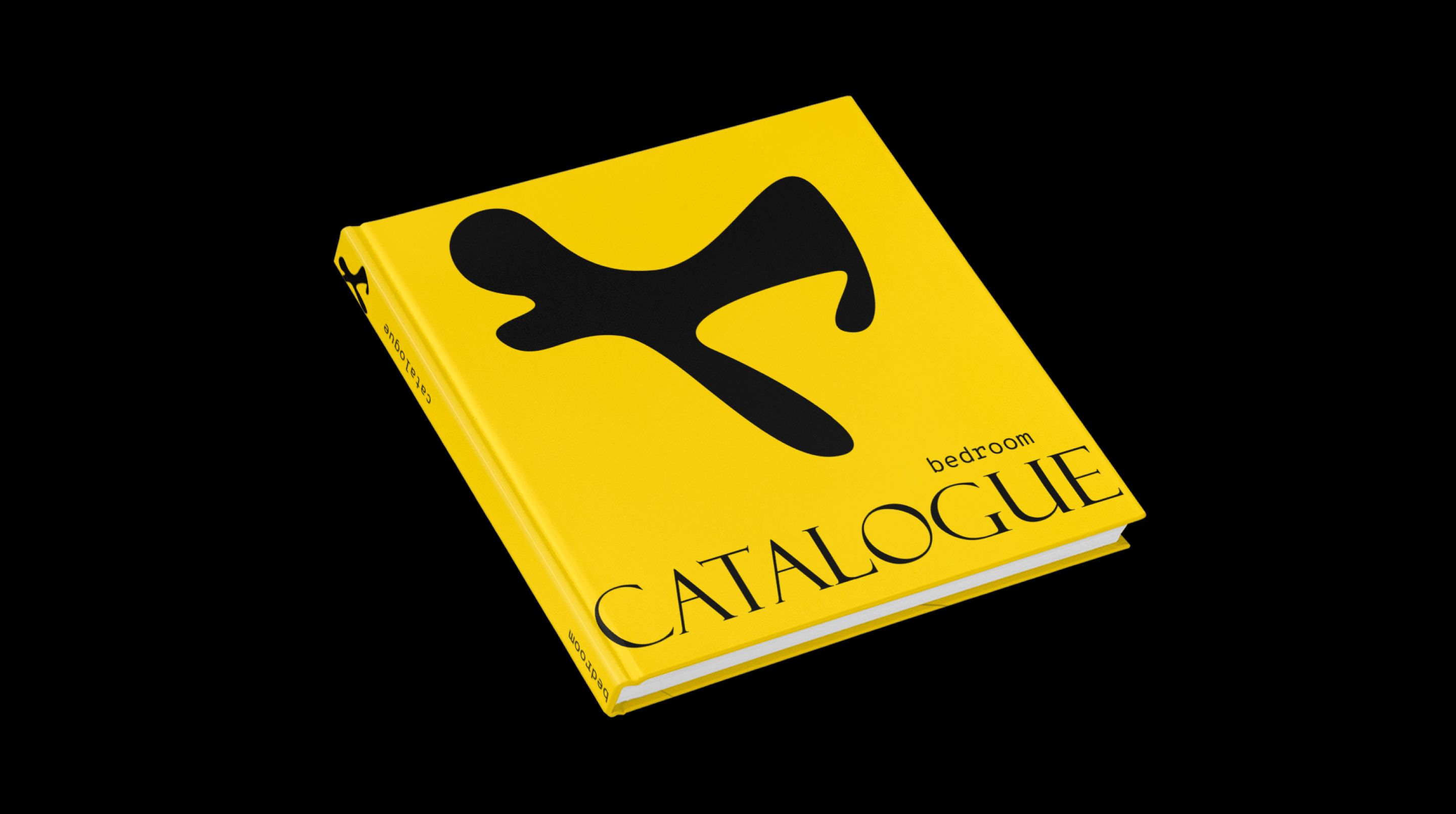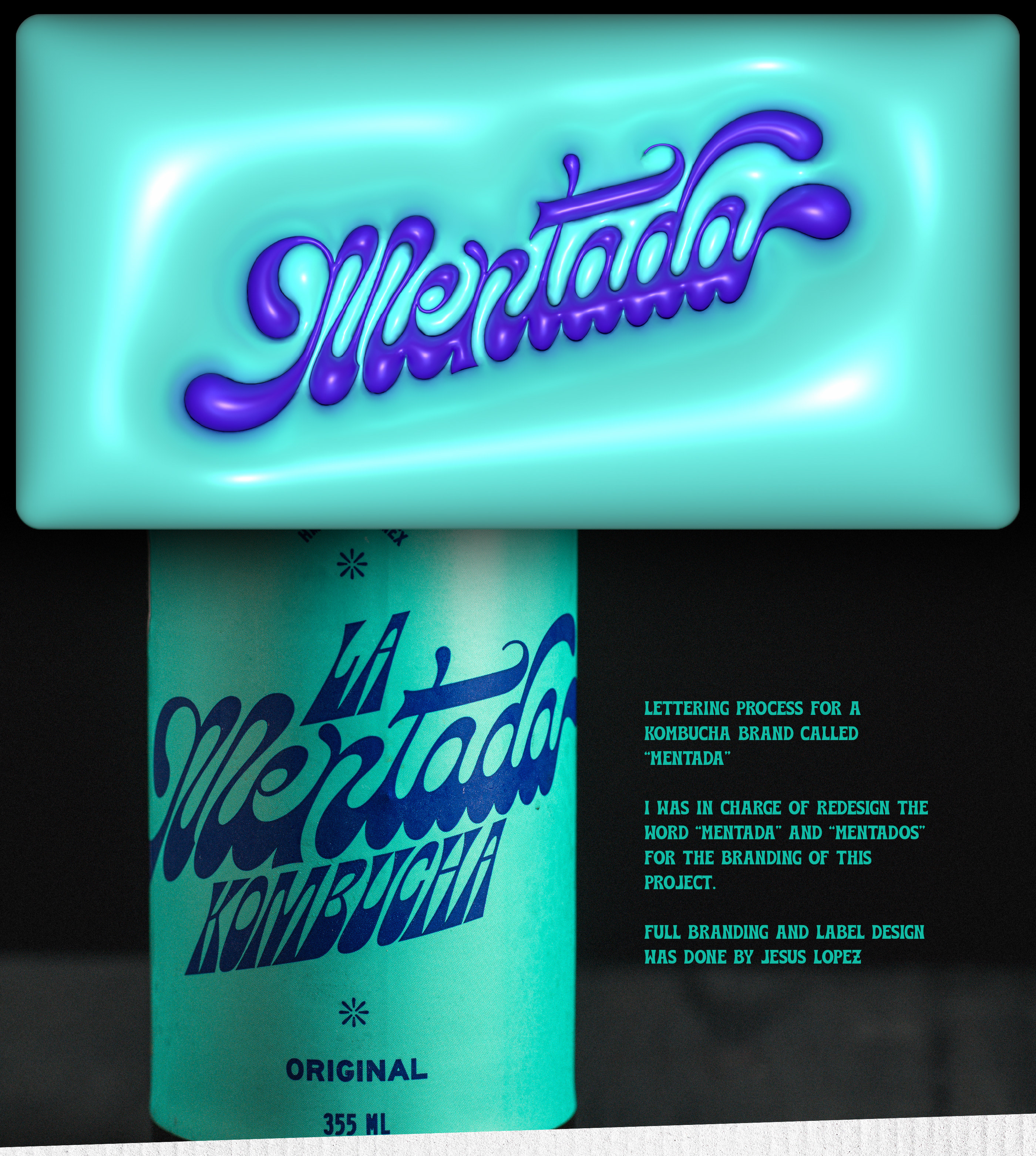“I am Vasas – through and through”
Vasas memory fragments
The image and graphic concept of the Rudolf Illovszky Stadium
5 July 2019
Concept design
Zalán Péter Salát, art director
Zsófia Sztranyák, artist
Co-designers:
Alajos Miklós Hepke
Annamária Tiszka
Manager in charge
László Markovits, President
Vasas Sport Club
Text: Zalán Péter Salát and Zsófia Sztranyák
Photo: Csaba Villányi and Zalán Péter Salát
Retouch: Sándor Rácz
Technique: Horseman L, 4 ✕ 5 inch view camera,
Kodak Ektar 100 negative film
Motto
As objects are collected by gravity, I guard your every word, smile and gesture,
With my perceptions I reforge you in my memory, seared into metal …
Ode by Attila József
The recently built Rudolf Illovszky Stadium is the scene of a special telling of history, which is unusual among sport establishments.
A specific presentation of glorious and sometimes traumatic football history spanning 108 years is rendered in the spaces of functionality – passages, corridors, staircases, the ceremonial hall, lounges, dressing rooms, the press room, everywhere and anywhere where fans, sportsmen, sport managers, media people and anybody else may appear. It is important to note that we cannot talk about a museum, since no scientific work of a museum nature took place during the design process, and large-scale spaces for exhibitions could not be built. The artists developing the concept describe it as a graphic design and creative artistic reaction to the century-old football history of Vasas SC. A Vasas fan would like to see a club that is traditional and proud of its past, holding its great figures in high esteem and providing a firm vision for the future. Our slogan is: Family first. Indeed, we experience belonging to Vasas SC as a family. We would like to have a dialogue between the new establishment, the created visual world and our Vasas family members. It is a chance to end the football club’s recent and several-decades-long lack of success, to confirm our present as well as guarantee our future. Our aim is to reinforce the Vasas consciousness of history and to have an effect on the crowd while managing visitors. The mass of people is used as a psychological tool. Despite the absence of trophies, we would like to promote and strengthen the identity consciousness of the latest Vasas generation. The fundamental principle of the concept is to create spatial graphic design from constructed texts – a fabric of graphic design which renders readable content in manageable proportions, as well as decorates and makes the space aesthetic. Written content of several hundred thousand characters has been used in the building. Actions that cannot be wiped out from memory and micro-stories generating emotions balance the proud moments of the golden age and “traumas” experienced during the period following the political changes. Supporters go through the experience of strengthening Vasas mythology.
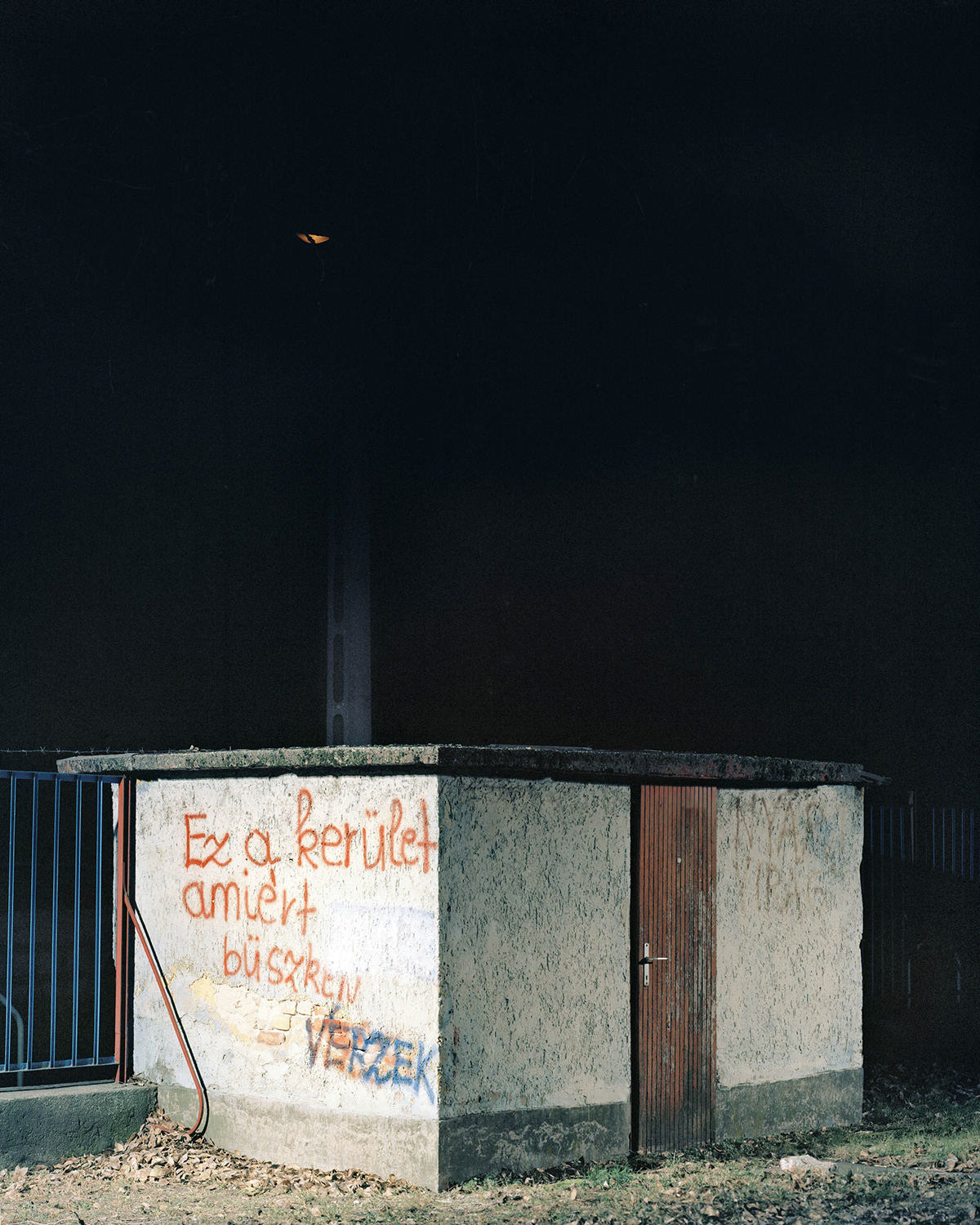

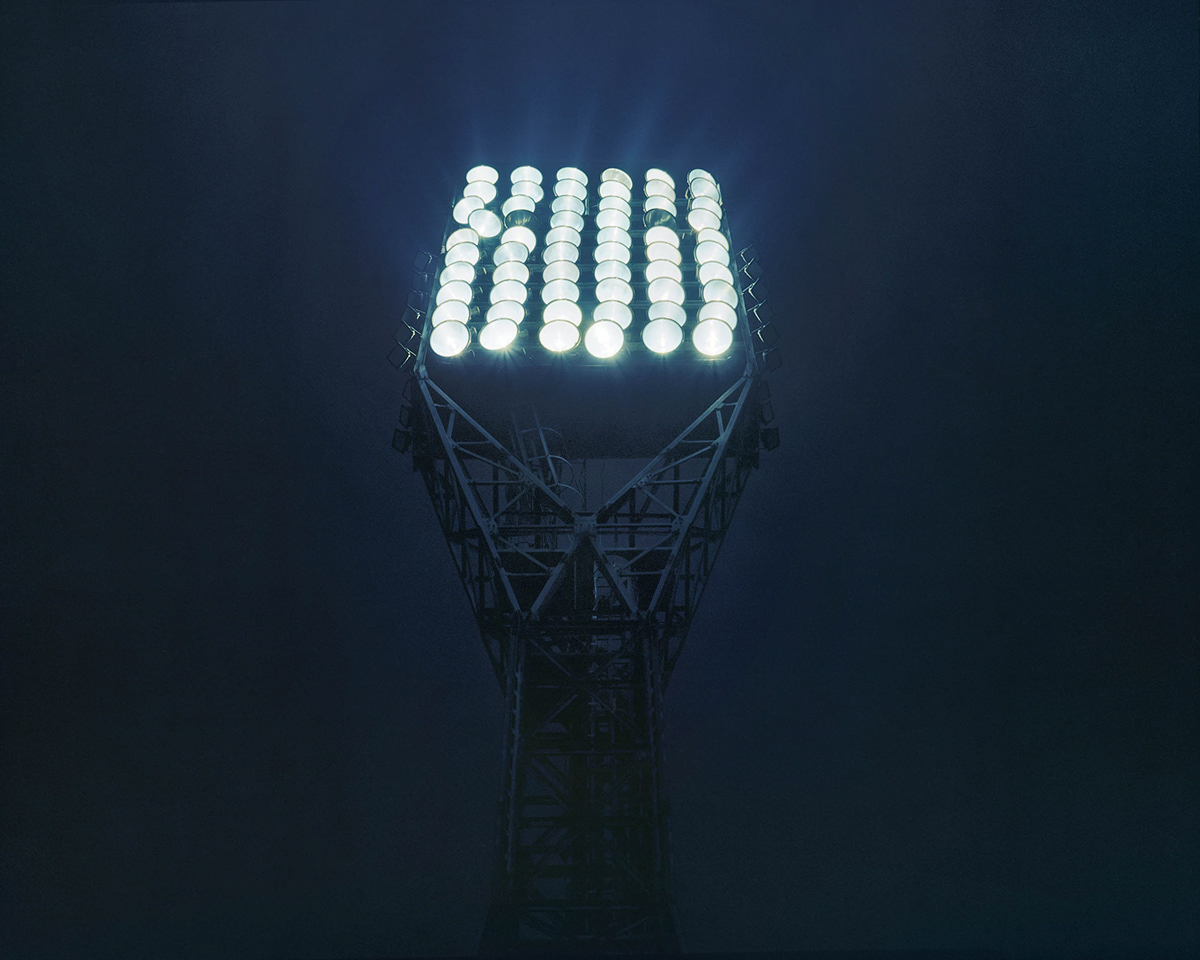





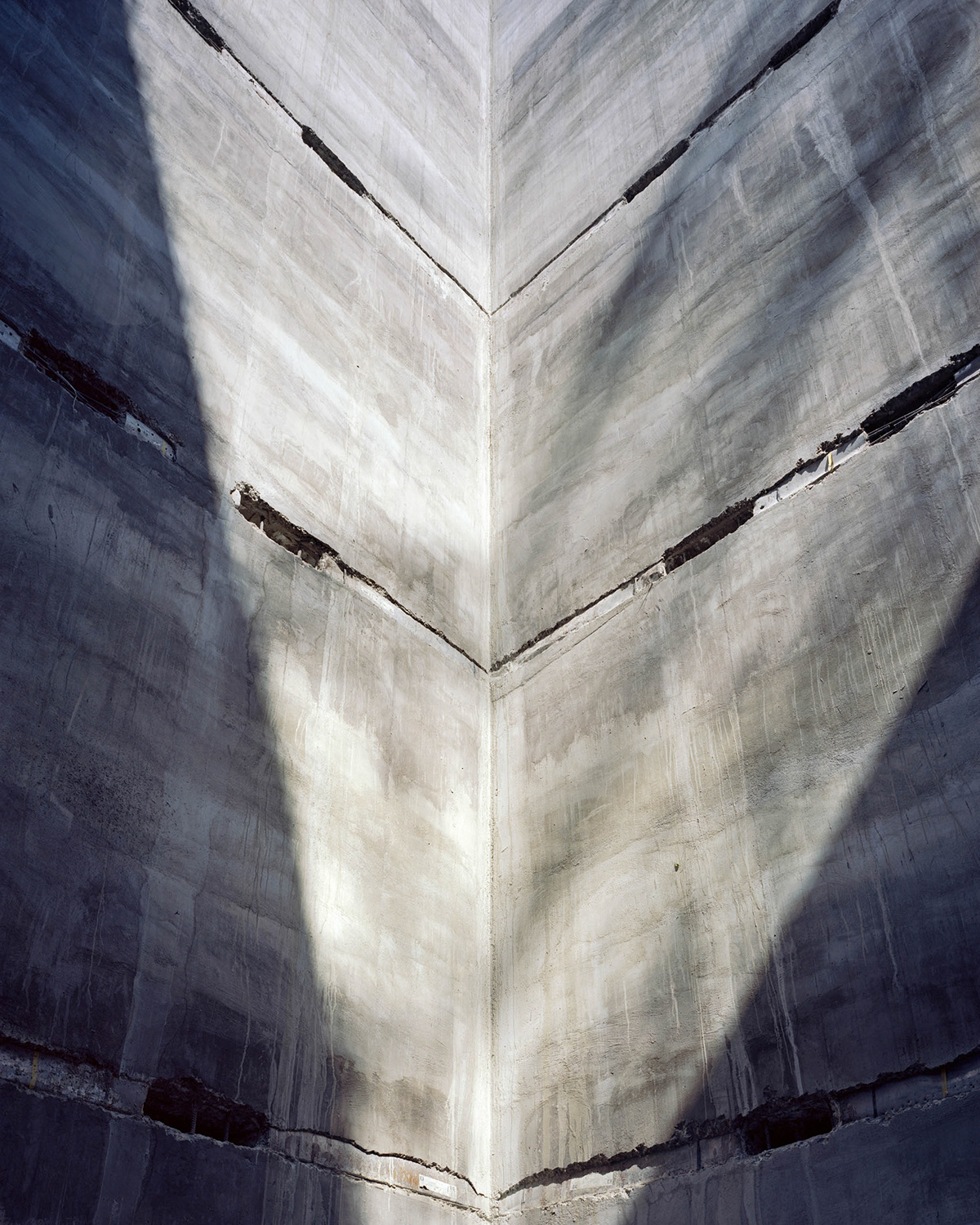
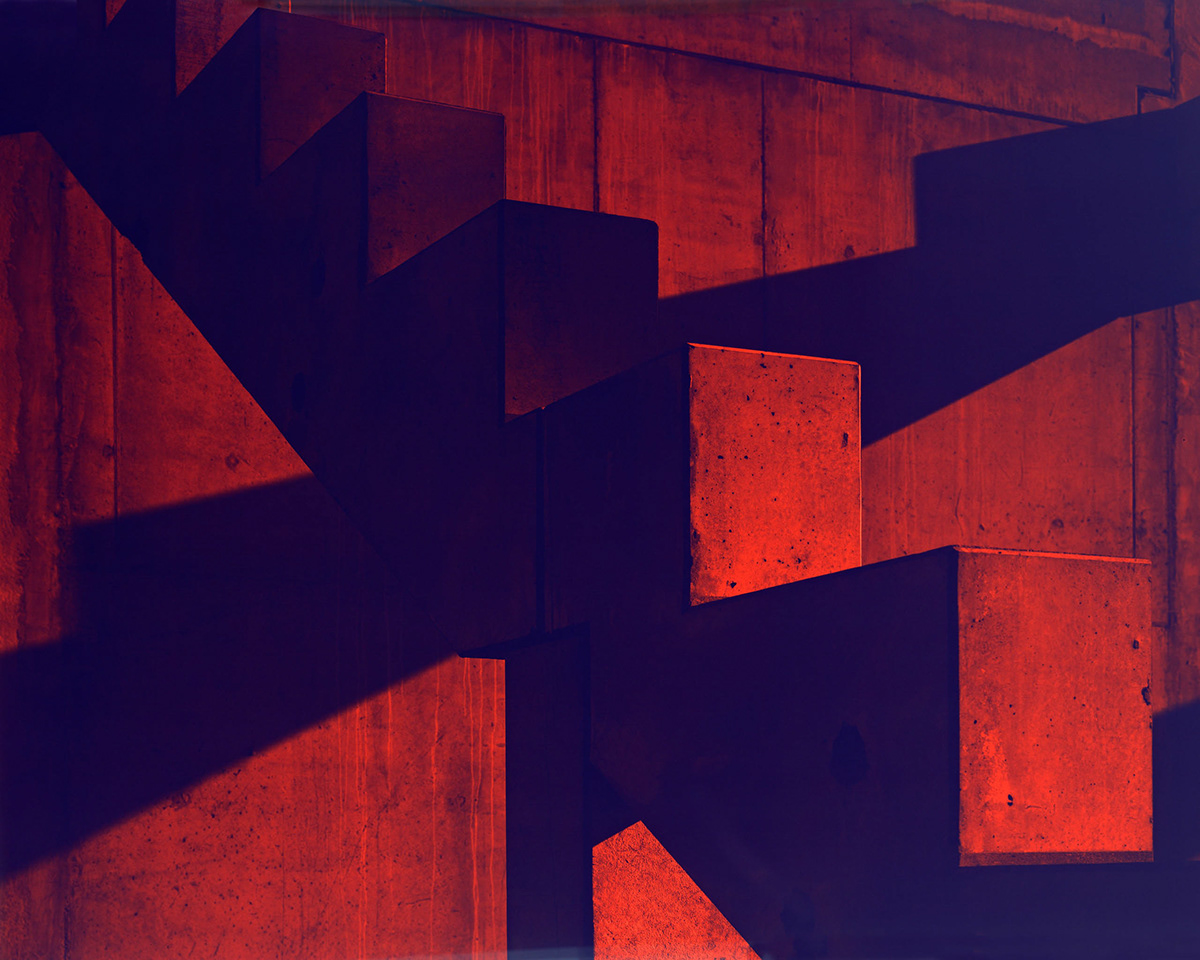
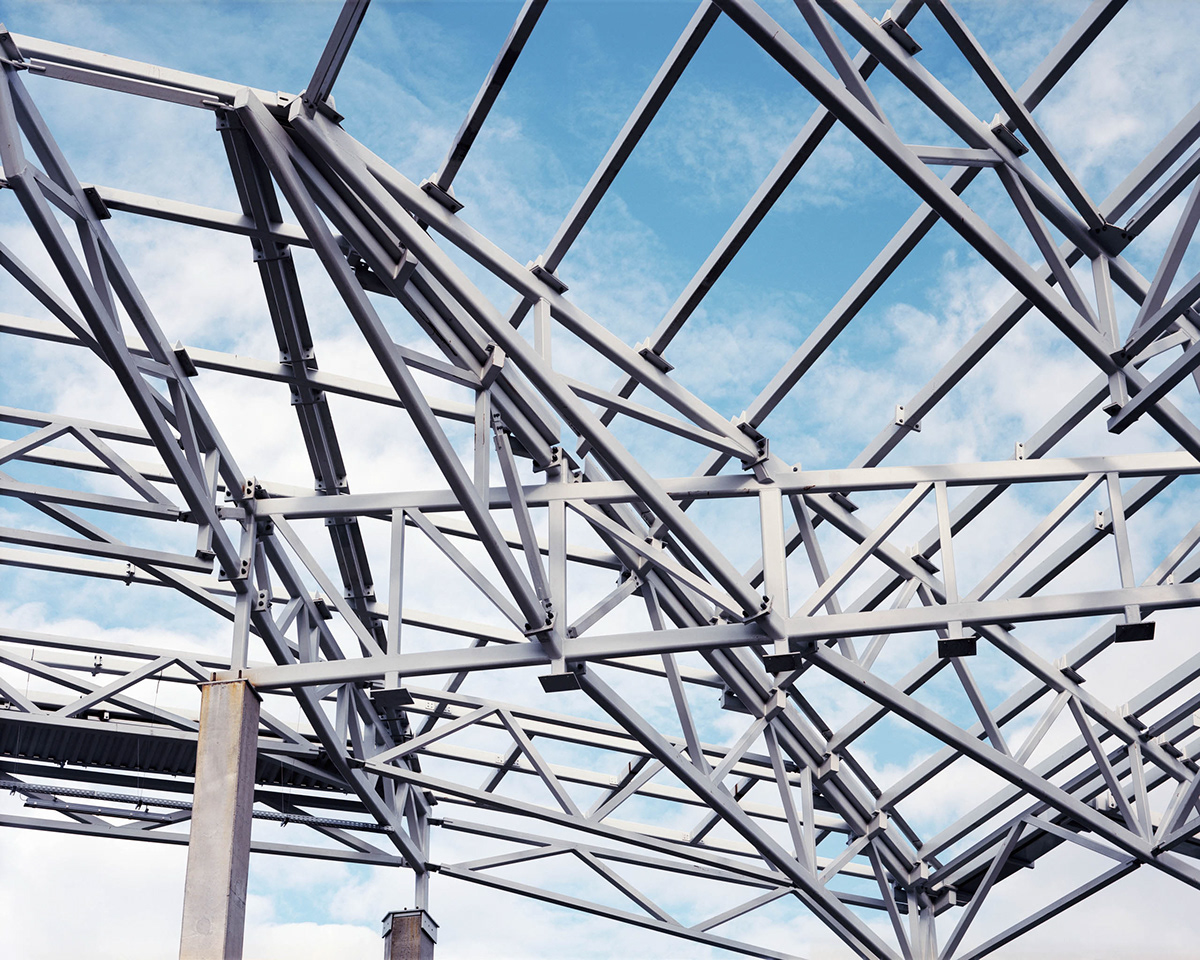

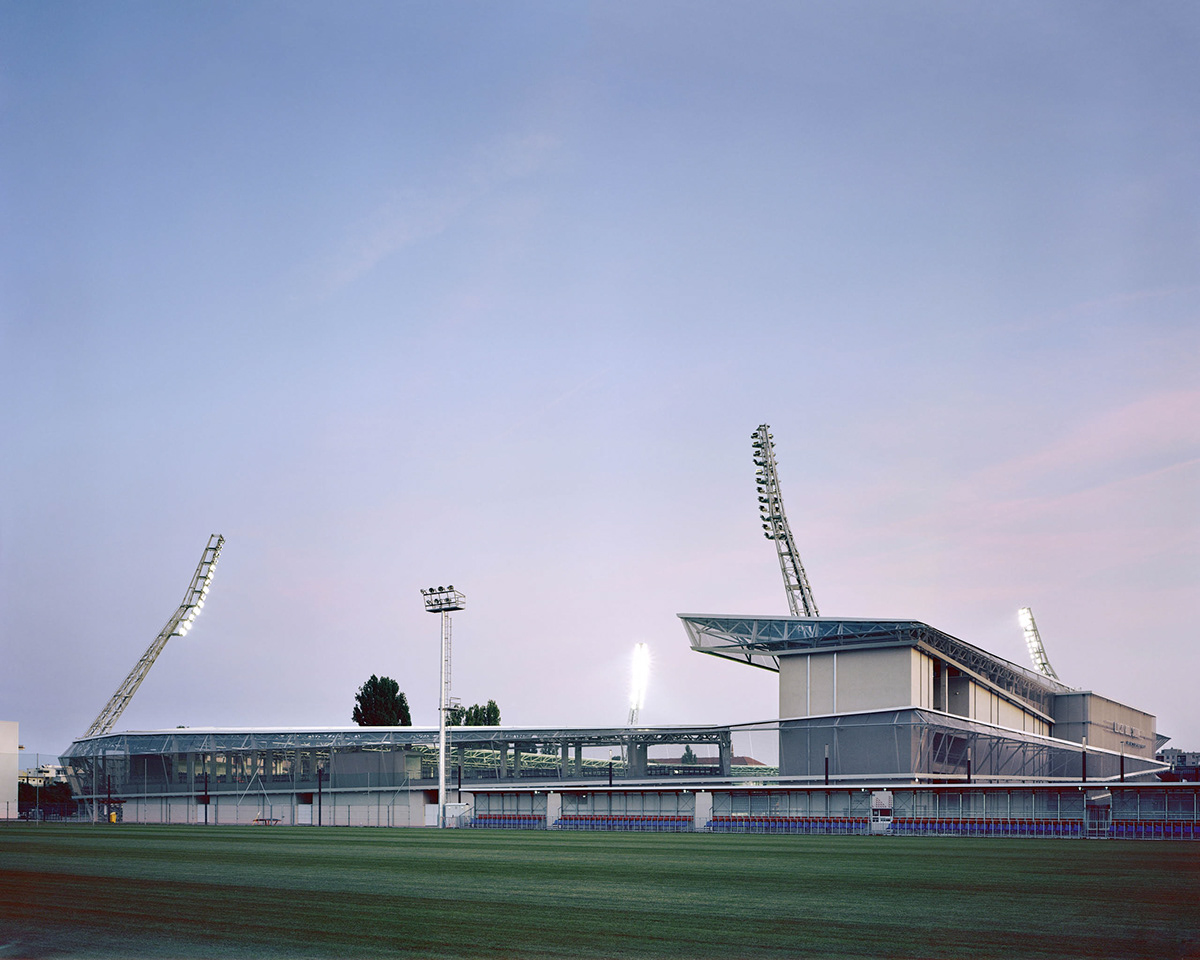
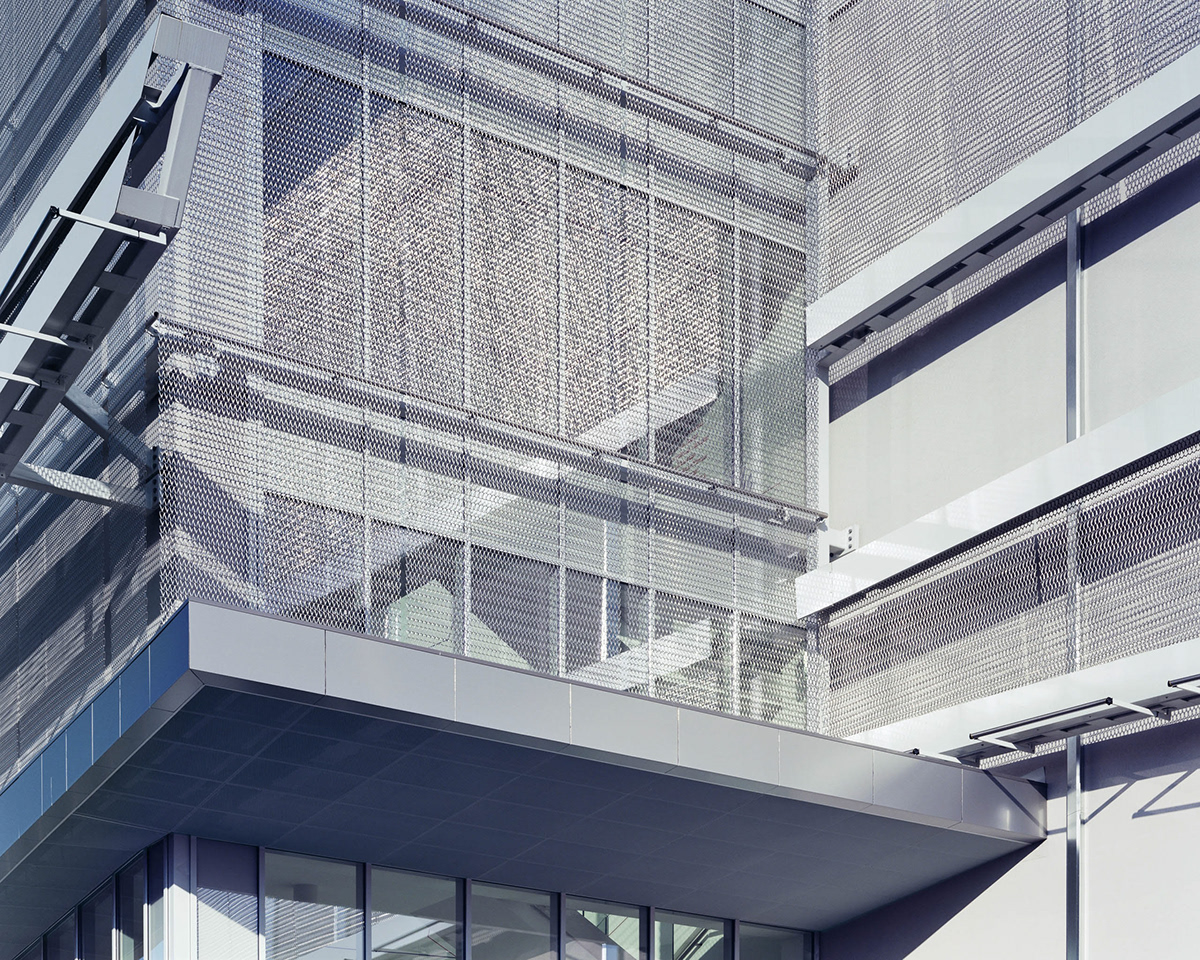
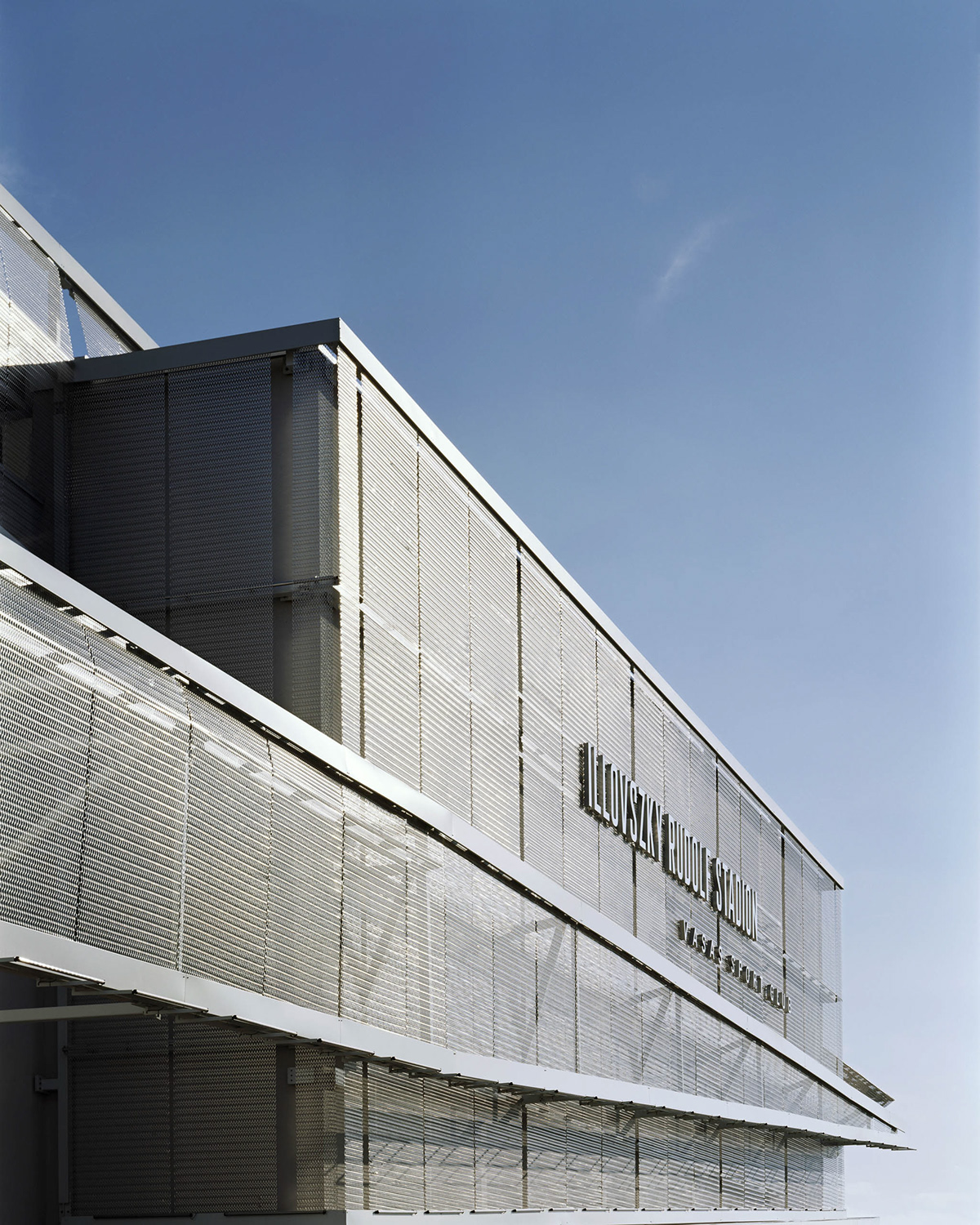
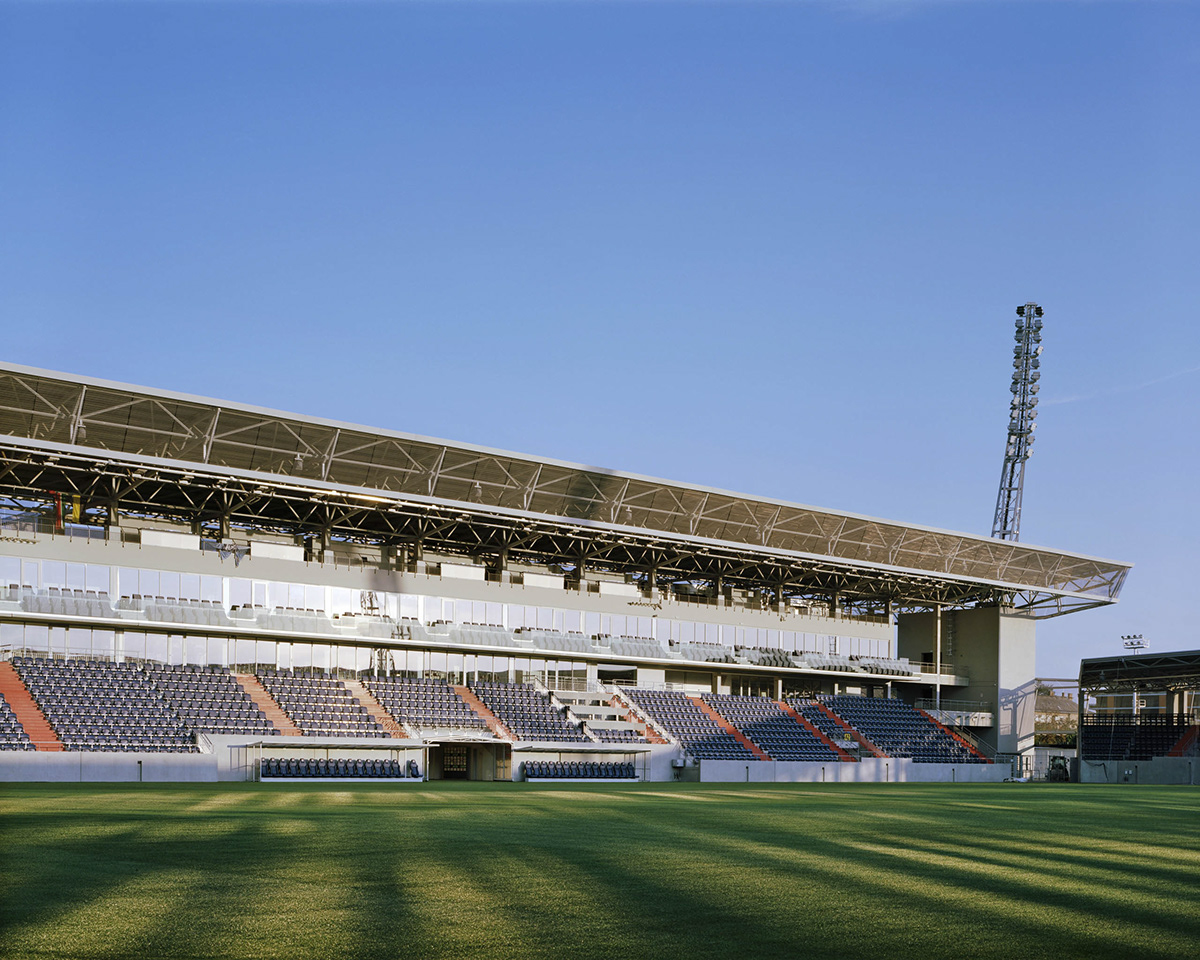
West Stand, main building
Vasas heart and arteries
– Contemporary typographical space installation
The minimalist wall graphic artwork entitled Vasas Heart and Arteries is a typographical system of threads which, starting from the centre of the building, entangles the space of the imposing main building incorporating the West Stand. Besides the Vasas family, the expression “Vasas heart” is often mentioned as the symbol of our attachment.
The heart is the centre of human existence. The organ which controls our body’s blood circulation and ensures life is also the symbol of the human soul. The heart functioning as a pump is the central organ of that circulation. With its rhythmic contractions, it ensures the constant blood flow in both the small and large circulations of our body’s vascular system. Meanwhile our heart is also the centre of emanating love. Anatomy books always show the vascular system in the human body in red and blue. So every human being is red and blue inside.
Vasas Heart and Arteries represents the eternal blood circulation, movement, existence and survival of Vasas SC with tools of graphic design. Thus what has been created is perhaps the largest typographical, somewhat sentimental work of art in Hungary.
Vasas Heart and Arteries also has a different association. The manifestation of belonging to a club means that a mass of fans with different identities have entered into an inseparable eternal bond – a blood treaty of modern times. Changing teams is out of the question!
The heart of Vasas, the epicentre, is located on the wall by the side of the pitch at the Mixed Zone. The red and blue main arteries start from the enormous constructivist Vasas heart towards the right and left staircases, climbing up like tendrils to all the public spaces of the building. It is created from the Lanx module system and the word “blood”, and is designed by graphic designer Annamária Tiszka. It combines the colours red and blue, made from cut letters consisting of five-layered plexi and fixed to the wall.
The basis of the red and blue threads is the Sizmo Line Pro font of Verena Gerlach, who graduated in Visual Communication from Weißensee Kunsthochschule Berlin. The uniqueness of the font is defined by the baseline, which connects the characters as a fixed track and creates a coherent system.
The content of the Vasas arteries is given by selected and composed memory fragments. An unusual cohesion is created between the Vasas history book entitled Pályamű, written by Iván Hegyi, and the built space. Quotes and emphasised parts from the 512-page volume, which tells the story of the Vasas SC’s football team in meticulous detail, appear on the arteries – sections of stories, recollections of tiny episodes and parts of sentences.
The graphic circulatory system includes a string of names of all the footballers who ever played in the Vasas premier league team presented in a typographic module system in the Lajos Baróti Ceremonial Hall. At the same time, it represents as a typographical text the data bank of the premier league Vasas team and the matches for championships, Hungarian and European cups played in Béke and Fáy Streets, as well as in the People’s Stadium. In addition, the installation in the larger, second-floor hall on the way to the children’s play area includes the photo essay The Slumbering Illovszky Stadium taken with analogue technology by means of a technical camera about the old, demolished Rudolf Illovszky Stadium, the circumstances of discovering the Hexagonal Trophy and Ignác Izsó’s exemplary life.
It is not presented in chronological order.
Flashes, fragments and legends.
The system of threads carries the colours red and blue in the built environment, relaxing the mass of hues of the elegant grey building materials, while at the same time it responds to the steel mesh around the exterior of the building. It becomes an organic part of the interior.
Vasas Heart and Arteries is a conceptual artwork, a reflexion on the customs of current stadium construction, yet it involves a pioneering approach which had always been characteristic of Vasas SC.
Vasas Heart and Arteries
Cups, trophies, relics
The presentation of the collected and exhibited trophies, relics, cups, medals, shirts of different periods and documents are all part of the Vasas Heart and Arteries installation, which enmeshes the entire building. The collection, which has been explored with meticulous research and headed by lifetime member Mrs Maya Wágner, presents the greatest successes of the Vasas football team’s history. The most brilliant object, the bronze mounted statue of the Hexagonal Trophy, turned up in the Hungarian National Museum after 40 years of lying hidden. It was won by the then undefeated champion team in South America in February 1967 and is exhibited on the second floor alongside the original shirt worn by Kálmán Mészöly and the football used at the Hexagonal cup in Chile, signed by Pele.
The original Mitropa Trophy, which Vasas won six times, is displayed in cabinets placed in the broken-through walls on the ground floor. It is for ever owned by the last winner, FK Borac Banja Luka. Borac lent the original to Vasas SC for half a year and agreed to have a genuine copy made of the trophy.
The copy of the Hungarian Cup made by Vasas for preserving the memory of four victories involving the Cup and the Costa del Sol Cup, nearly a metre tall, which Vasas won by defeating Real Madrid and Málaga in Spain in 1970, are also displayed on the ground floor. The enormous medals in the space symbolising the six championship titles (1957, 1961, 1962, 1965, 1966, 1977) appear on each level of the main building. The shining metal installation is also a cabinet which displays an object connected with the champion team: Pál Berendy’s football boots from 1961, a Florentine bronze statue of a lion from 1962 and a silver plate, which the champion team of 1957 received on the occasion of the European Cup against Real Madrid. Béla Várady’s silver boots are displayed in the medal commemorating the 1977 league champions. The cabinets and the installation of the exhibition were created by Tamás Bartha and Árpád Hunor György of Heonlab.
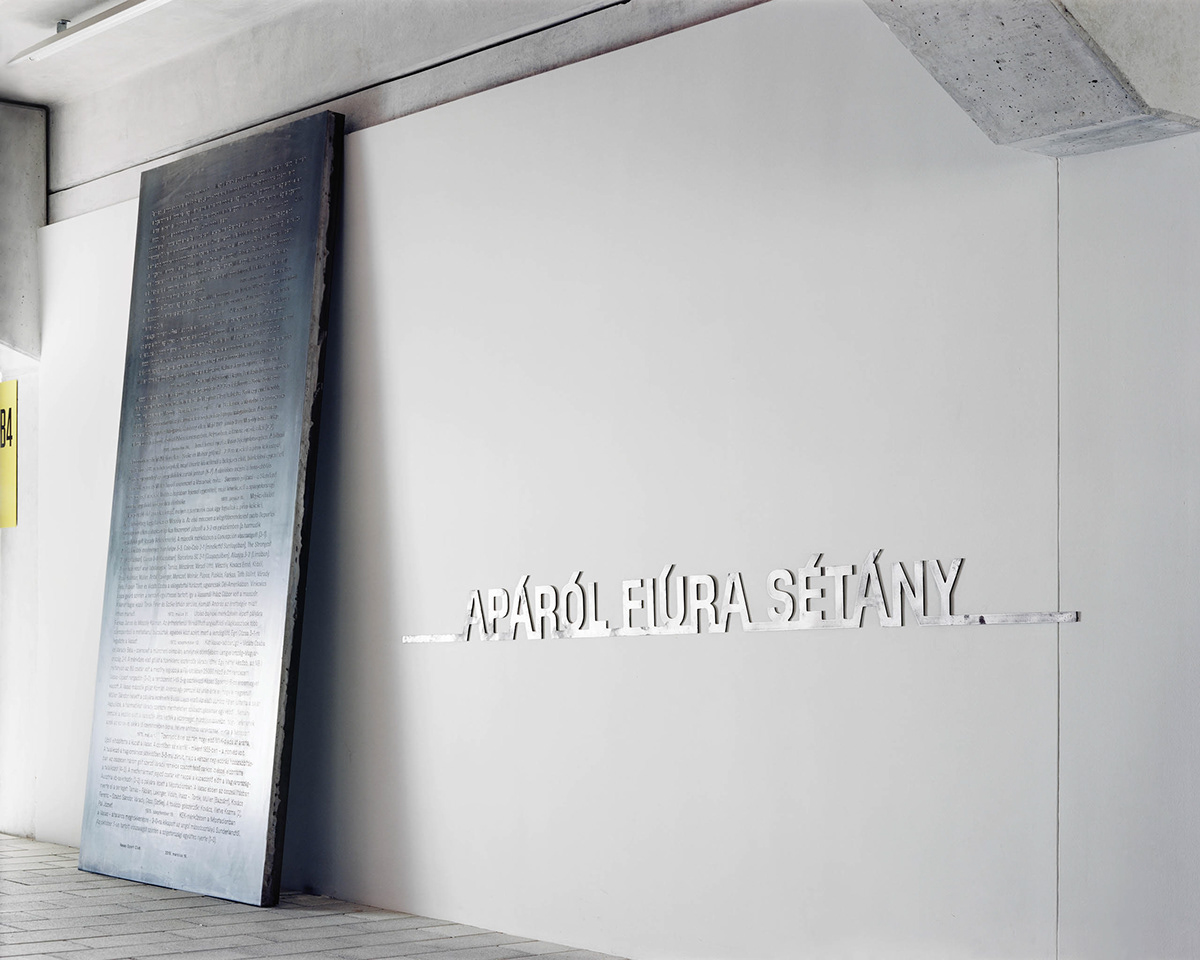
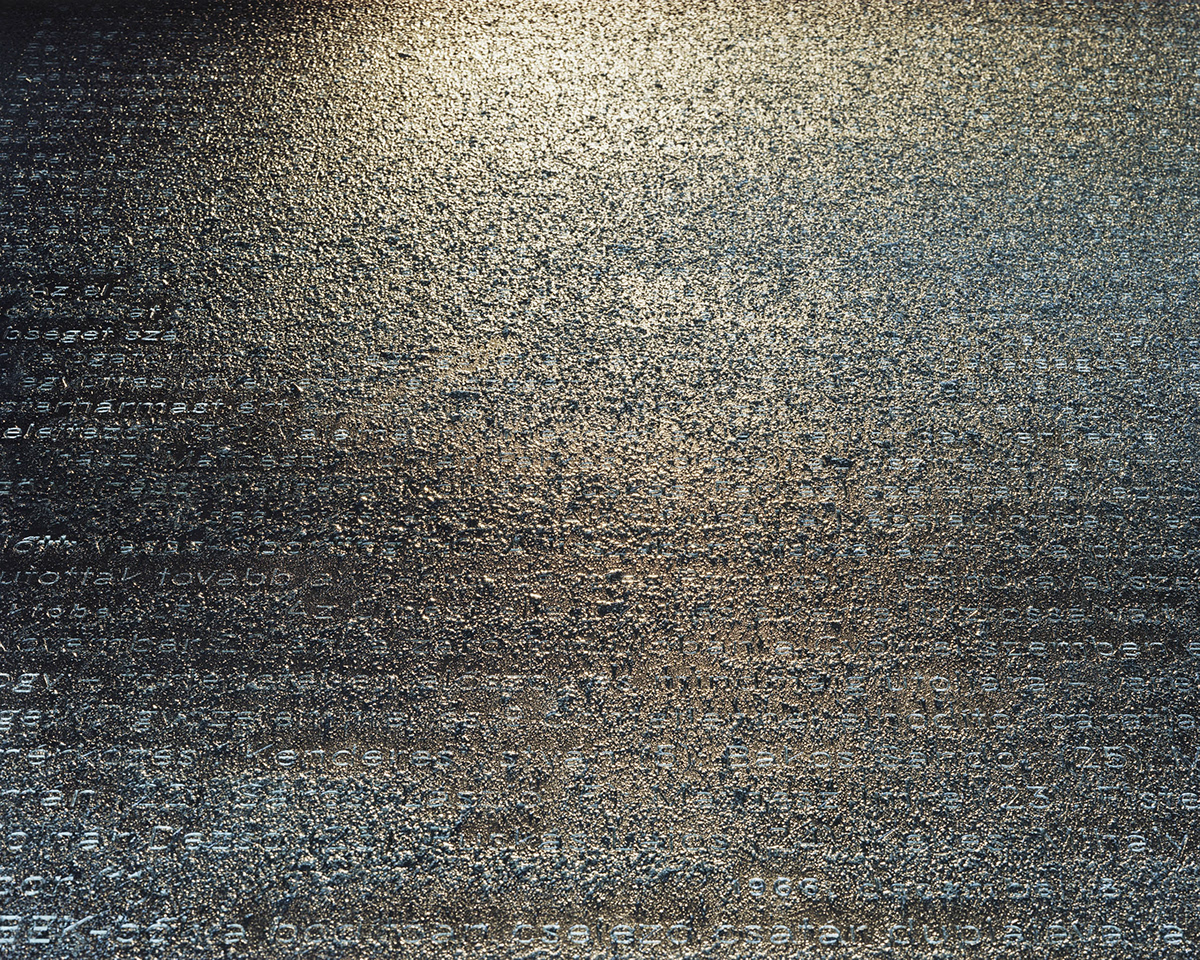



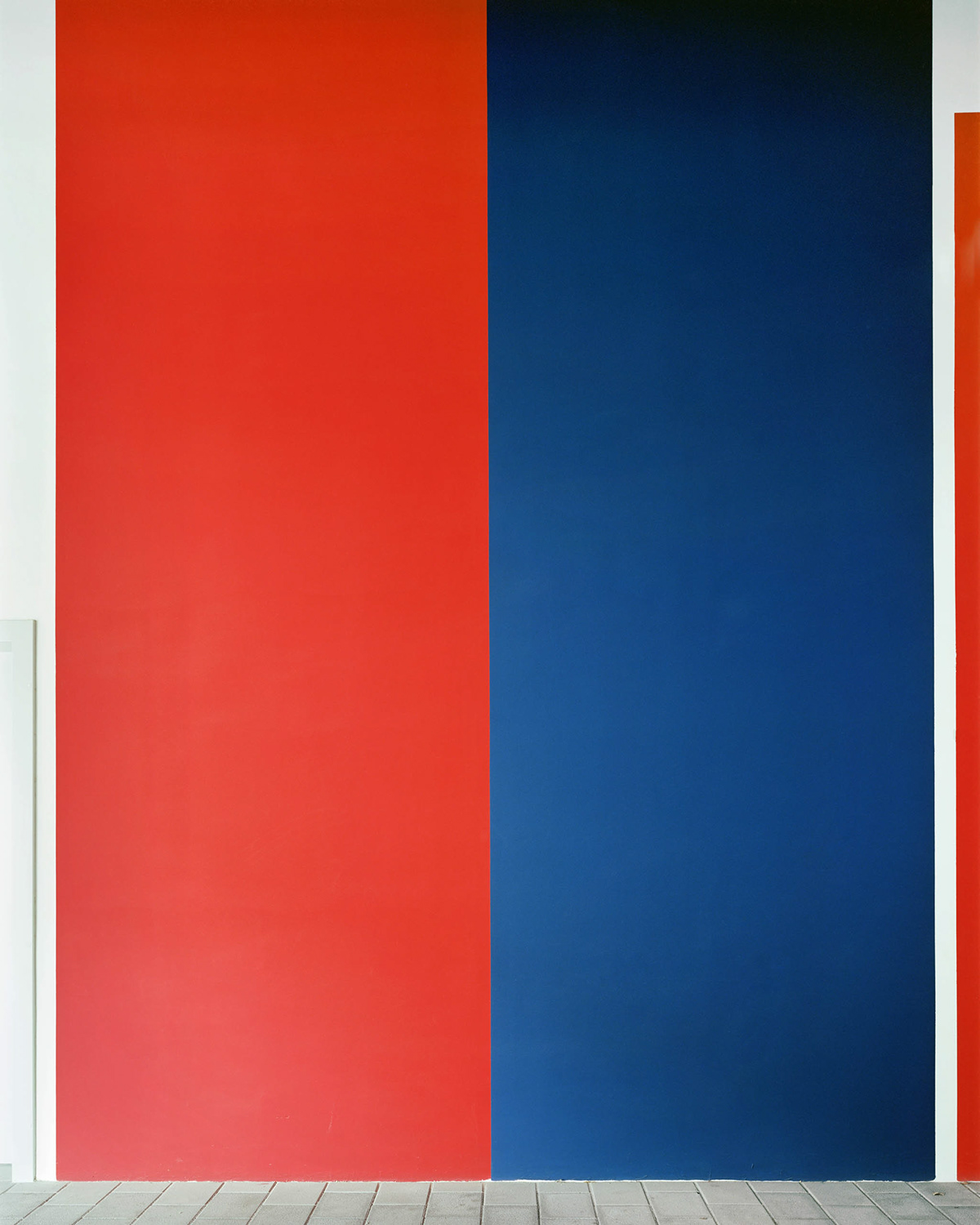
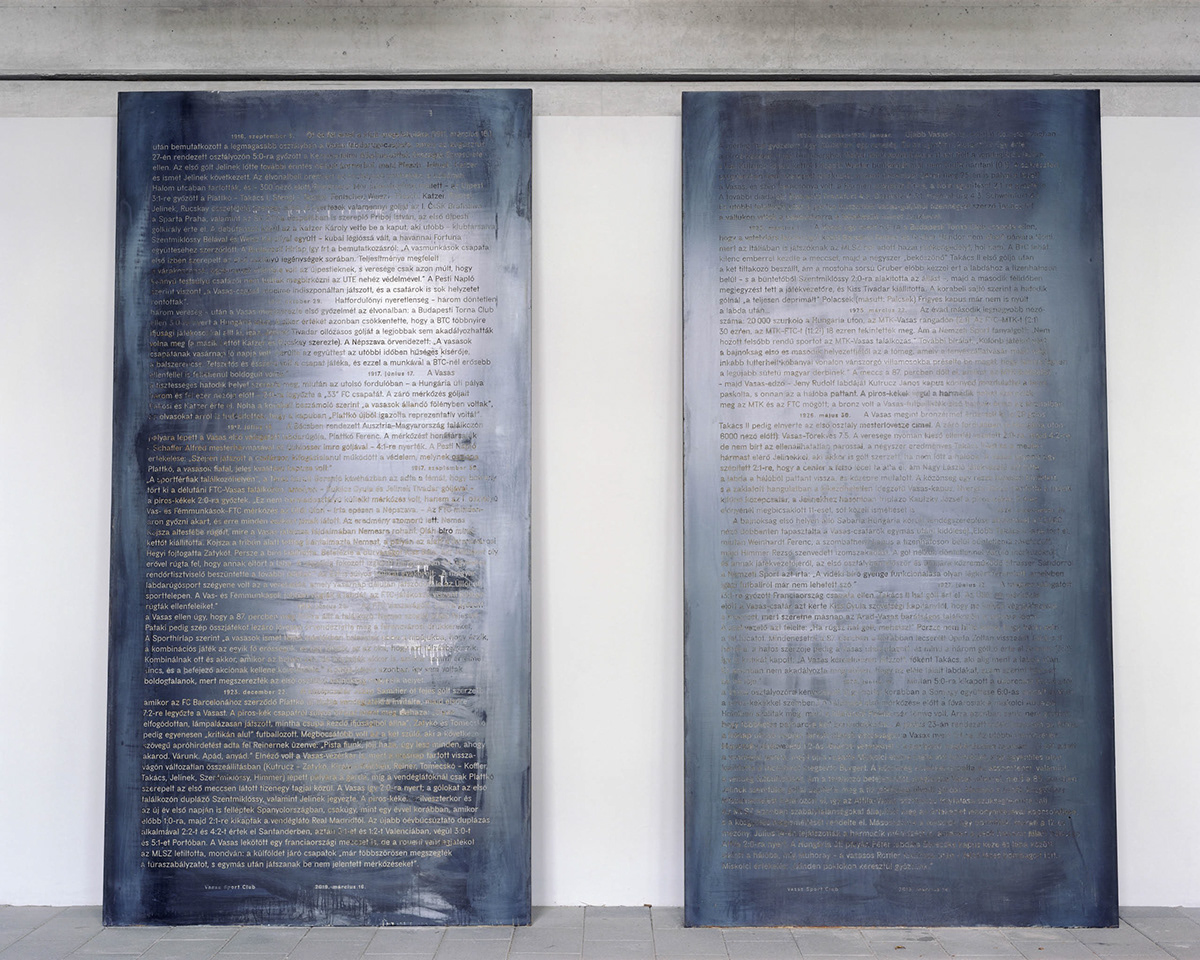

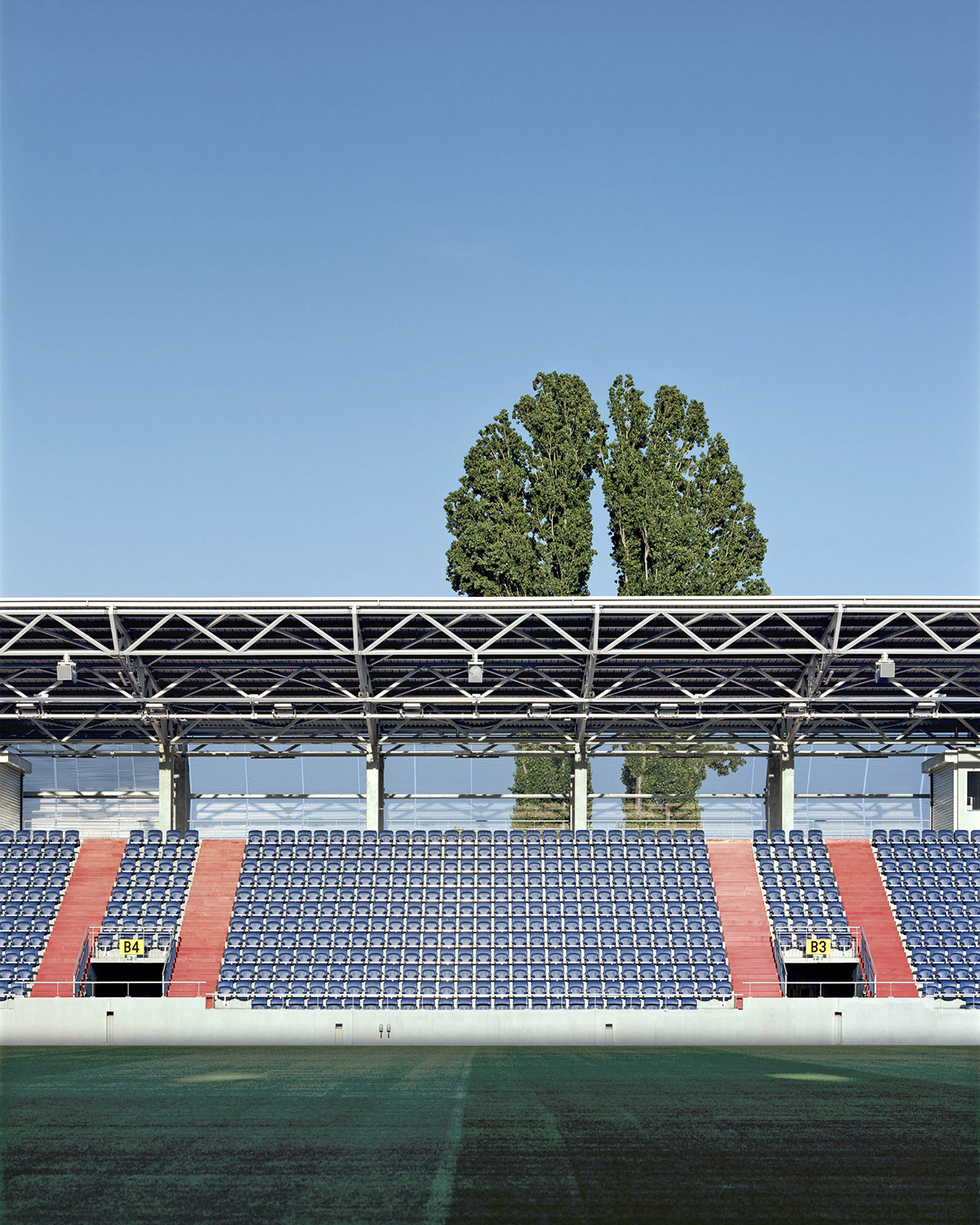
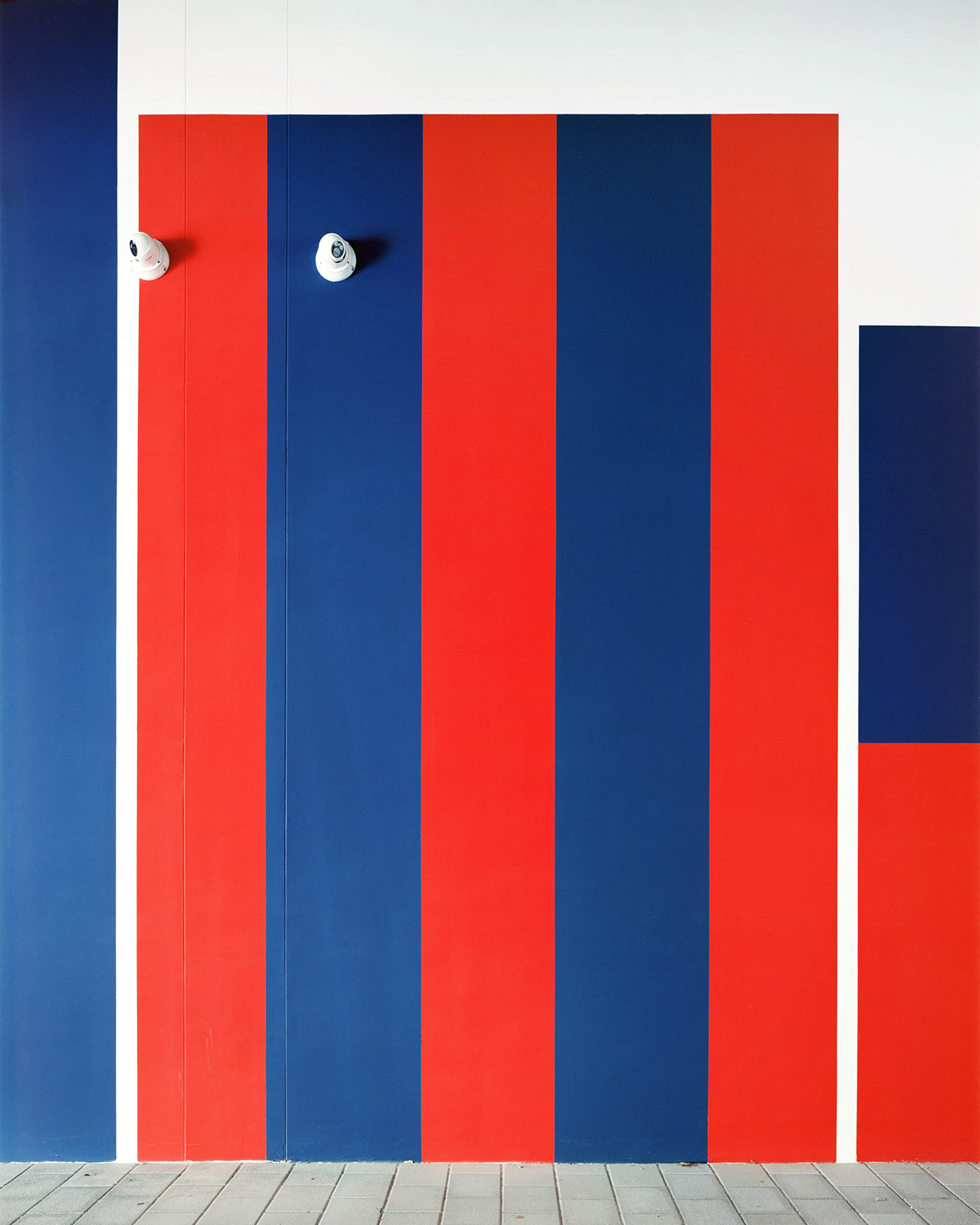

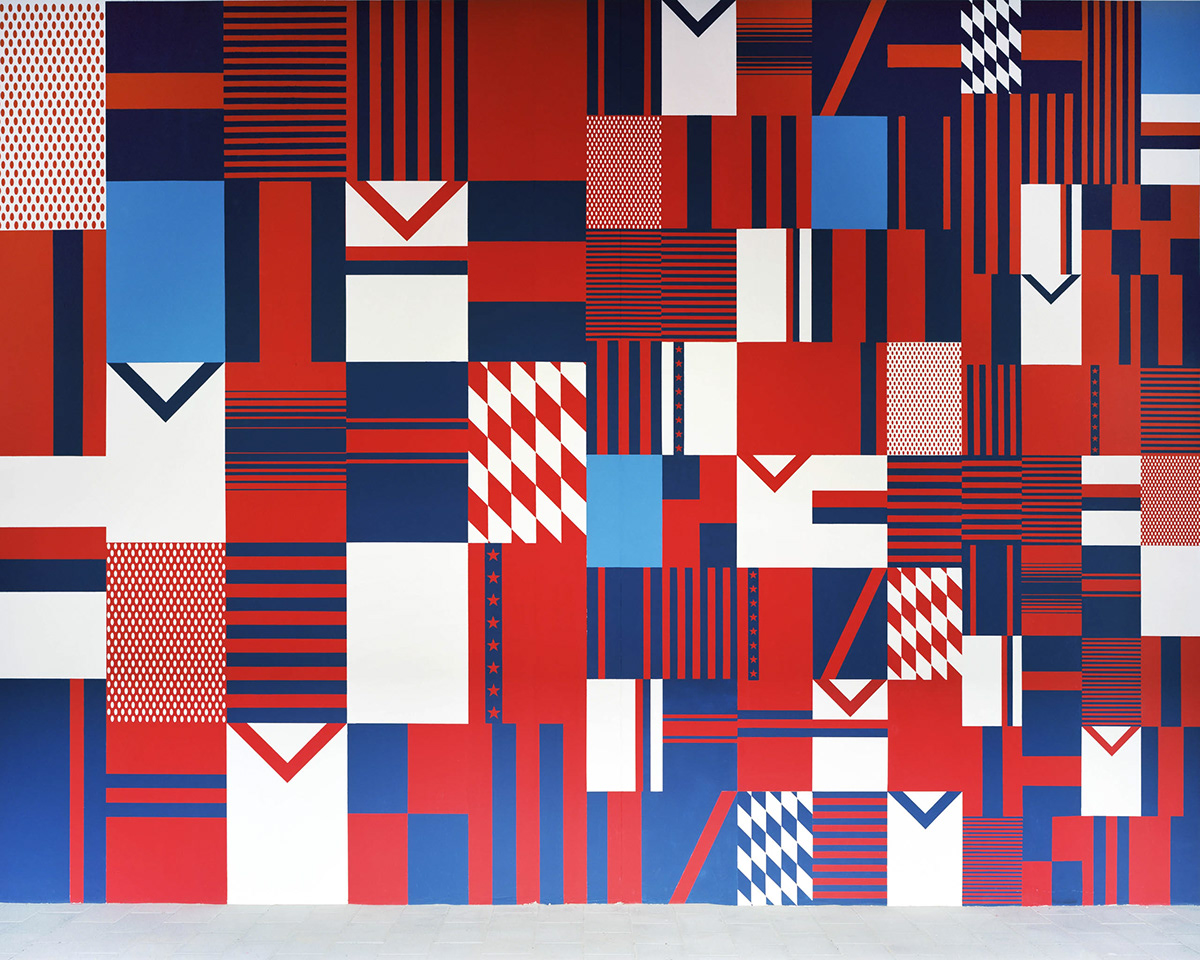



Red Tower/Blue tower
Magdolna Trapezium
– Pillar of the founding fathers and eponymous legends
There is a building in Magdolna Street in Budapest’s Joseph Town. It is the headquarters of the Vasas (Metalworkers’) Trade Union, the temple of metalworkers. It is an iconic Art Deco building designed by Béla Tauszig and Zsigmond Róth in 1928. It is the pride of metalworkers and is still owned by the Trade Union. The head office has “an external classic solidity, which emphasises that this new facility the capital and labour movement have gained serves those who shape iron blocks with their muscles”. According to the principle defined by the leaders of the Metalworkers’ Trade Union “the construction is exempt of luxury”. In its time the building looked specifically modern. The ceremonial hall is the most imposing part and is decorated by leaded glass windows designed by artist Ferenc Kopp, who studied in Miksa Róth’s workshop. These windows are not the usual stained-glass windows: the largest ones render the allegorical representations of fire, light and power, the smaller ones are symbols in glass of the ten different metal skills. The geometrical decorative element on these glass panes is a spatial trapezium. Re-formed, this shape, a graphic sign, is used in the towers representing a monument to the memory of our eponymous legends. Thus the original founders of Vasas SC, the Central Federation of Metal Workers, and the location where the history of the sport club is rooted are remembered with this minimalist gesture.
So the spatial trapezium reminds us of the founding ancestors. The brightest stars of Vasas appear in the evocative space that extends upwards. The geometric shapes appearing as wall decorations float loosely in the space. The stylised trapezia based on Ferenc Kopp’s design are represented transparently, and thus the motif is made light and airy.
The trapezia keep expanding upwards towards the space full of light and when they reach the top level they become so huge in the space of the portrait gallery that visitors can step in among the trapezia, which even reach over the space. This expanding process gives visitors the sub-conscious sense that those who are portrayed are rising to great heights. The monumental portraits etched with drypoint technique by graphic artist Zsófia Sztranyák invite us to a journey. The light and shade of the rhythmic barbs bring to life the facial features of legends, sometimes sharply sometimes softly. Unfolding into parts the trapezium turns into lines, thus adapting to the threads of arteries that climb like tendrils from the main building.
The biographies belonging to the portraits are presented together one level below, within the framework provided by the trapezium. This is the “Vasas reading room” where the biographies of our eponyms are documented and recorded. What does the Magdolna Trapezium express?
– The shape of the trapezium upside down rhymes with the most important motif of the club’s crest, the letter V.
– The spatial trapezium has six sides and six is an iconic number in Vasas – the six sides of the geometrical solid refers to the six championships the club has won.
– The trapezium is a platform, a pedestal for the best to stand on, and on which the most valuable items are exhibited.
– The geometry of the trapezium can incorporate the image of a heavy metal object, the anvil.
– The angles and spans of the trapezium conduct a dialogue with the architectural concepts of the new stadium and are attuned to the design of the decorative mesh surrounding the four stands.
– The giant portraits depicting the eponymous figures were etched by Zsófia Sztranyák on such trapezoidal “metal canvases”. We worked with the geometry of trapezia from the beginning.
– The Magdolna Trapezium is a geometrical shape that can be interpreted subjectively. We can perceive it in different ways, just as we can interpret the scene of a match differently.
– Flares which are of a trapezoidal shape were in fashion when we achieved our greatest success. A fan remembers it in terms of football: “When Uncle Rudi wore flares instead of a track suit we won.”
Silent vibes
– Etched portraits of legends and fragments of events
Time and remembrance are important elements of reliving events. At the same time remembrance is also a series of forgetting. The details of events that were layered on one another are eliminated and a sound, a gesture, a smile or the outlines of a moving foot turn up in our memory. Although these days the possibilities of visual representation can help us, and that such possibilities are expanding, despite their incredible amount, it is still true that certain images may become cultural icons, while others are forgotten soon after seeing them. The etched portraits of legends who gave the name to different sections and events fuse this varied past articulated by successes and nadirs into a large and homogenous past or homogenous moment.
The material of the etchings is a special folded composite plate for outdoors on which the iconic representations and the lesser known fragments of events from the past were directly etched with the drypoint technique. Each image is dominated by a metallic, grey obscurity. The facial features, outlines of objects and complex shapes are rarely sharp and often almost completely undistinguishable. The rhythmic play with light and shade of the barbs created by etching makes it possible for us to perceive the points of the image sometimes sharply, sometimes softly and sometimes entirely blurred.
The etchings invite us to a journey, a journey into our memory where our images are only frayed, like a mosaic, and never appear in their entirety. The representation is reality itself, the essence of reality, which is engrained in the metal canvas and in our memory forever evanescently, yet sharply.

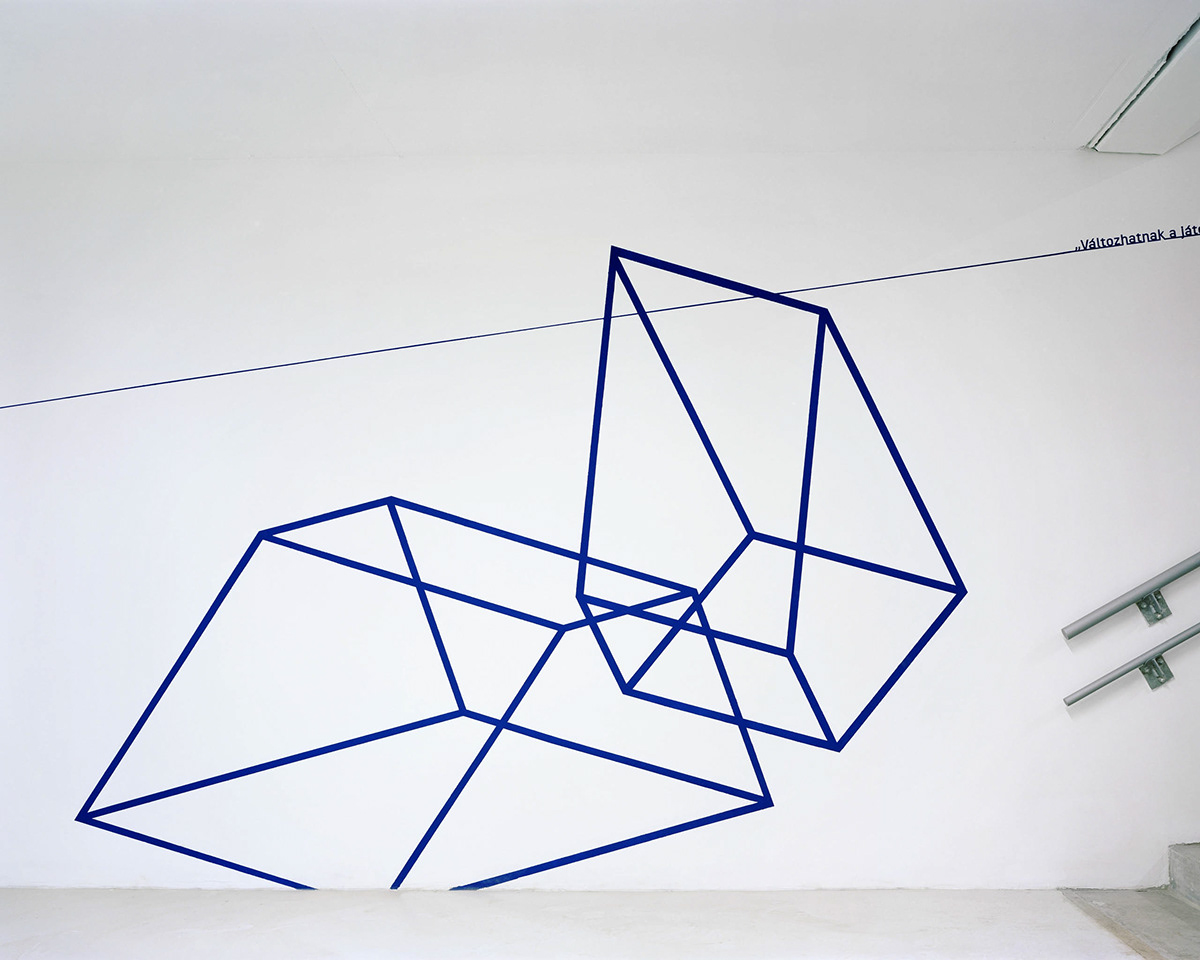

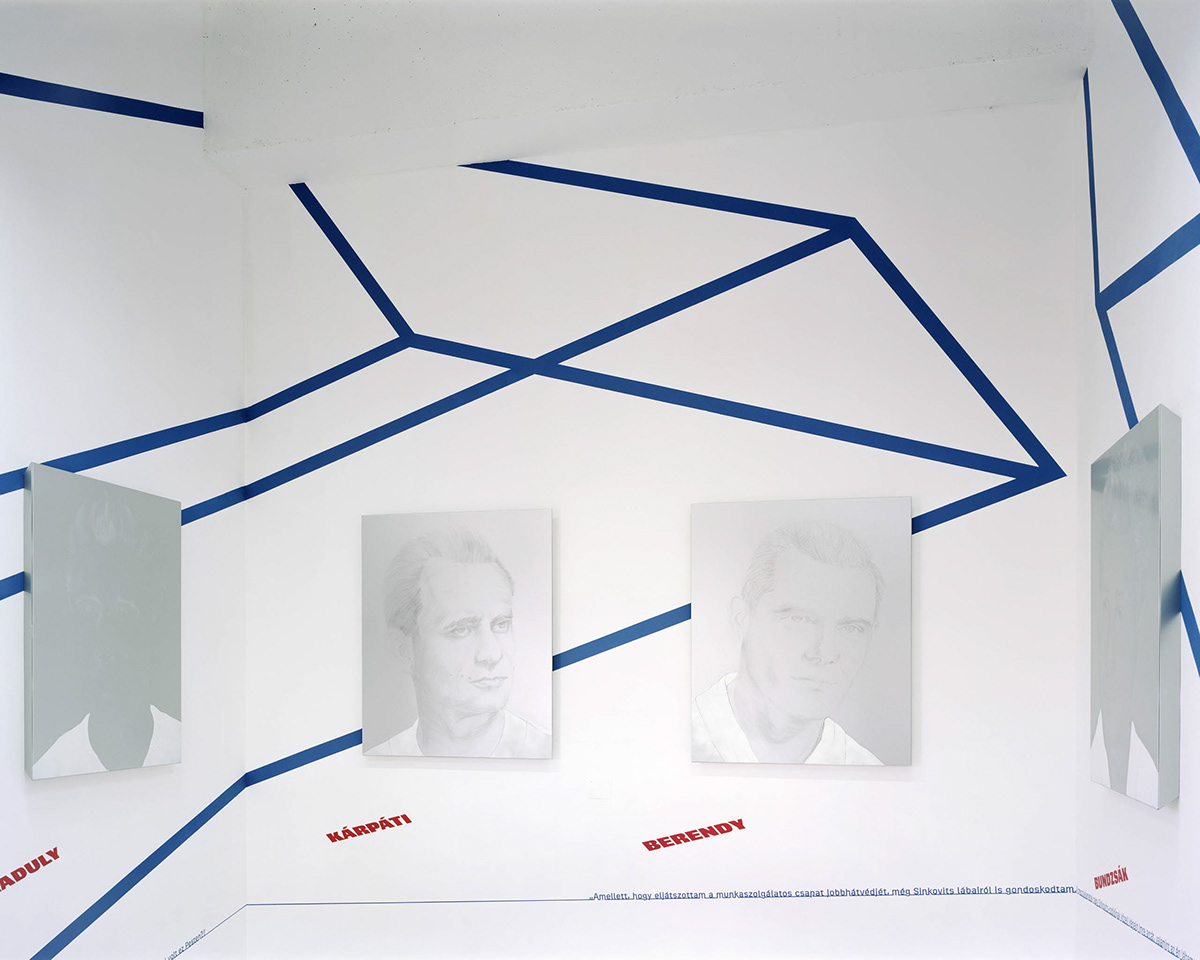
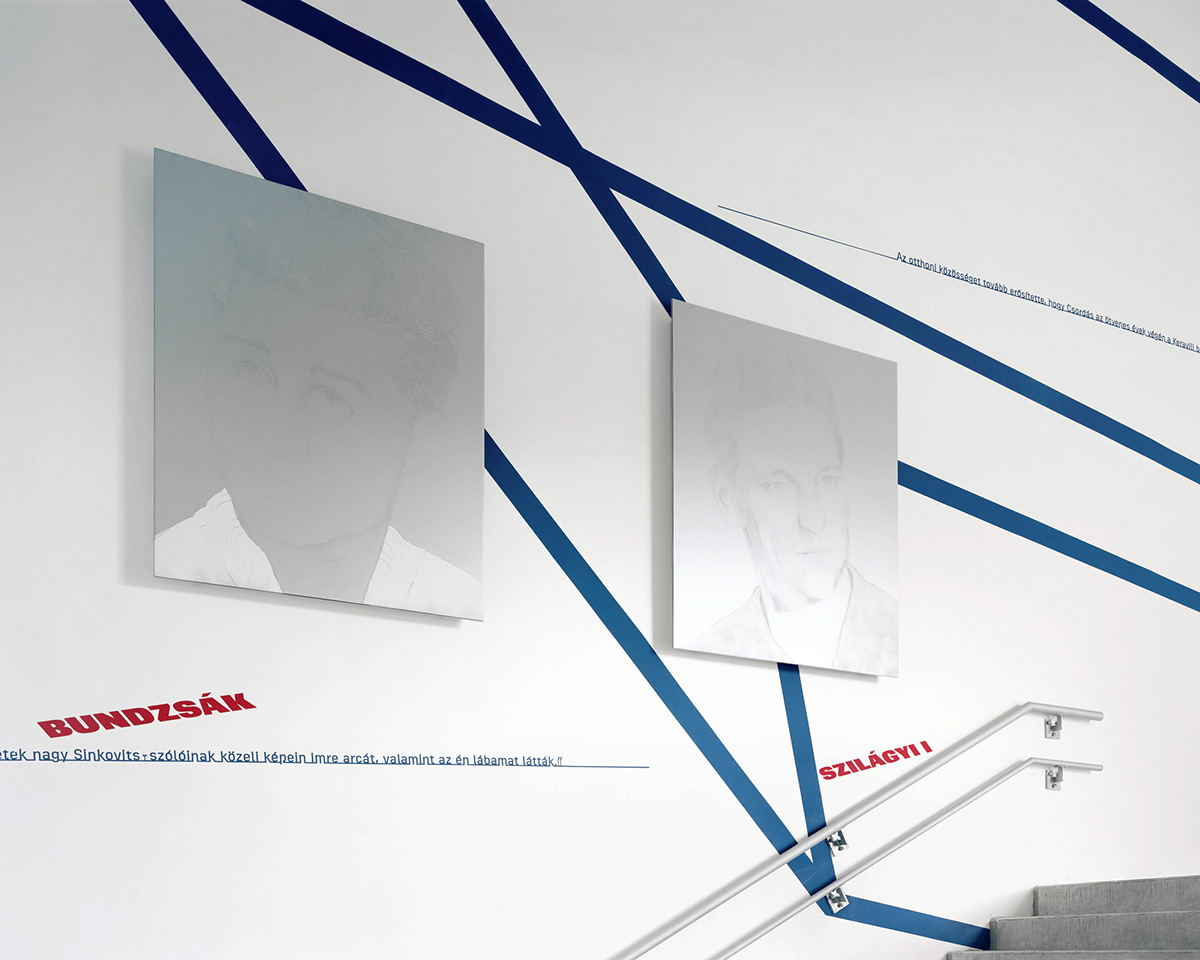
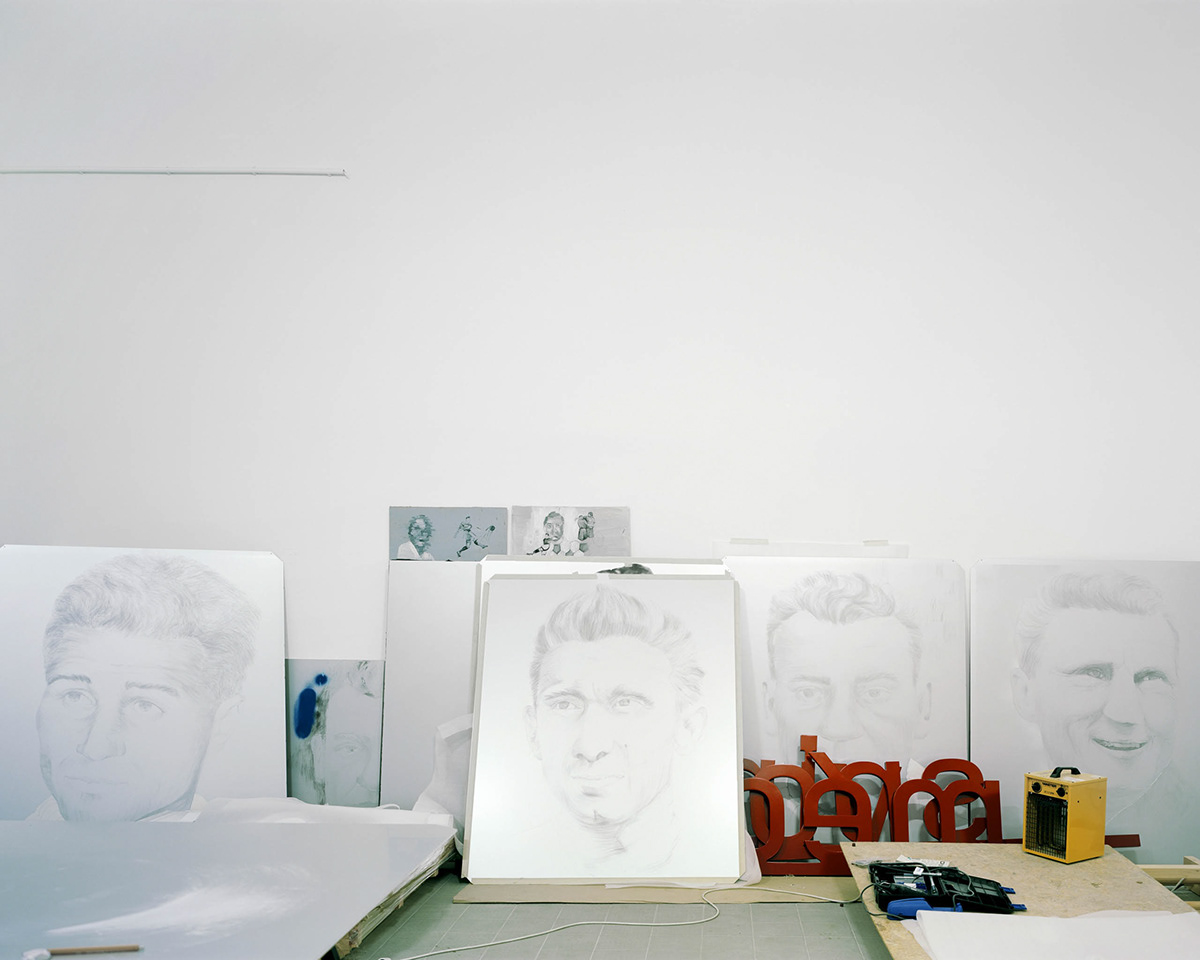



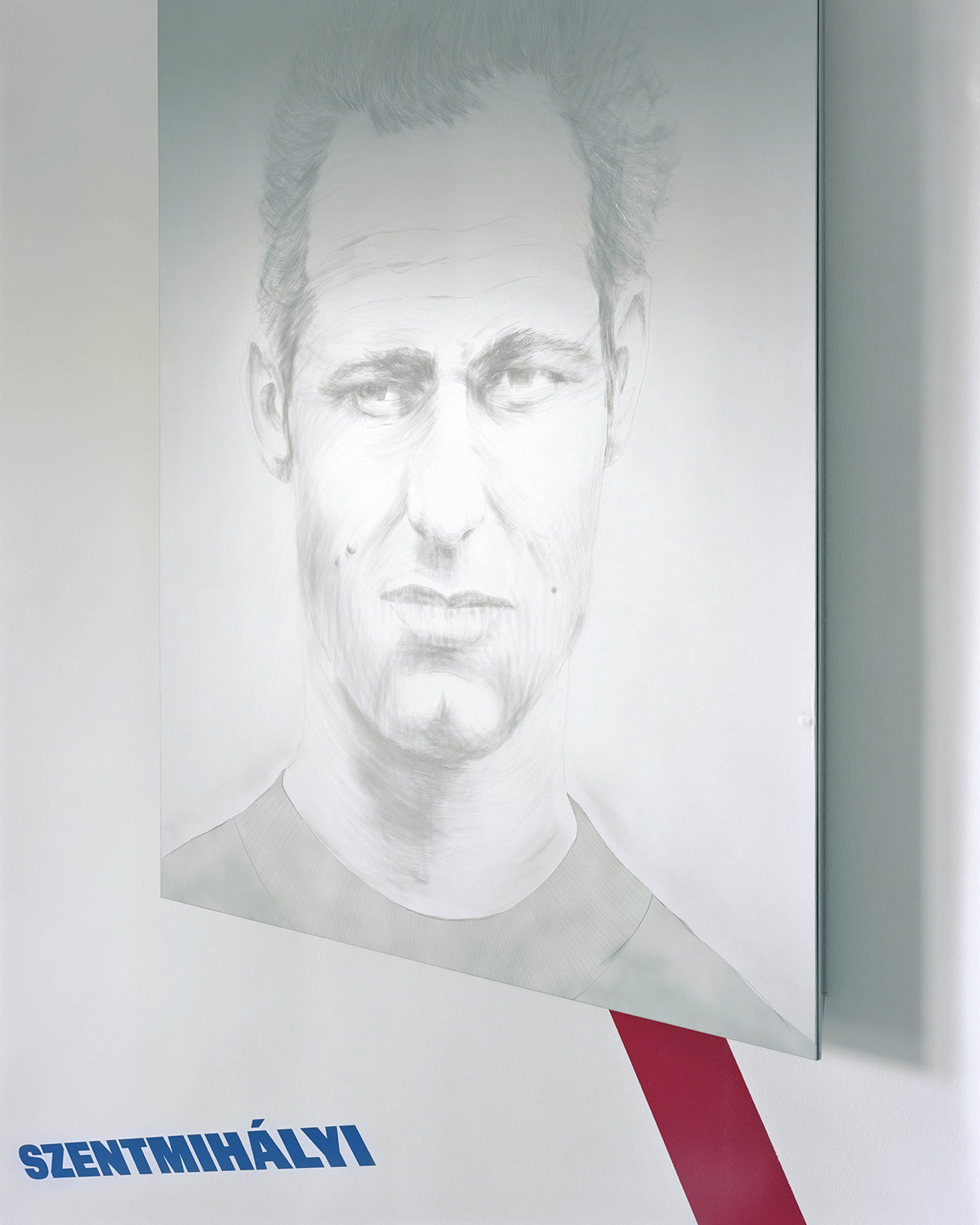
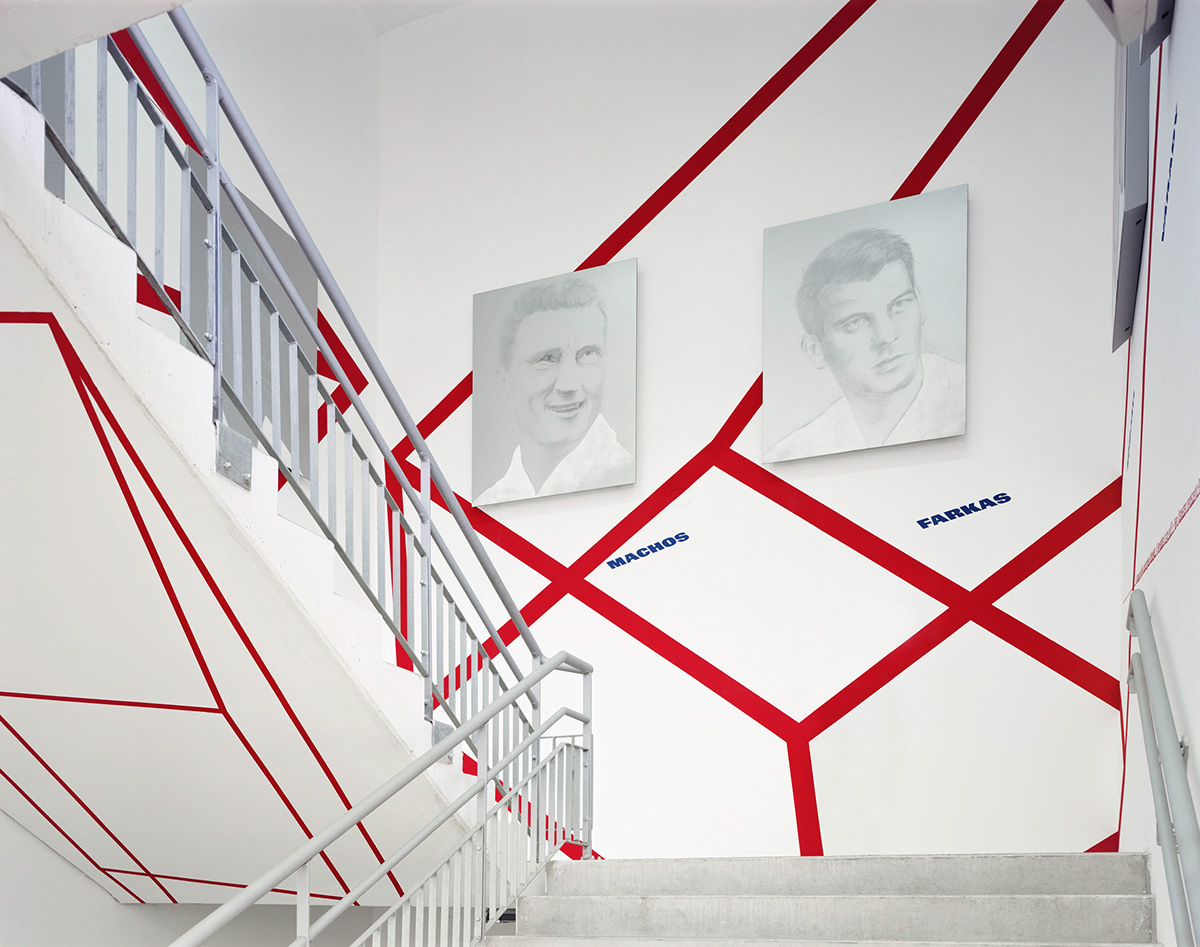


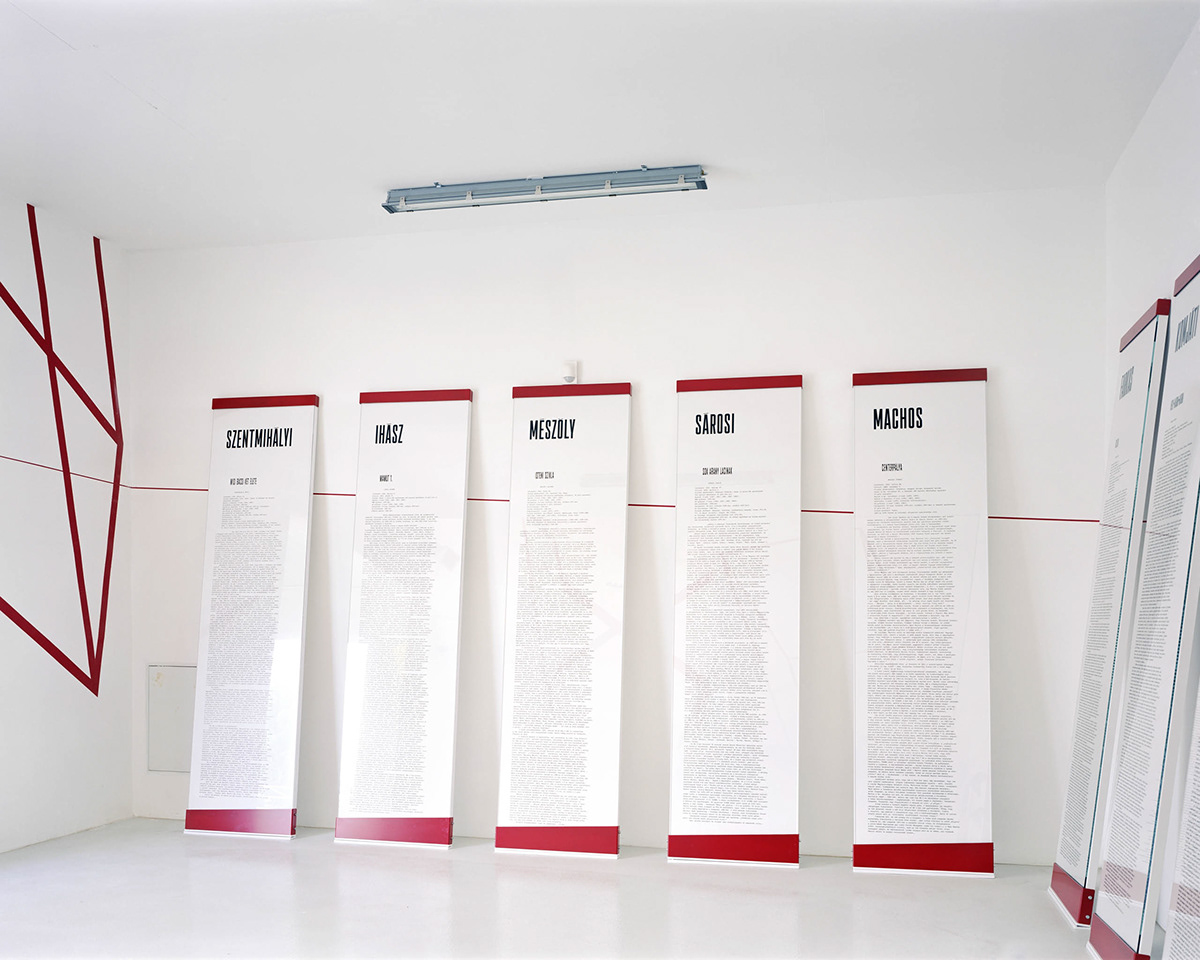
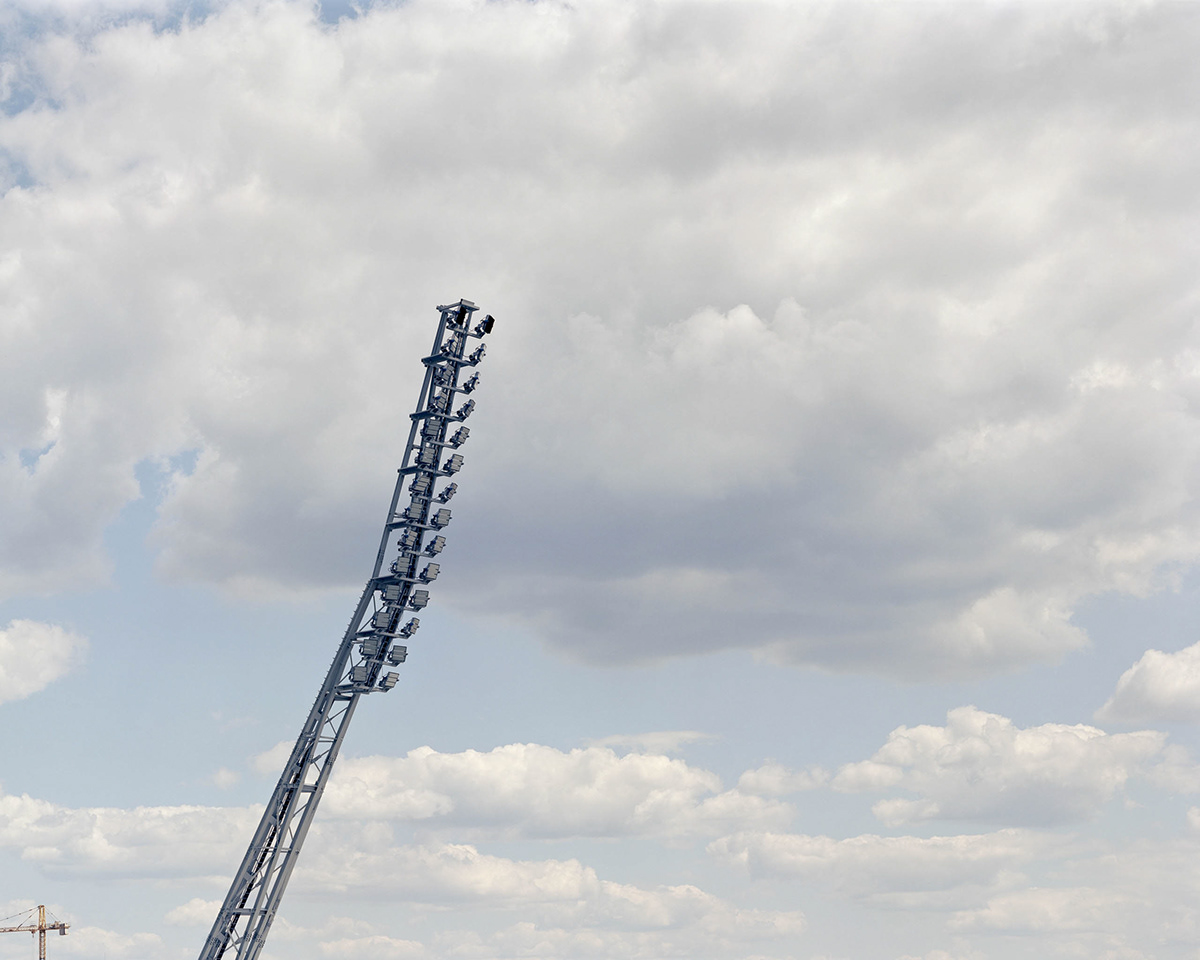

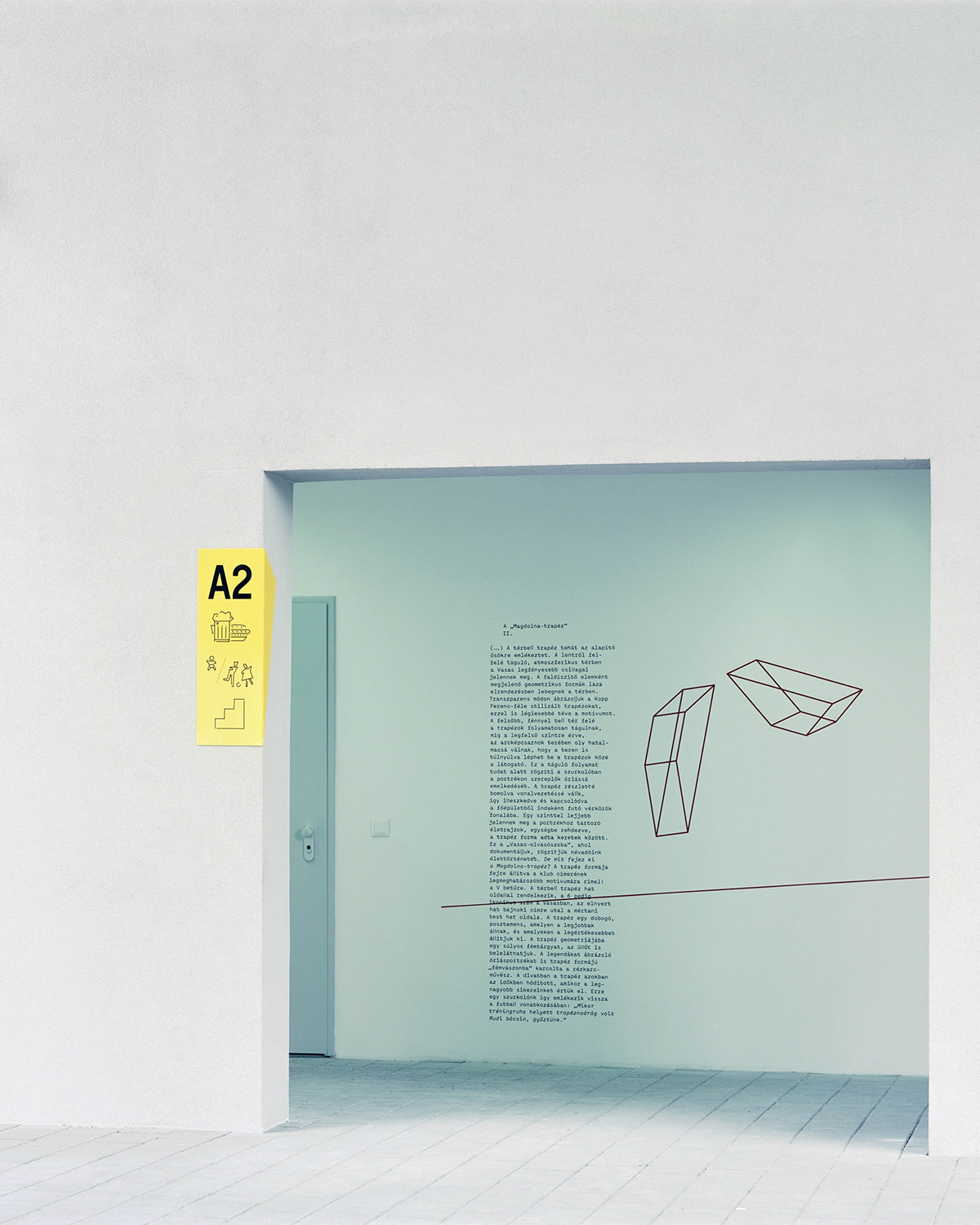
East Stand
History book engrained in steel
– Monument to 106 years of history
Sixteen monumental 125✕250✕6 cm raw steel plates propped up against the wall are situated below the East Stand of the Illovszky Stadium. 102,000 characters of text are engrained letter by letter, which present the history of Vasas’s football rendered by Iván Hegyi. This line of plates is a monument evoking respect for the unalterable glorious past in the largest uninterrupted space for spectators. The designers consciously sought the technology to represent the bare chronology and to preserve it securely for eternity. Using metal was a principle as a salute to the founding community of iron and metal workers, and the team of designers regarded the combination of man and modern machinery as important when creating the plates. Milling the steel plates took place in the workshop of ProCAM Ltd. in Nagytarcsa. The engineering work to prepare the milling trajectory was performed by experts of K-Arts Ltd. in Kecskemét. The text on the plates was set with MAD Sans Fill Bold and MAD Sans Fill Black cuts of the Colophon Foundry typographical studio, which has centres in London and Los Angeles. When creating the MAD (Machine Aided Design) font the typography designers were inspired by forms of the time when programmed turner’s lathes began to reproduce the written text and the rounded lines materialized with tiny angularity due to the still new technology.
Shirt Geometry and “From Father to Son” Promenade
The space underneath the East Stand on the side of Béke Street is the largest unbroken covered construction. It is the former regular haunt of Vasas fans. Along the length of the entire pitch the six metres high and six metres wide area is called “From Father to Son Promenade”. Its symbol is the painted copy on the wall of a photograph taken in Florida, which shows a well-known Vasas fan hand in hand with his son as they are looking at the ocean in Vasas kits.
The installation Shirt Geometry is part of the promenade. The patterns of the kits worn in different periods are represented in a system of graphic art – the great “redness and blueness”. It is a monumental unbroken wall painting with a width of 64 metres and a height of 4 metres, and consists of more than 5,500 designed and painted elements. The dipolar design displaying a total of 34 shirts of different periods comprises four phases:
1. The unity of highlighted classic shirts represented in the five largest sizes. It includes perhaps the most beautiful white shirt ever, with red and blue vertical bands on the left. It was the shirt in which the team associated with Mészöly and Farkas, as well as the last team winning a championship in 1977 played. The club revived this shirt on the centenary of its foundation.
2. Presenting then fusing together 34 selected shirts in a tile format. Shirt designs can be found here from the 1910s and 1920s, as well as up to the first half of the 1990s; from the cross stripes characteristic of the beginnings to the ill-famed red and blue diamond-patterned Blacky shirts, which chronologically were the last. Later the aesthetics of countless shirts with advertisements, sponsorship logos and compulsory putty medals was spoilt. The earlier high quality work meticulously created by textile designers and tailors was lost.
Looking at the wall we can find the following: the shirt worn at the European Cup matches against Real Madrid and Internazionale; the transparent white shirt with little holes in which the team won the Hexagonal in Chile in 1967 and its red variety, used when the team trained; the shirt with strange red and blue squares worn at the Mészöly–Farkas–Ihász farewell match; the cross-striped top recalling radio waves, which the 1962 champion team wore; the kit with a single diagonal stripe in which János Farkas became top scorer in 1966; a shirt with a star pattern in a vertical stripe on the right, worn when the team won the Hungarian People’s Republic cup in 1981 ... and so on.
3. By emphasising the vertical lines the abstracted vision created by the designers symbolises the possibility of the modern future as a counterpoint to the past.
4. The shirts become fragmented on the side of Fáy Street. This refers to the custom whereby supporters tore into pieces shirts taken off players after the championship and cup victories of the 1960s and 1970s in order to have a keepsake. The excessive sizes and scales shifting in a grotesque way attract the attention of visitors, the designers using mass as a psychological tool.
Shirt Geometry activates the hidden meanings of the specific place. It returns to the senses and forcefully presents in the stadium the red and blue colours, which are so beautiful for us.


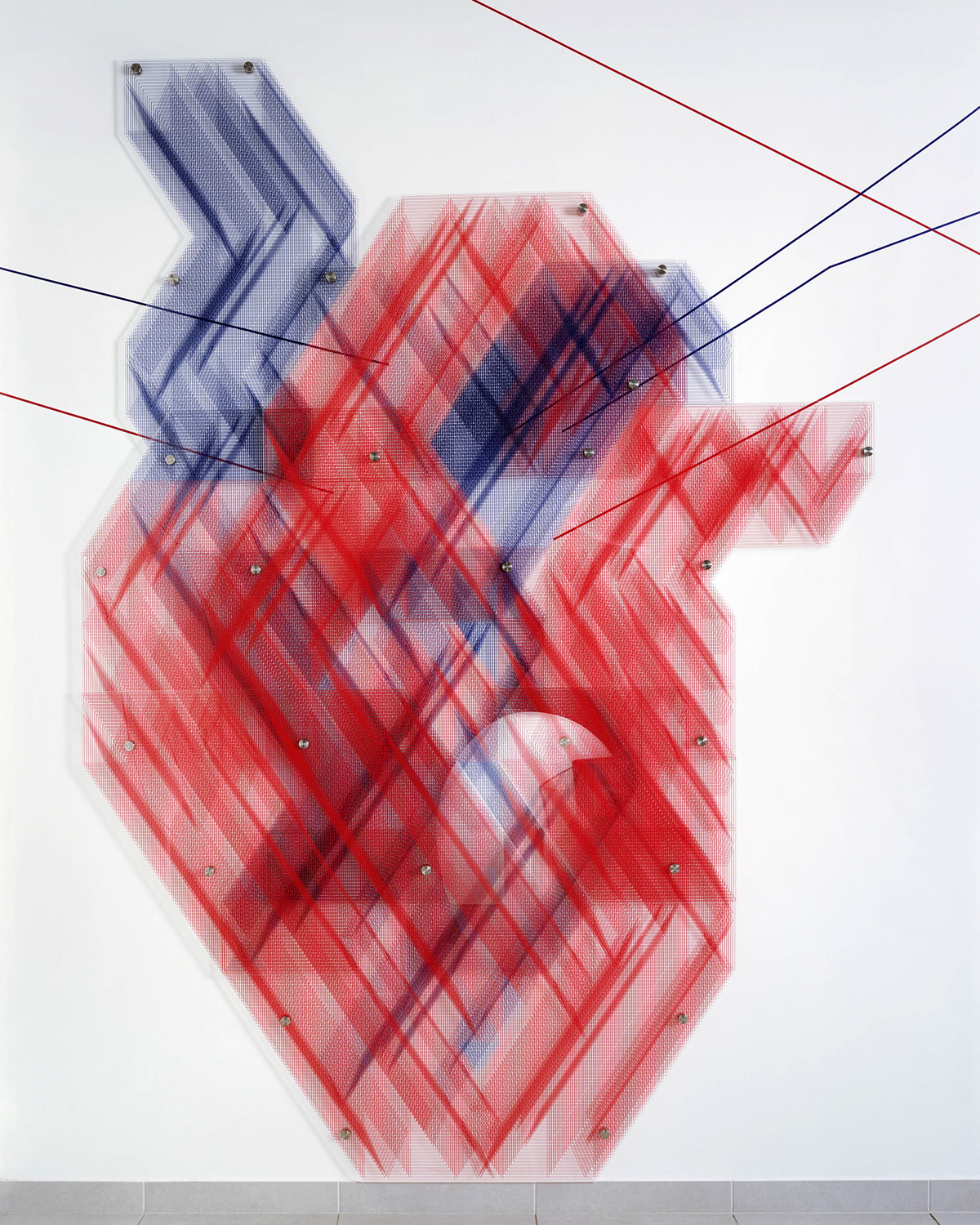

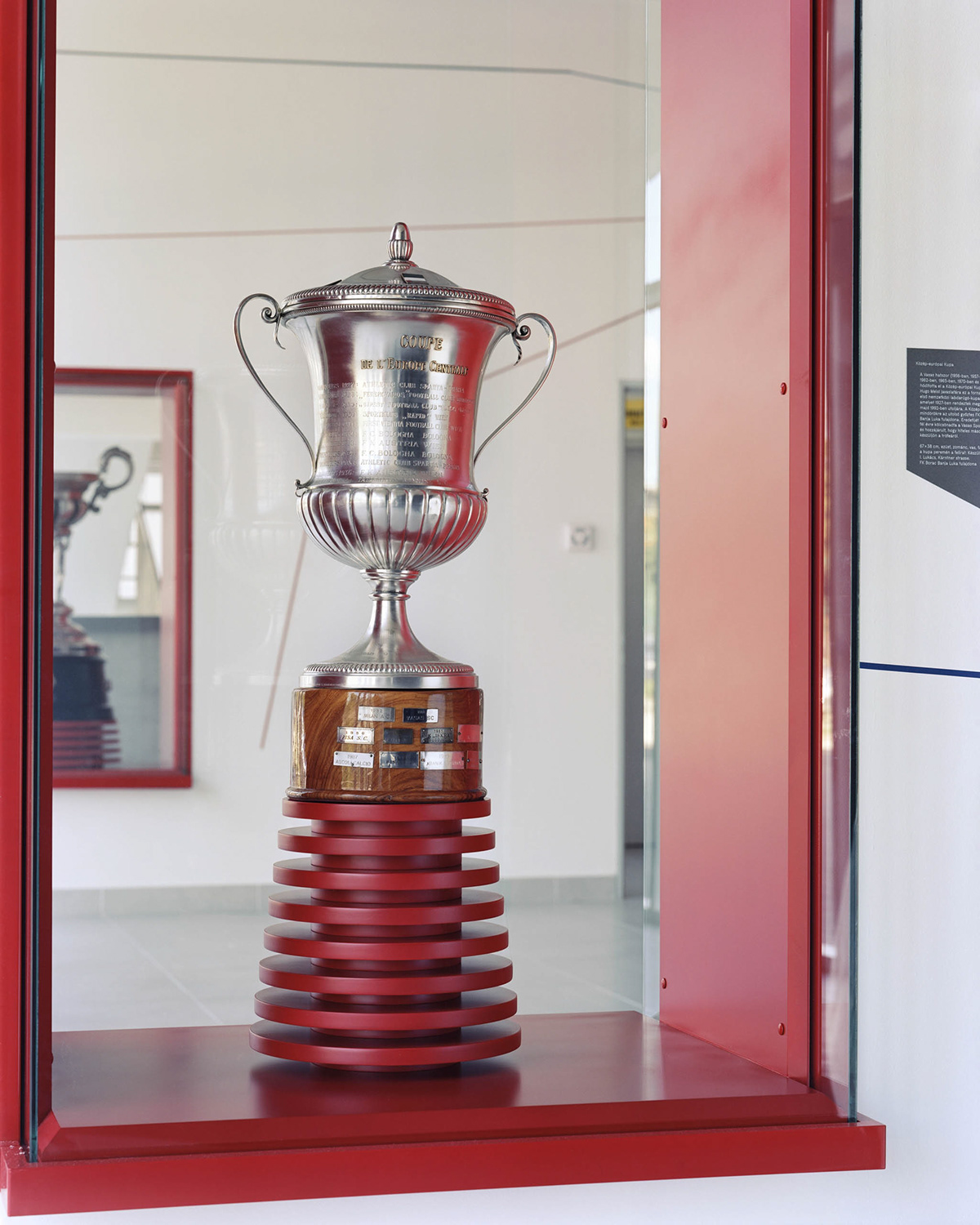
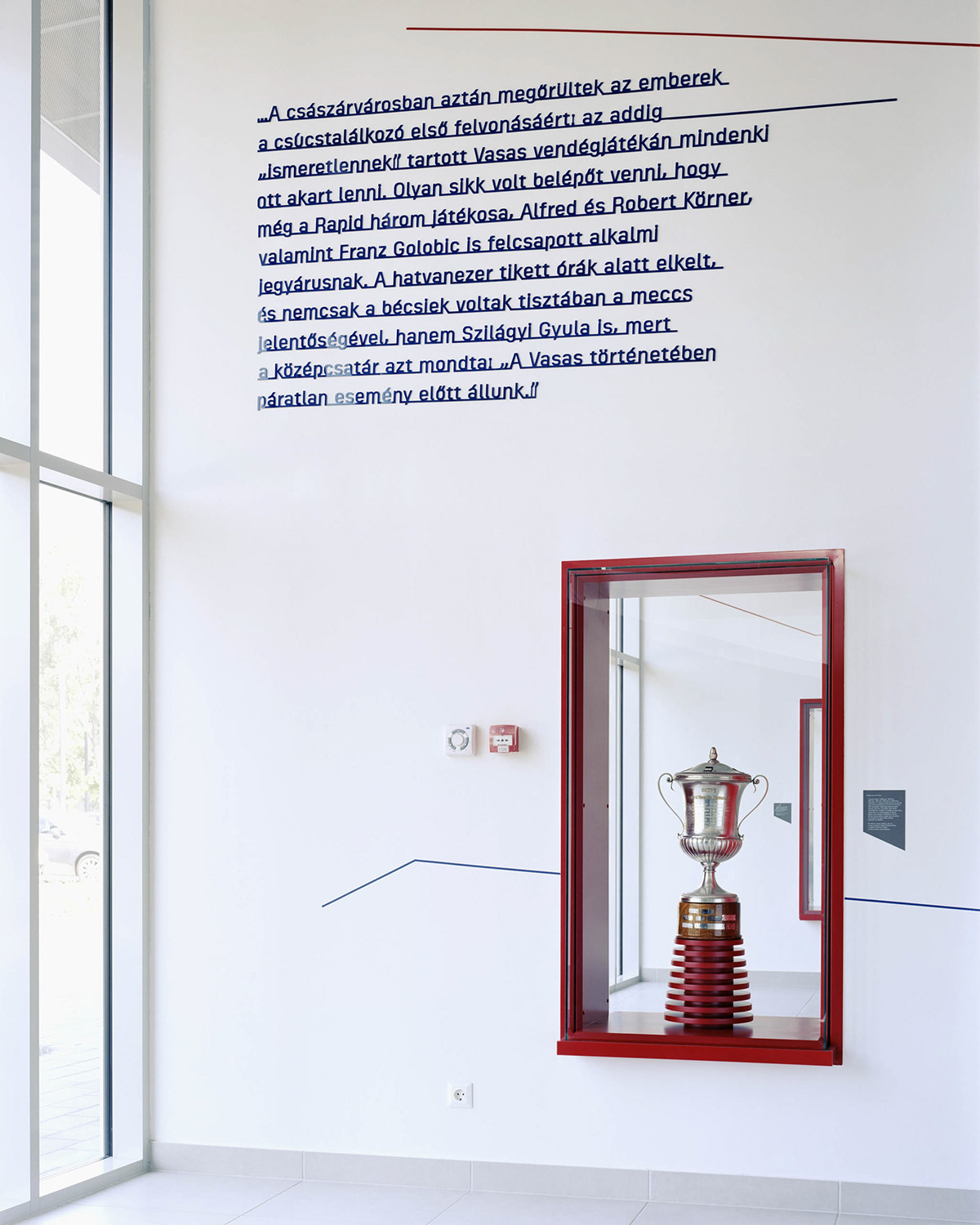


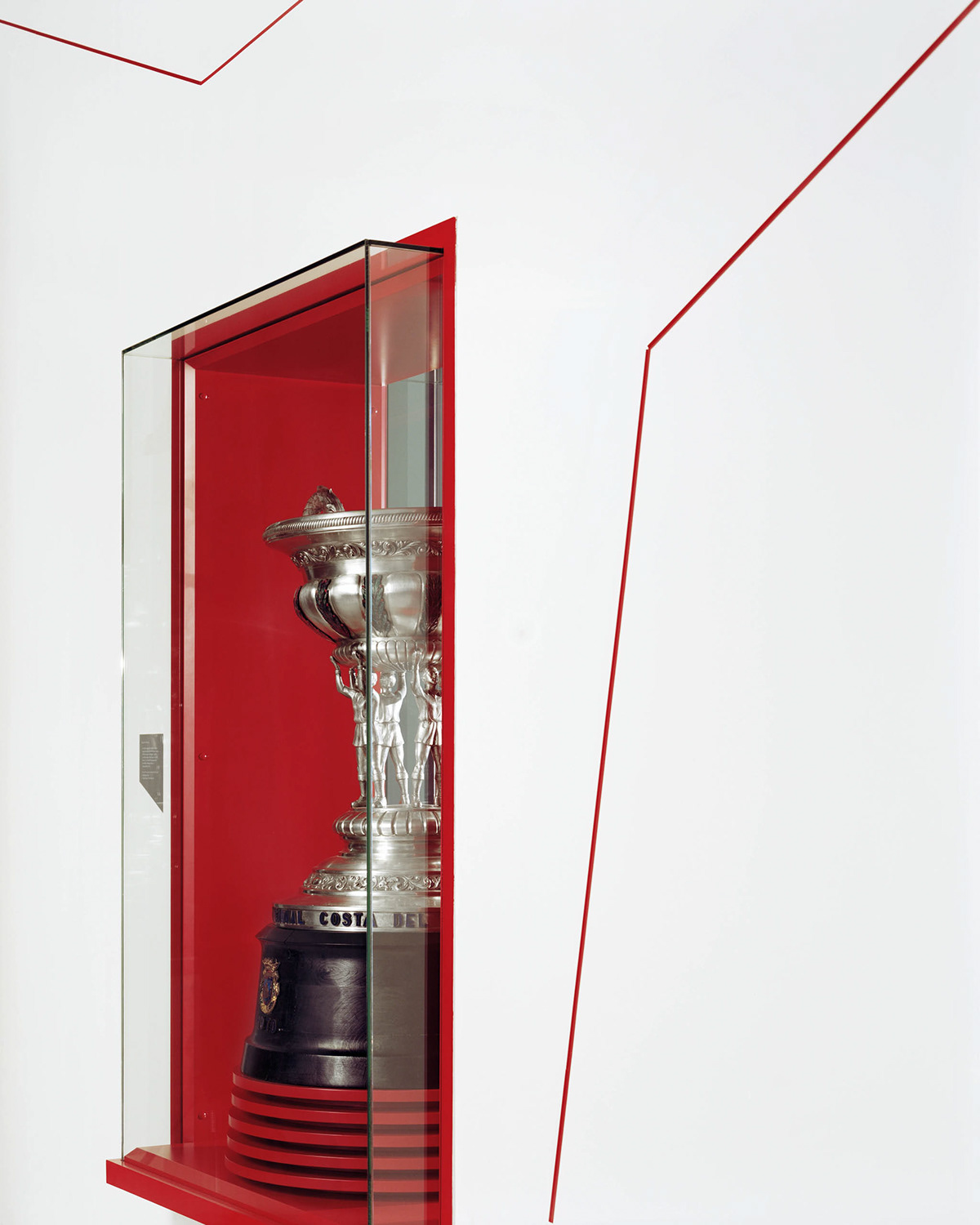
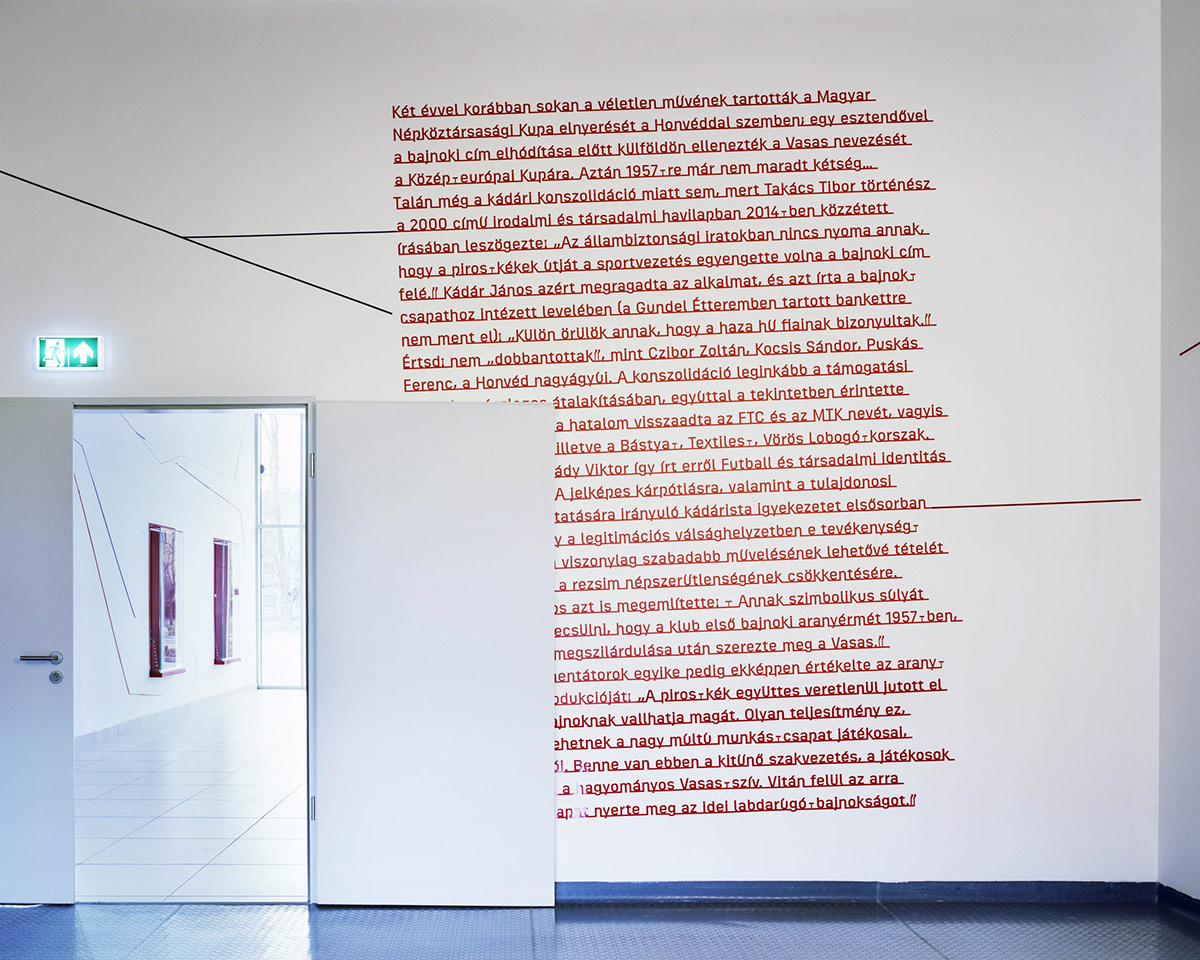
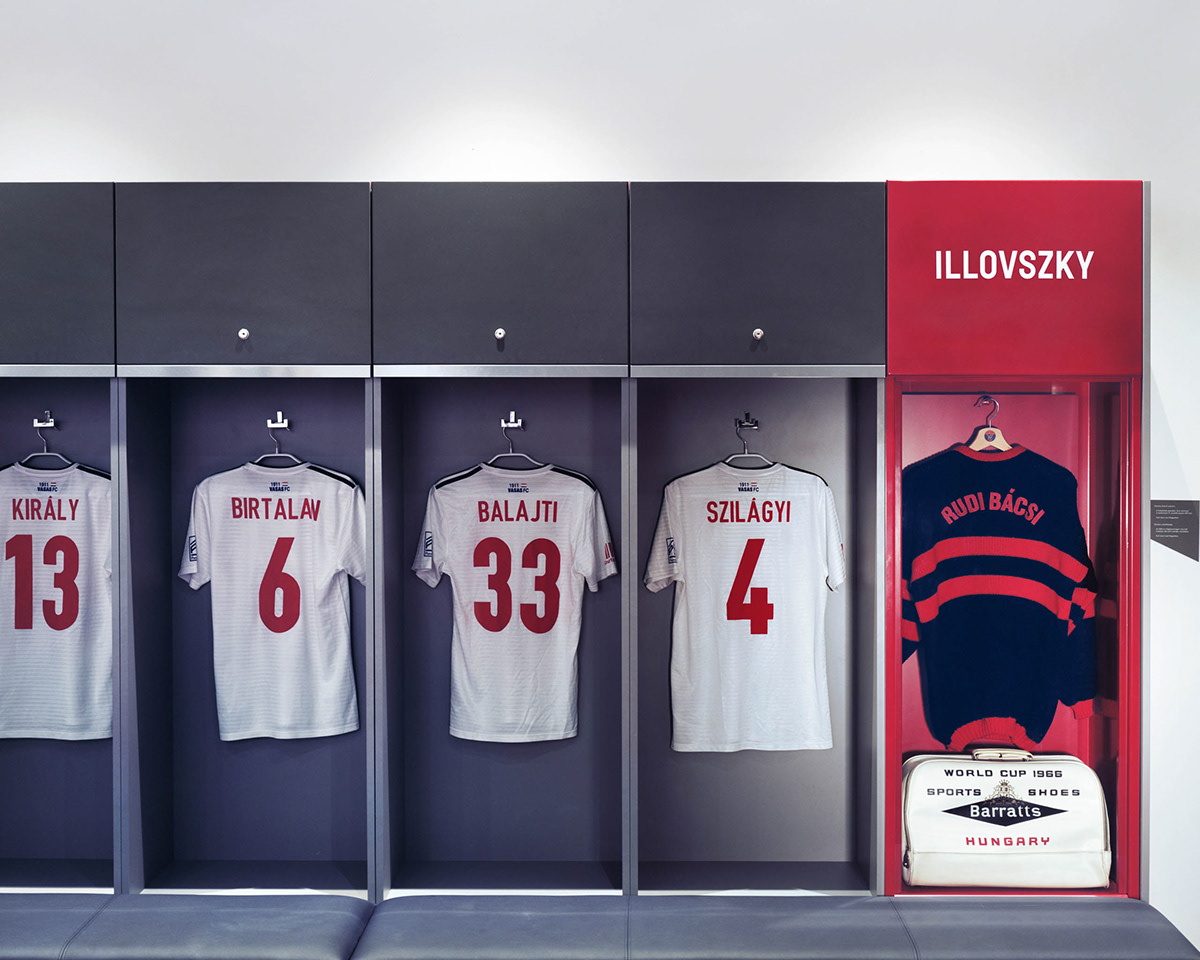


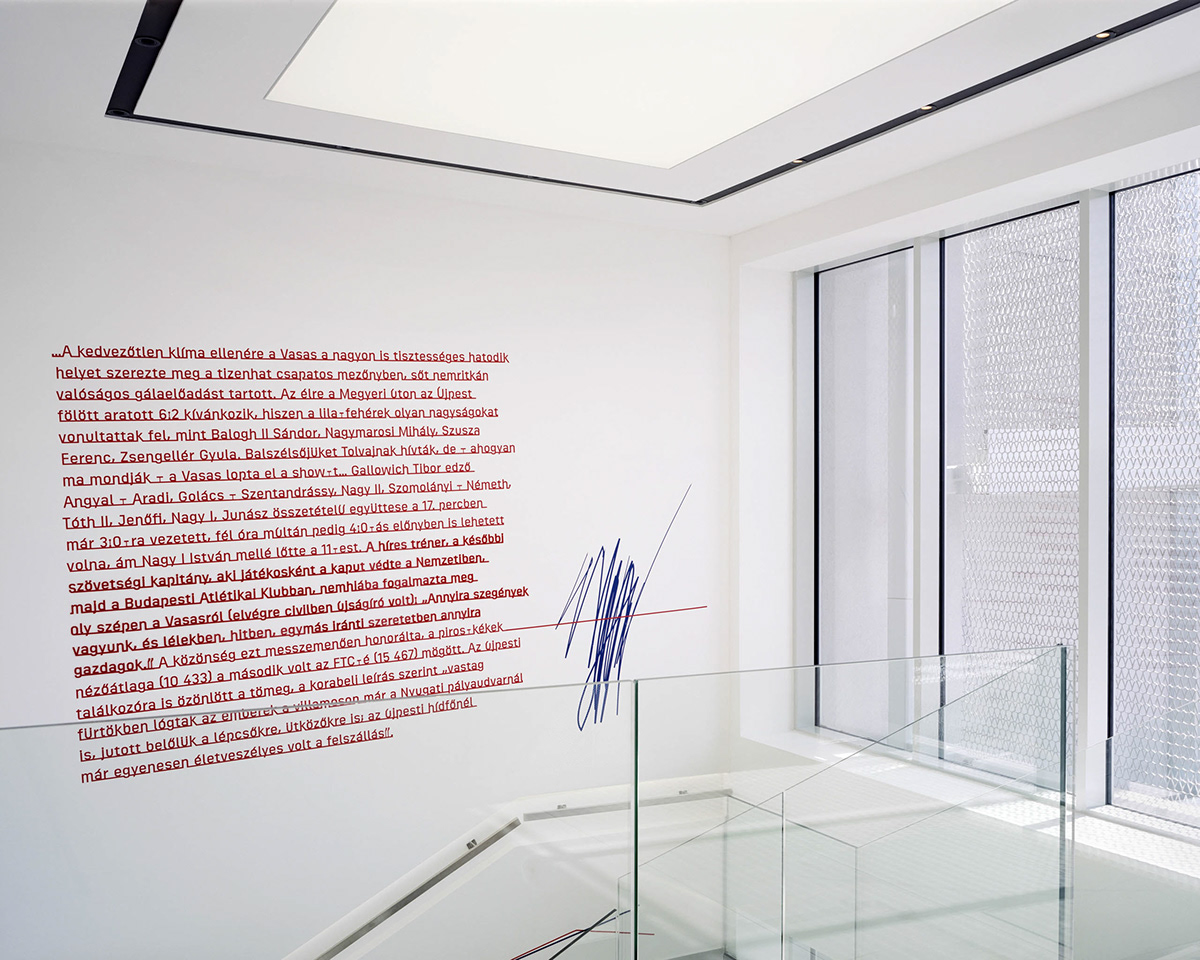
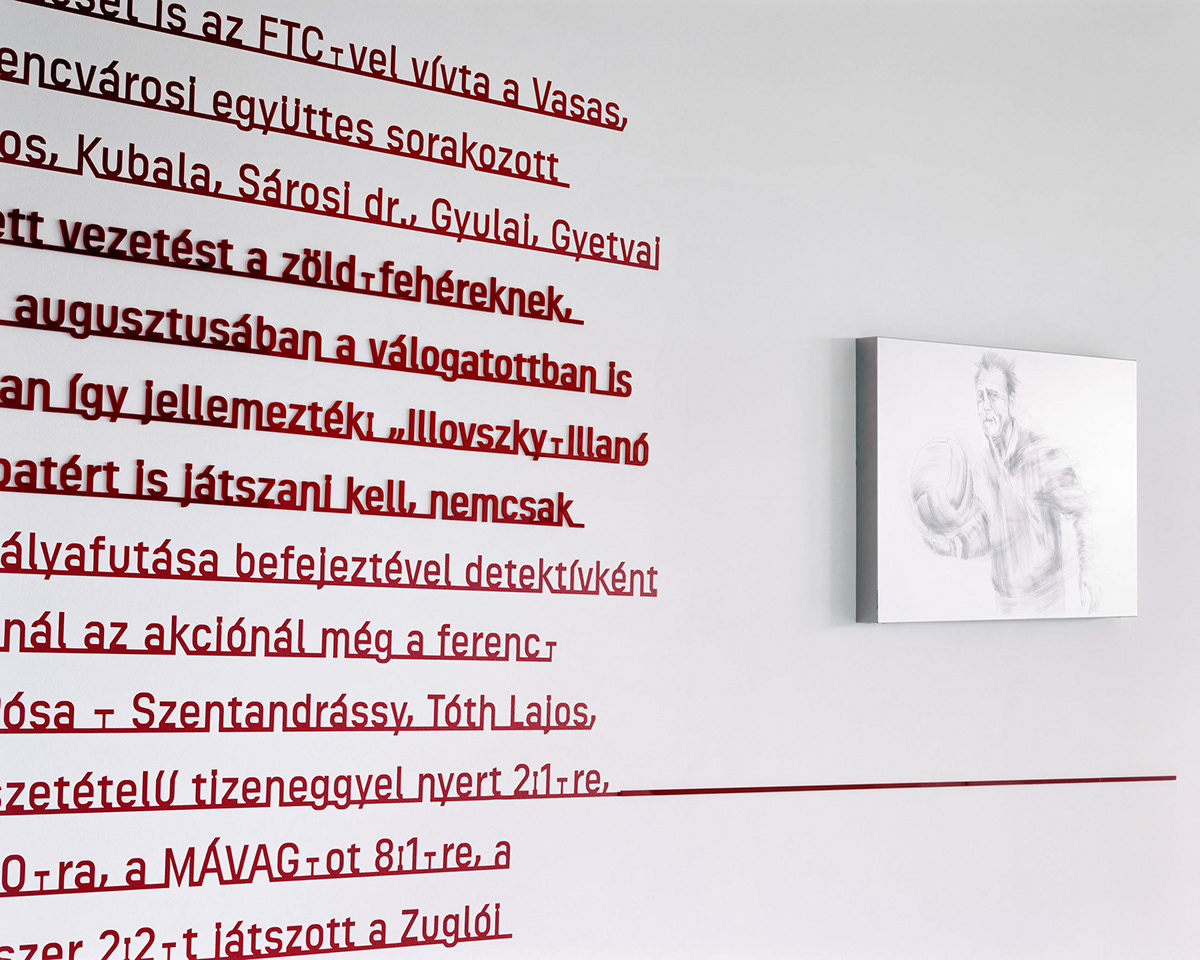

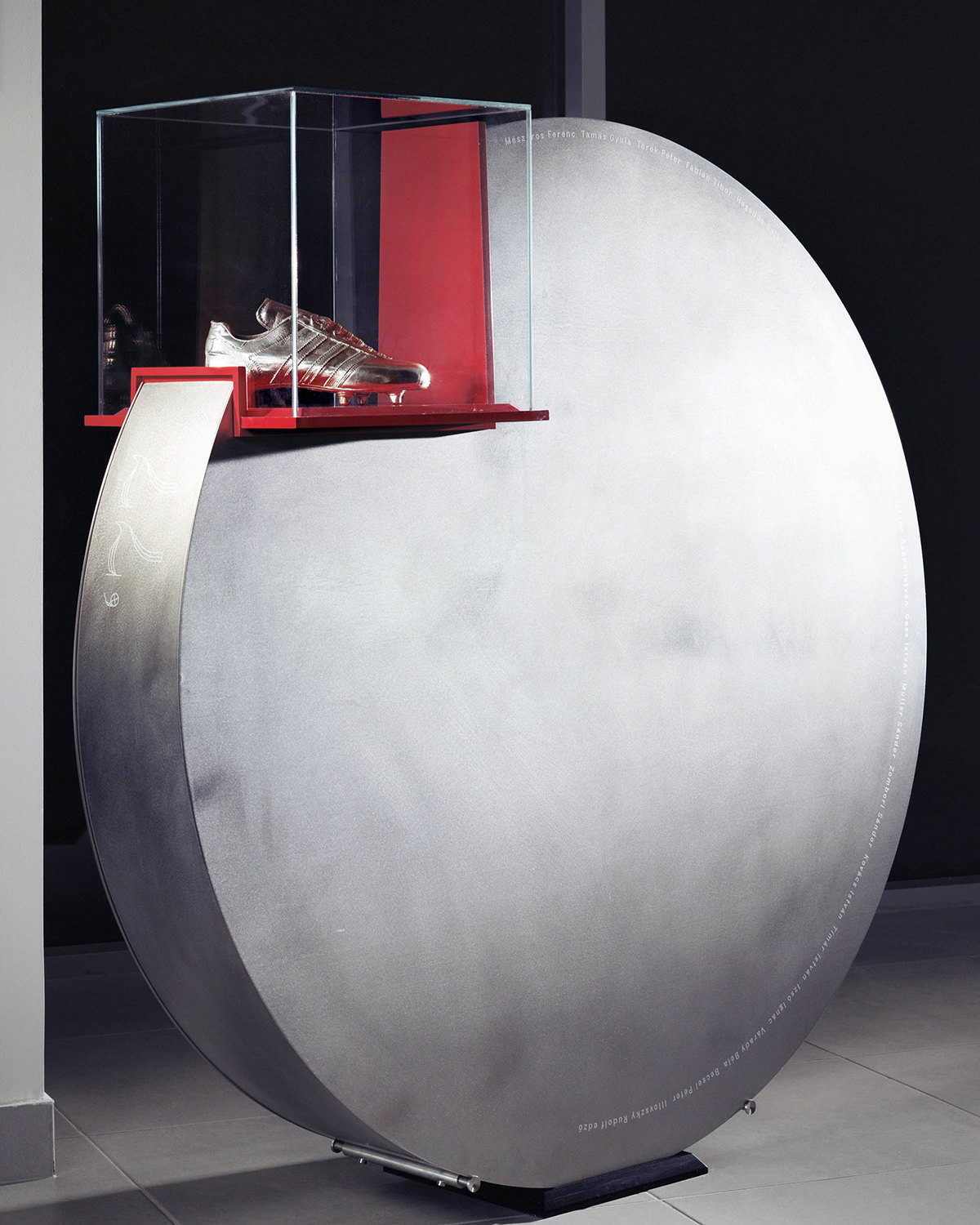

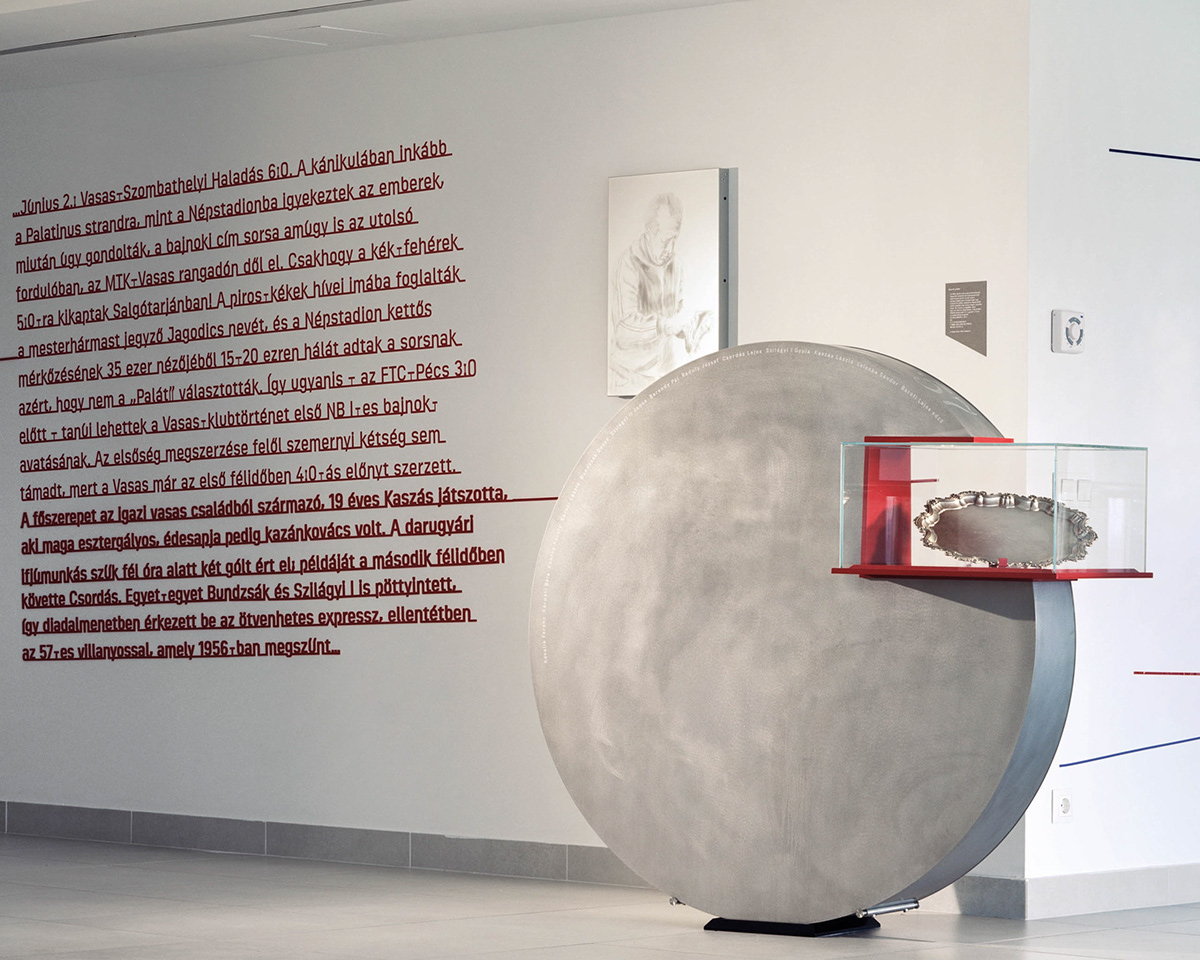
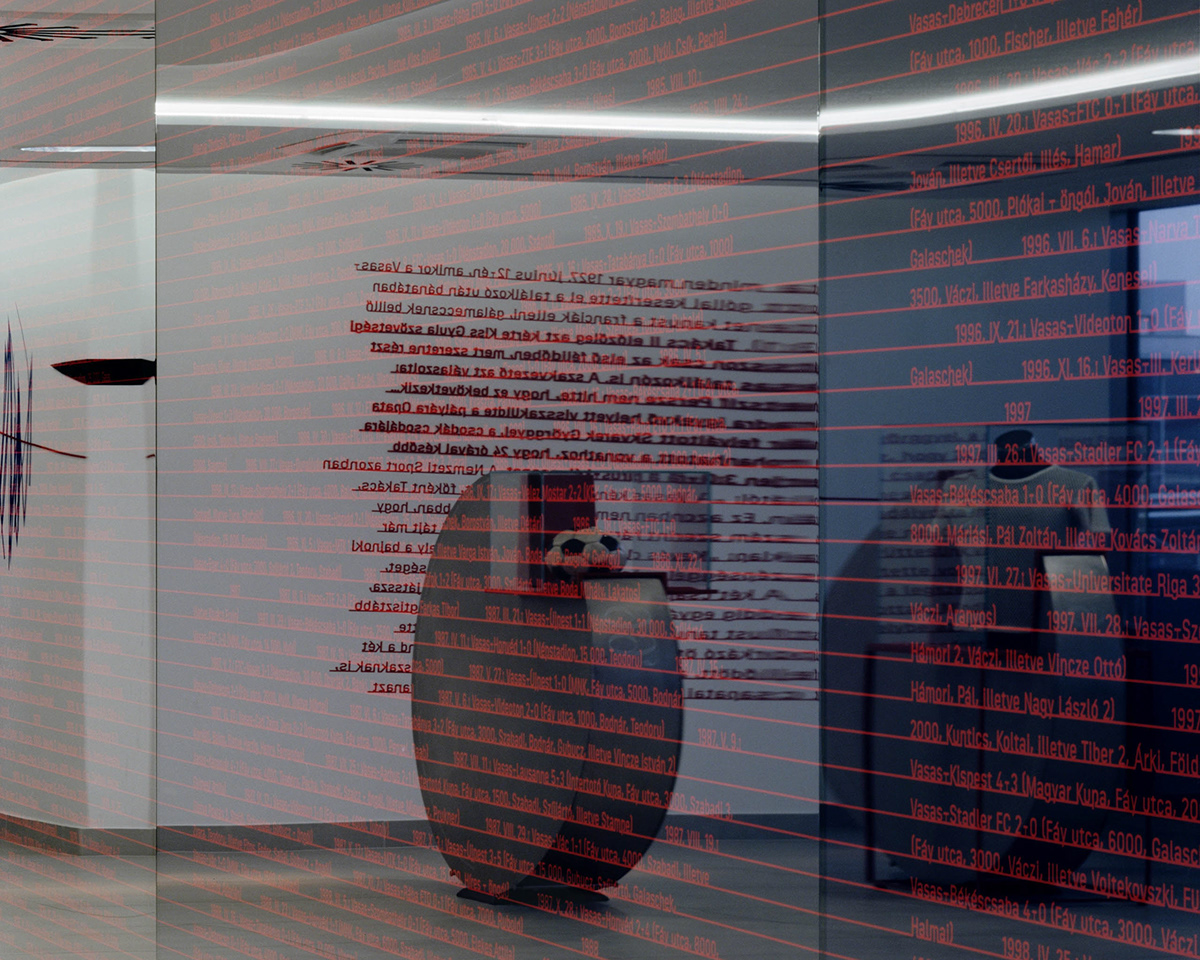
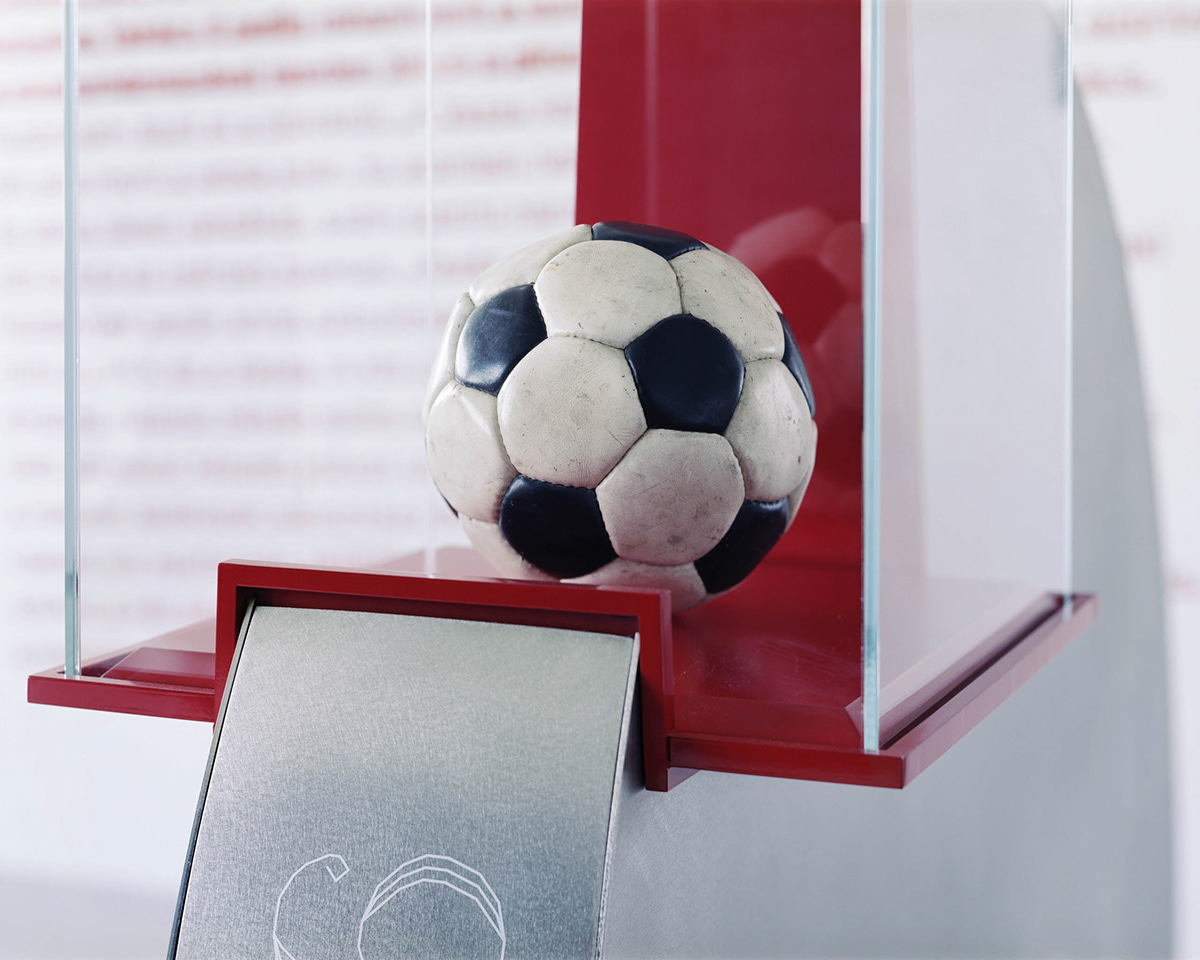
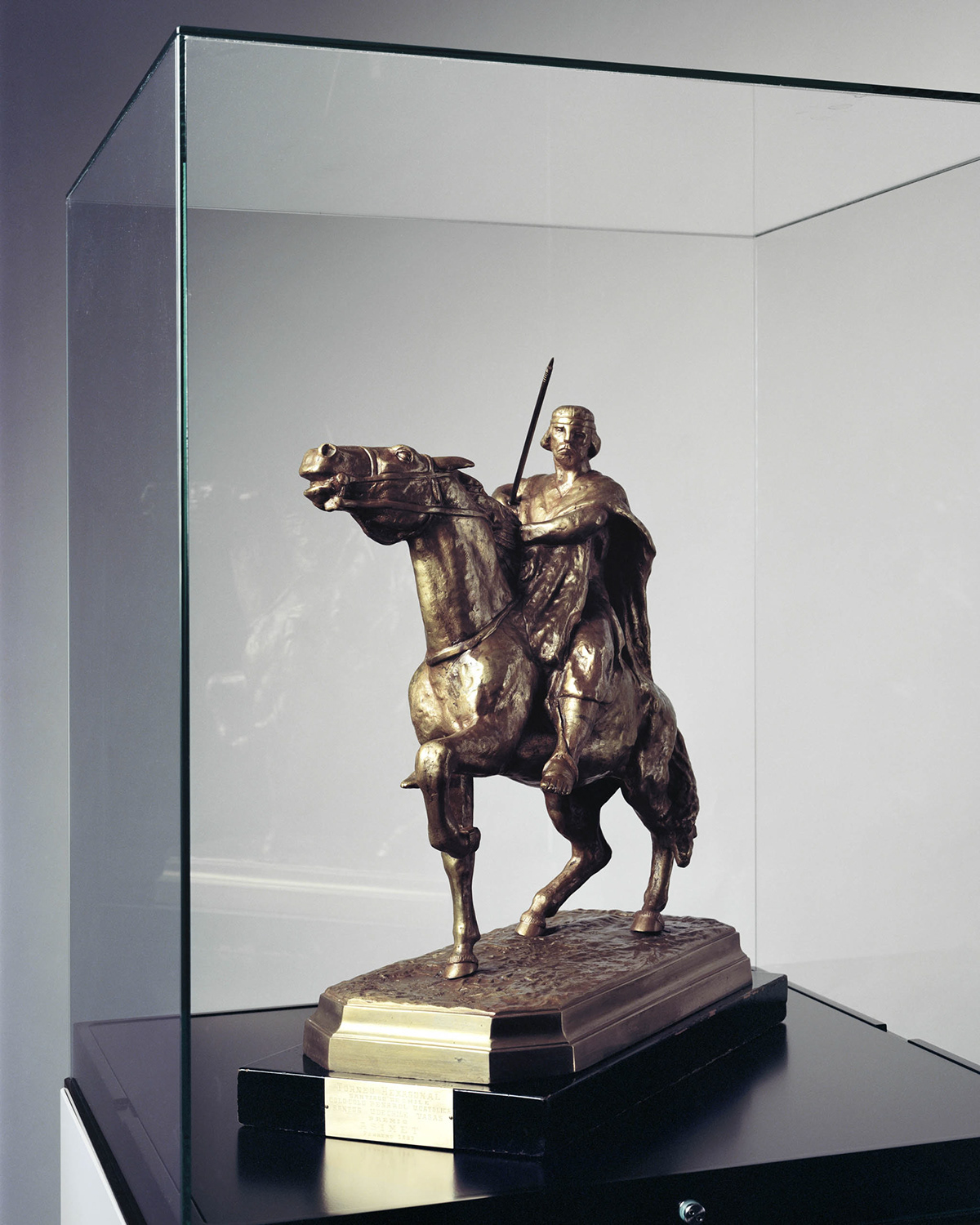
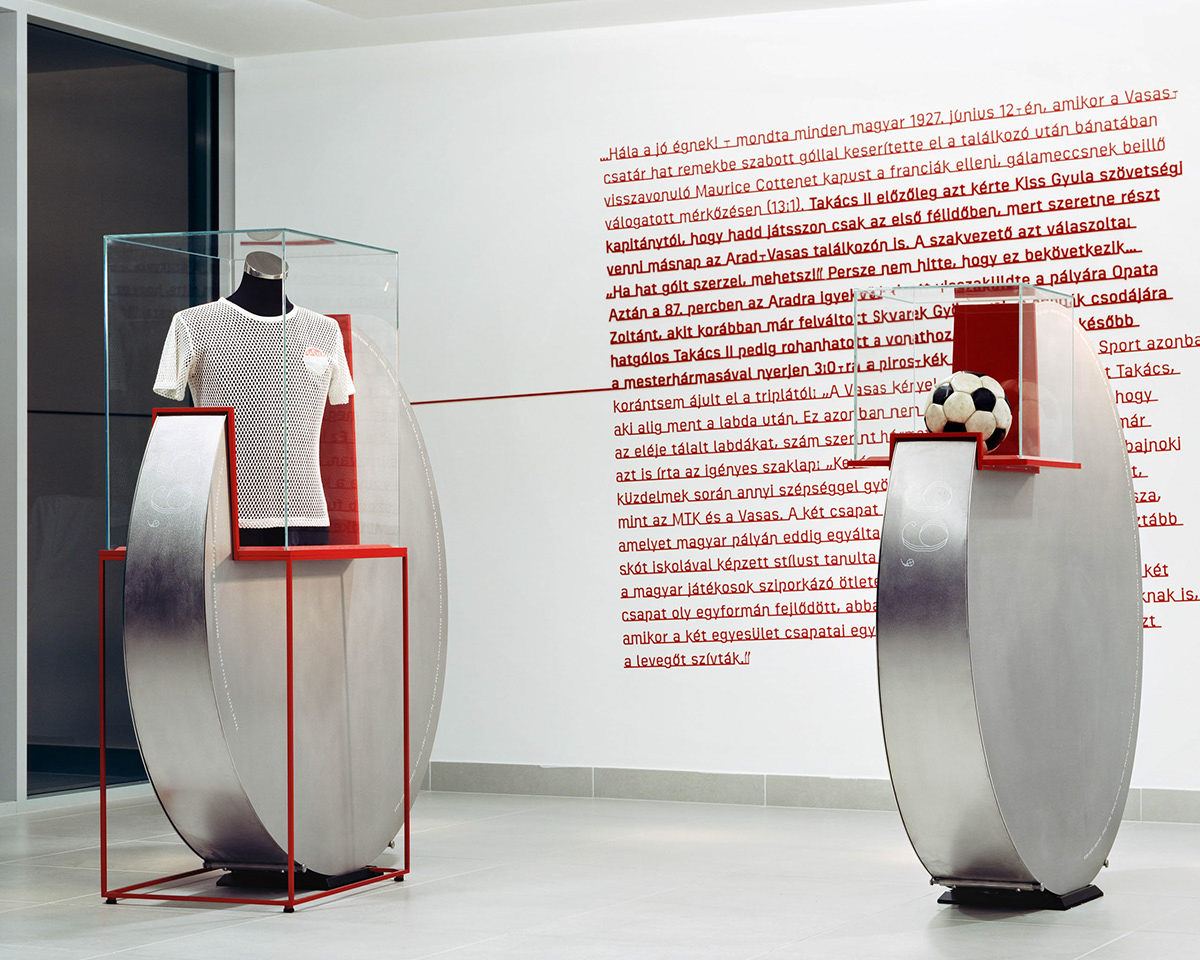
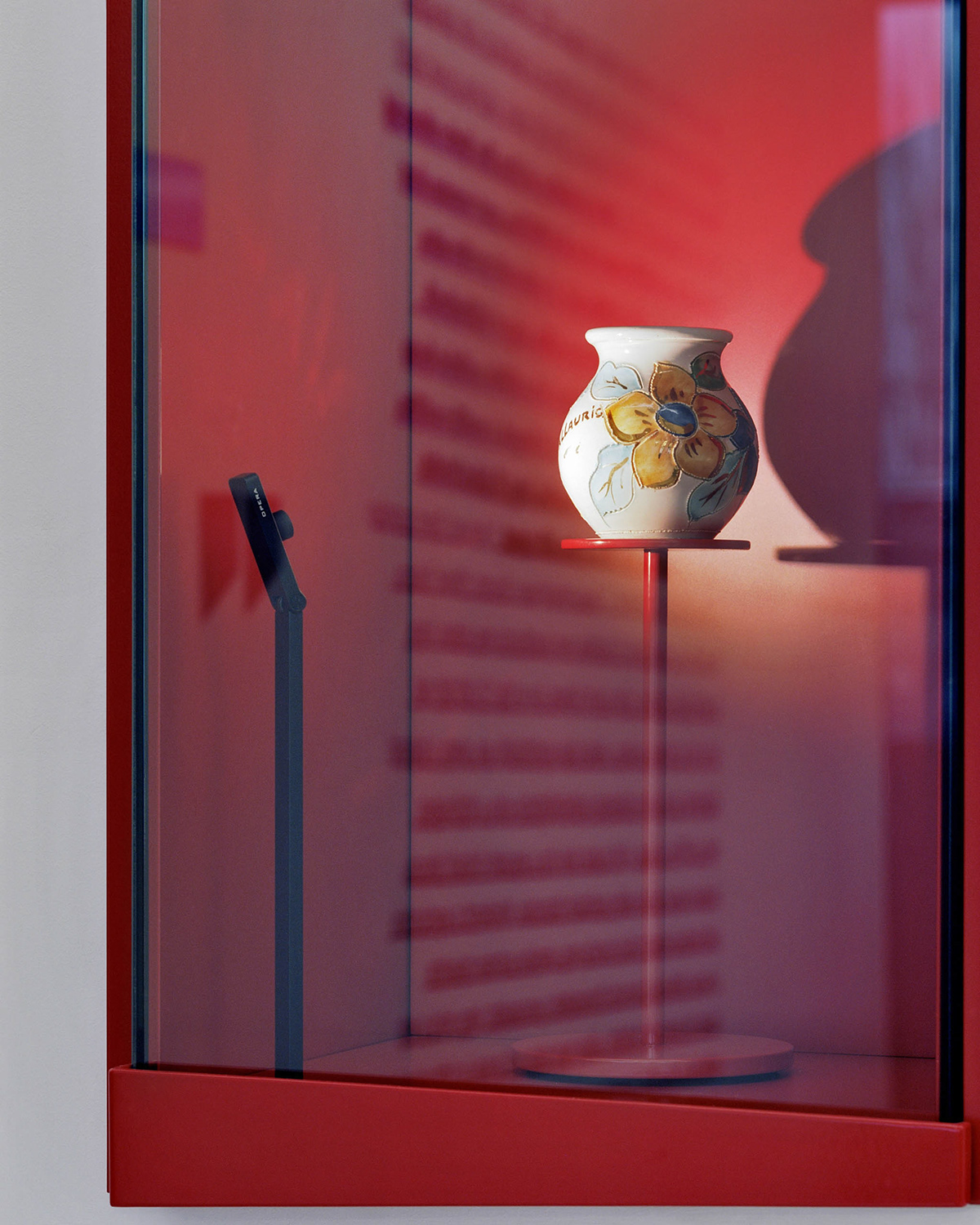
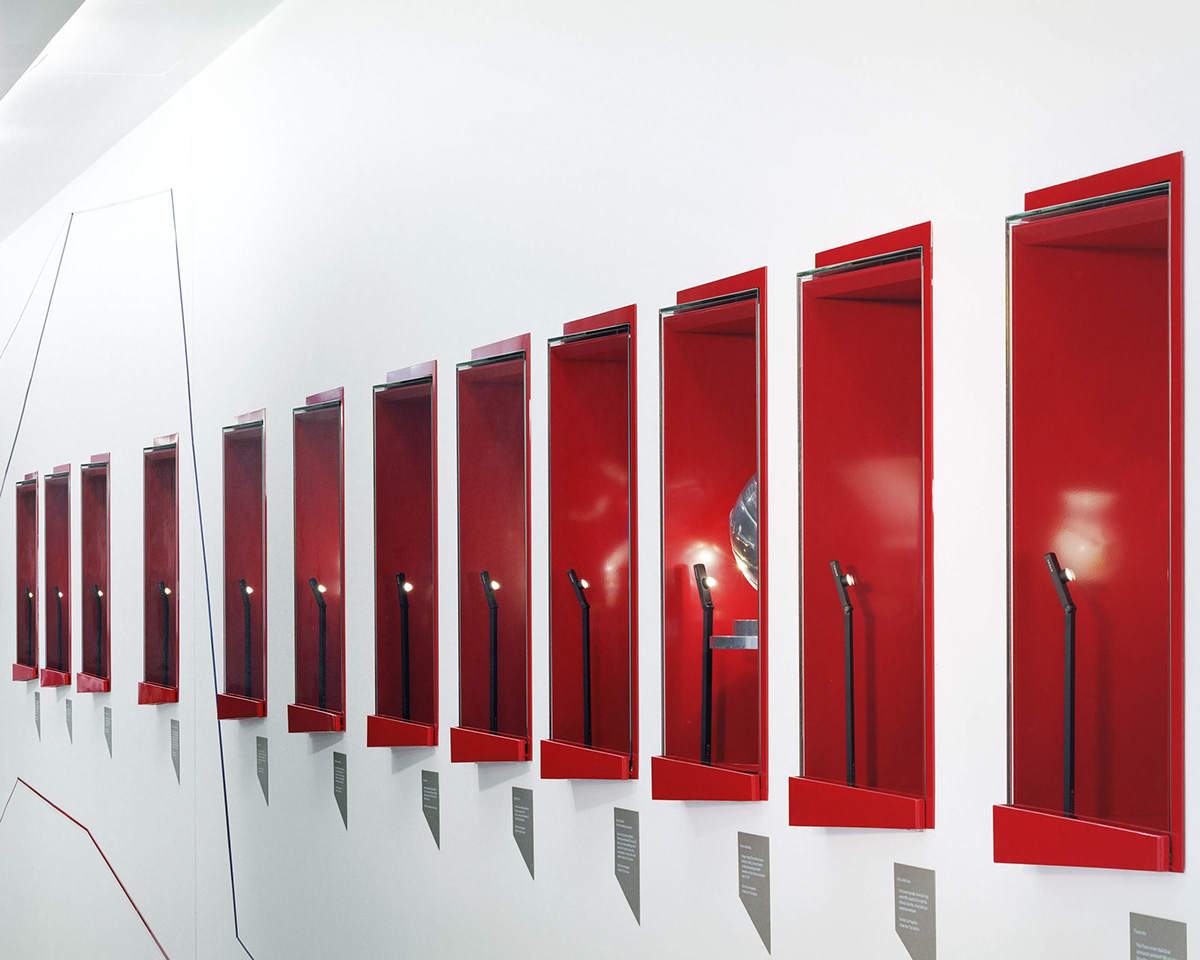
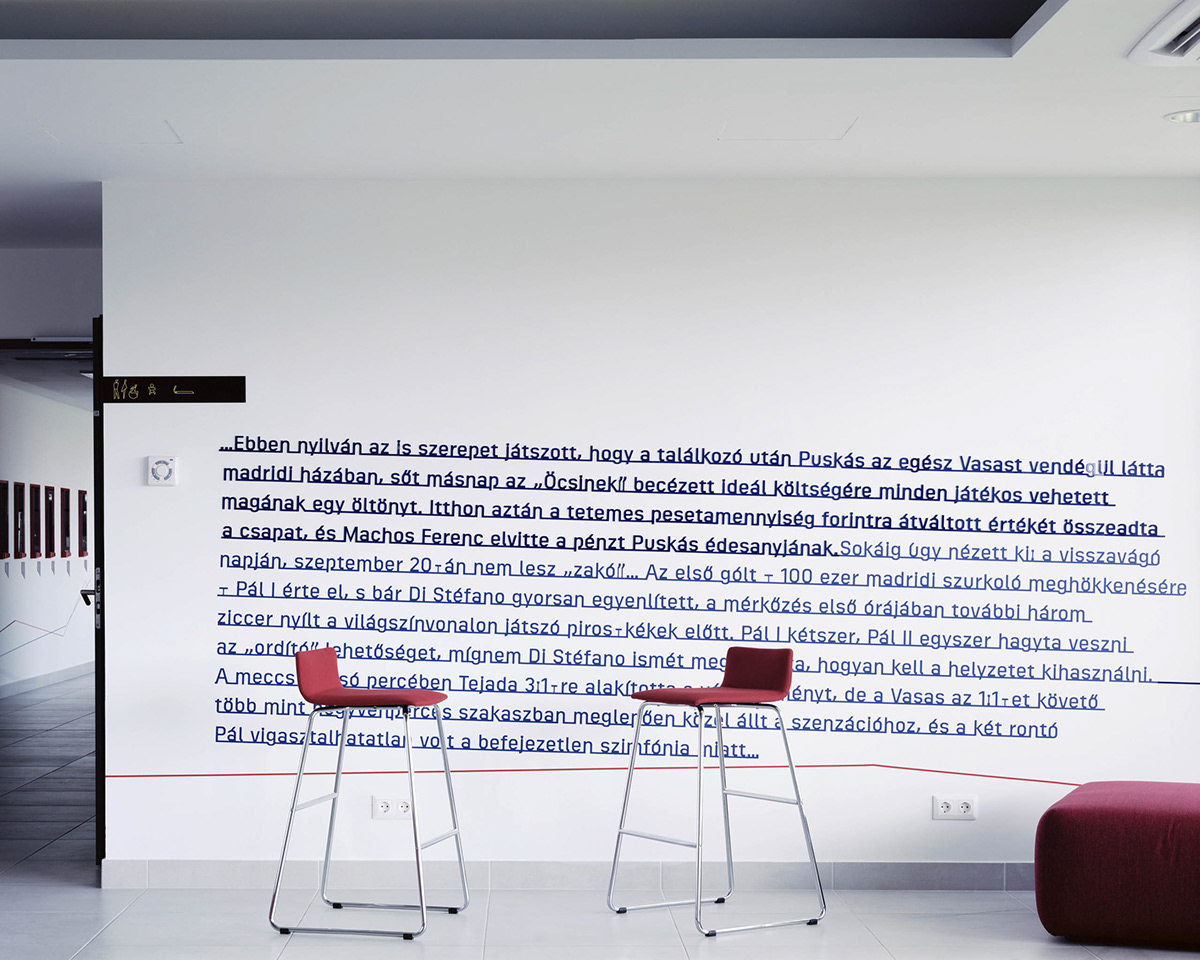
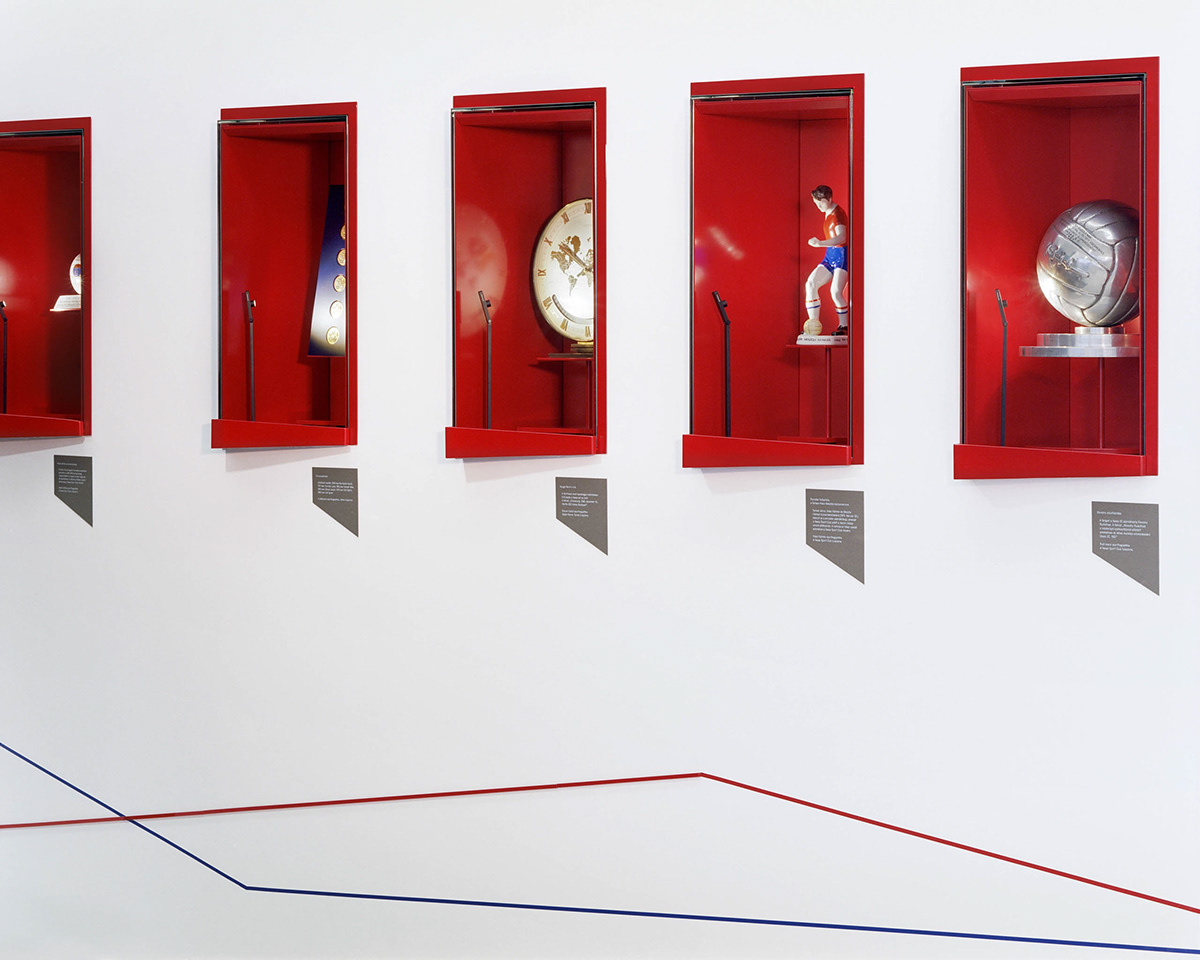
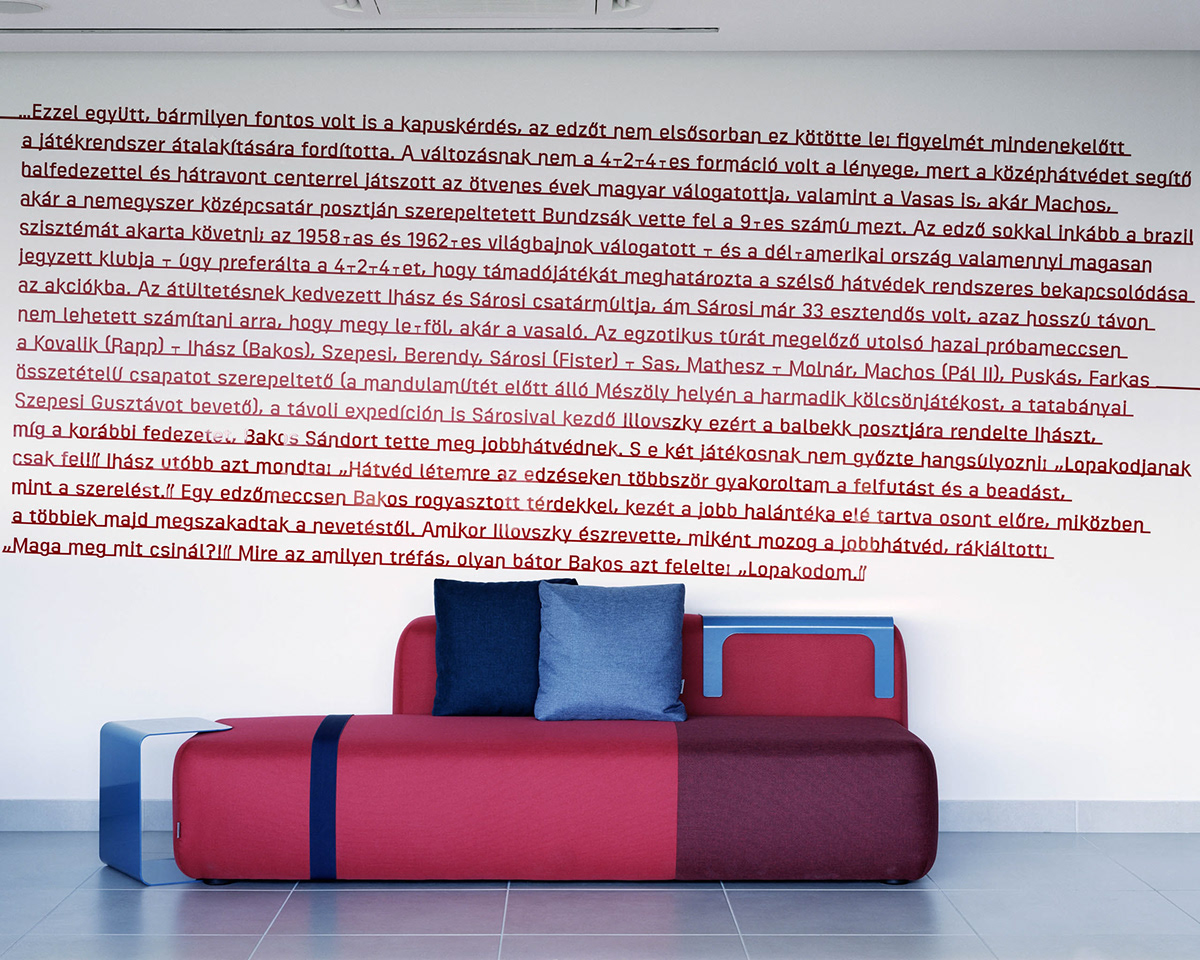

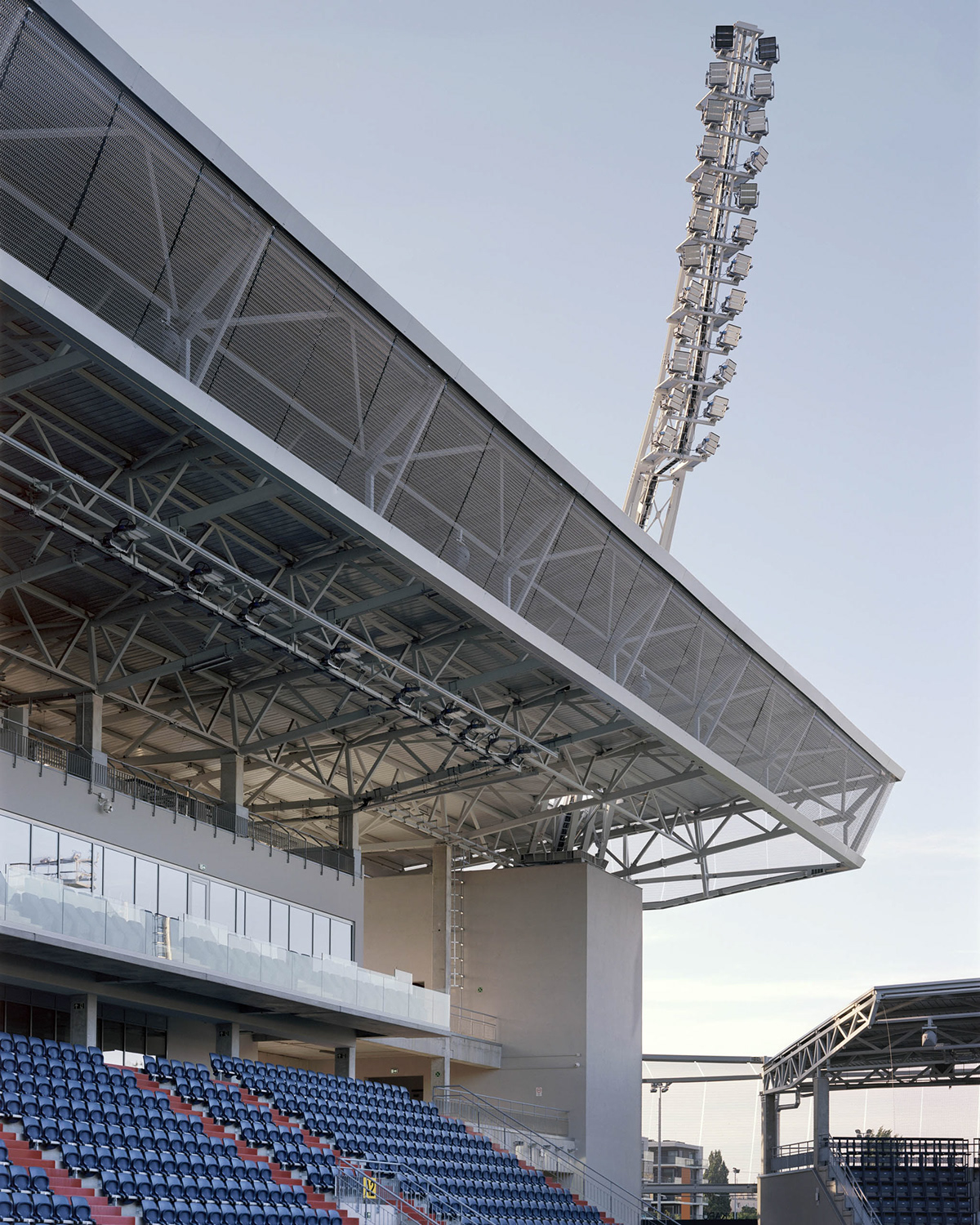
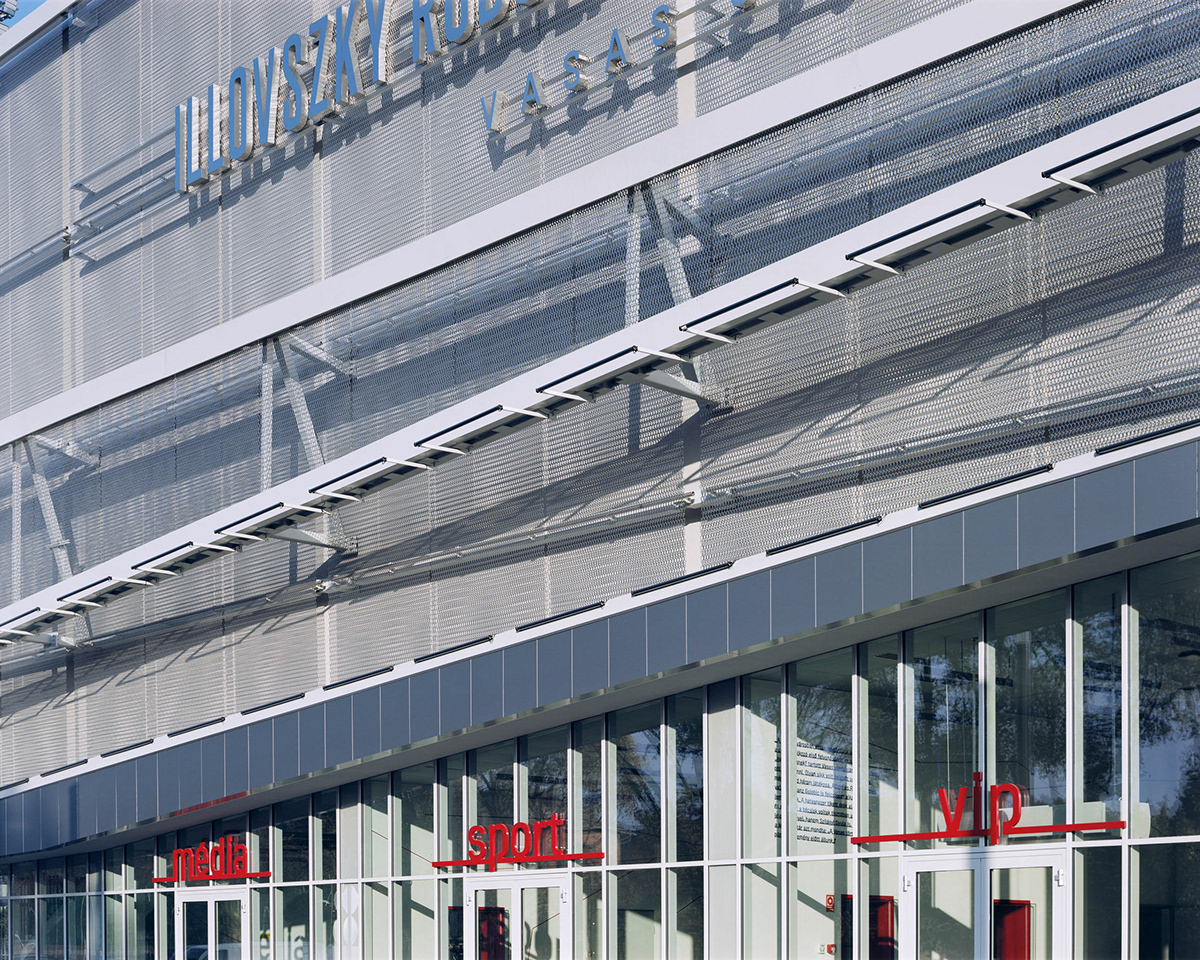


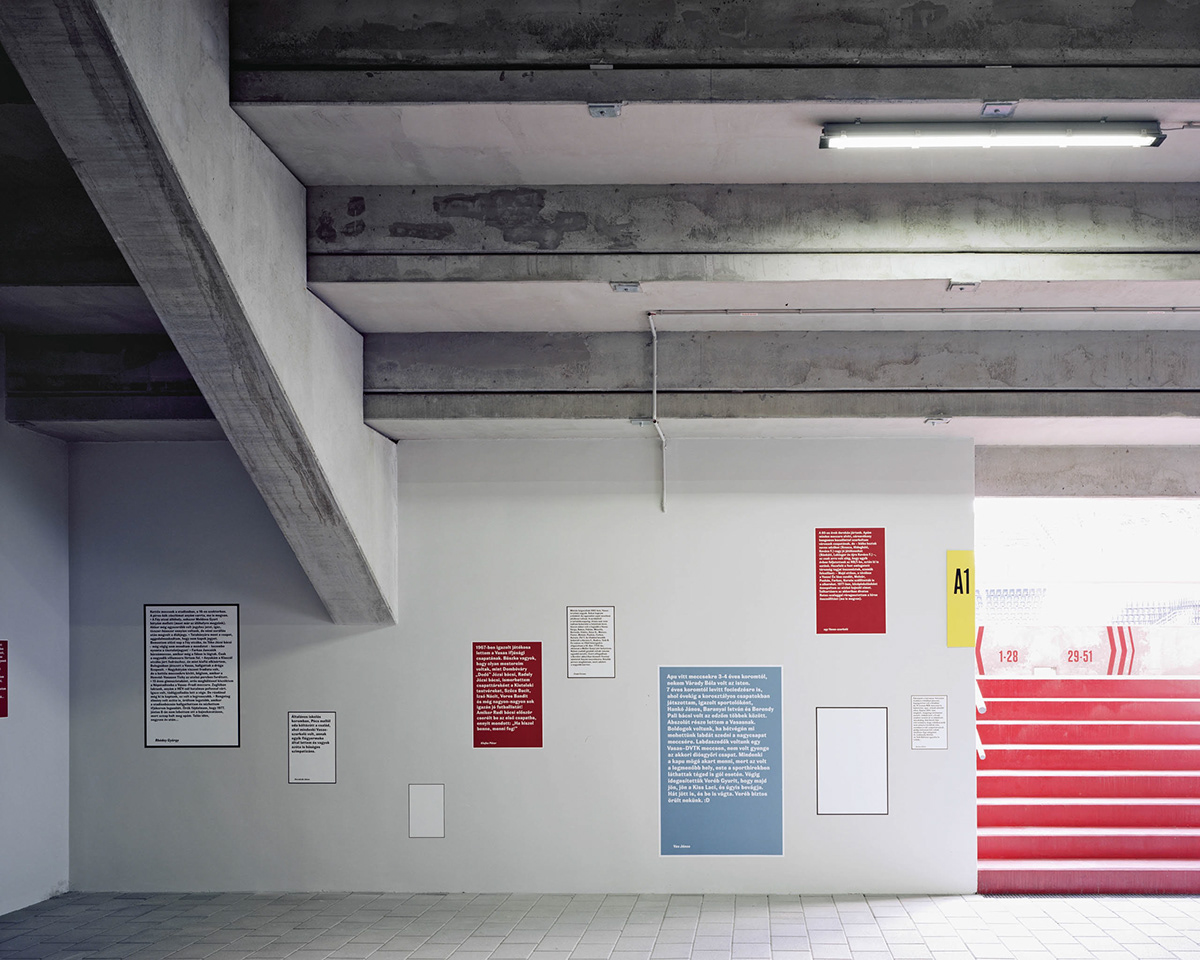
North Stand
Angyalföld graffiti wall
– Supporters’ folklore
The stand for our loudest and most enthusiastic supporters is a space for a looser, graffiti-like composition, an unfinished recollection of being a supporter of Vasas on panels. The toolkit of being a fan – the memory of being an active supporter of the ’80s and ’90s with the subjective recollections of art director Zalán Péter Salát.
The series of drawings features eight themes with loose brushes of wall paint in a street art style on three large-scale wall surfaces in a narrow space.
The themes are as follows:
– The folklore of identifying with Angyalföld
– City graffiti, leaving an imprint
– The infinitely long, knitted red and blue scarf
– Vasas songs, rhymes: chants
– Button football, the first umbilical cord
– Unfurling the flag, the beginning of the movement
– The pub as a space for fans’ rites
– The peak of football gastronomy: nibbles – sunflower seeds, shells spit out
Interestingly the objects appearing on the walls are not illustrations, rather concrete motifs discovered with careful research. For example, the scarf of one of the most well-known fans, Gyuri Veres, the button football set belonging to former champion centre forward Ignác Izsó, as well as the famous slogan on a white sheet “Oleg the King”. Brief descriptions, stories and the artists’ satirical and self-ironic contemplations connected with the themes are also part of the graphic art on the walls.
The folklore of identifying with Angyalföld
Angyalföld (Land of Angels) – the most beautiful name, in contrast with the image of the workers’ district with its former factory chimneys and heavy industry. Reality painted on the verge of a dream. What does the word A n g y a l f ö l d mean?
Urban graffiti, leaving an imprint
“This is the district I bleed for proudly” – the words on the wall tattooed by an anonymous Angyalföld author disappeared without trace, together with the demolished, shabby, old Fáy Street ticket-office building, which was painted sky blue. Scrawling, a sign of demonstrating where you belong, is a kind of communication method and has the function of marking out a territory. The semantic contents of leaving an imprint are: It is Us and Who we are, letting future supporters know that we belong to the same fate, a declaration of solidarity, evidence of supporters’ tourism, massage board of the times and guerrilla advertising. We tag everywhere, on exercise books, pencil cases, tree trunks, steamed-up windows … The aim is to manifest that we are for Vasas.
The infinitely long, knitted red and blue scarf
Every community has its own stories. It is rather difficult to recognize the traditions of our own time, and thus we turn to the past. Let us not only pay attention to something archaic, unique or unusual, but also to what is well-known within the community. The original striped red and blue scarf, knitted or crocheted by mothers, grandmothers or girlfriends, which has become emblematic due to being used by huge numbers of fans and is represented as graphic art on the wall, is a memento of our supporter György Veres. Vasas supporters began wearing the club’s colours in this form in the 1970s. The nearly three-metre-long scarf was once wound around the neck, its tasselled ends reaching the wearer’s ankles. Perhaps the most unusual story in connection with the scarf concerns what happened in Bucharest in 1985. Then our unrivalled water polo team played against Dinamo in the CWC final in Pitești. A small group of Vasas supporters with scarves round their necks accompanied the team for the return match. When changing at the railway station they ran into fans of Dinamo’s greatest rival in the city, supporters of Steaua. They looked our fans up and down: who could the strange Hungarian group be with red and blue scarves around their necks reaching the ground? The colours were actually their own team colours – the supporters of the Romanian military team wore red and blue like those of Vasas. There were tense moments, but the shared colours and the common enemy brought the two groups together and the Steaua fans supported Vasas against Dinamo on the day of the unforgettable cup victory. Thus the Vasas scarf with its magic power connects us, Vasas supporters, throughout generations spanning decades.
Vasas songs, rhymes: chants
The joint, self-organised singing, forming a choir, is the constant experience of becoming one and belonging to each other, sharing a common vibration, faith and emotions. “Ode to joy or a song of mourning”. It is a monophonic, community-developing, atmospheric force conducted by the ‘chorus leader’, who stands at the top of the hierarchy. Joint chanting, joint ‘prayer’, the rumbling noise of jumping up and down together, the sounds of feeling the same.
Button football, the first umbilical cord
It is the birth of the game, choosing a team for the first time, the composition of colours and the bond. It is a tool for learning to compete against each other with rules and modelling football on the ground. The stylised graphic art on the wall models the Vasas button football team from the collection of the legendary striker Ignác Izsó. In the age of digitization the role of button football is being replaced by game consoles, contests in virtual space, football managements and online championships.
Unfurling the flag, the beginning of the movement
Decorating the supporters’ surroundings, something clearly visible, supporters’ “external cover”, clothing as a border line between our inner self and the outside world. It defines “Us”. It is the main symbol of comradeship, carrier of colours and the fabric for identifying the teams. A cotton cloth is a sign of presence, a brief, outspoken message to fellow supporters, the adored or at that moment criticised team and the opponent. Making a banner is a creative activity for the artisan community, but it can also represent the self-expression of an individual fan. The collective idea and implementation turn into building a community. They use graphic art and typography almost on an artistic level, with results ranging from the simple to the well-worked-out. They fuse visual design with pyrotechnics in the age of ultras.
The pub as a space for fans’ rites
Pubs or taverns are special communal spaces for a transition from everyday life to a festive mood. A supporter’s narrative: “Before games fans frequented Mama Csori’s tavern at the corner of Fáy and Frangepán Streets. That was a real Vasas pub. I was a young boy and me and my dad always went there. Mamma Csori was a powerfully built woman with great authority. Whenever there was a fight she jumped between the men and immediately set it right. My dad went in to have a pint of beer, while I stayed outside in the garden. At that point János Kádár, Hungary’s communist leader, came up to me, pressed a boiled egg and a bar of chocolate in my hand, then he gulped down his pint of beer. After that we walked over to the stadium together to support our team.”
When you step into the Vasas bubble social differences fade. It does not matter who you are, what your identity is, what you do, where you came from, where you’re going, it is WE the A n g y a l f ö l d people in the slumbering inns of the district.
The peak of football gastronomy: nibbles – sunflower seeds, shells spit out
Eating sunflower seeds and spitting out the shells takes unnoticed possession of you. Once you start, it is impossible to stop. It calms the brain, improves sight and makes the body energetic. Sunflower seeds are rich in magnesium and copper; they can reduce blood pressure and blood sugar levels. They fortify the immune system and the risk of developing heart disease is reduced among those who eat sunflower seeds. After cracking a handful of salted ones, your lips become dry and it doesn’t do much good for your finger pads and teeth. Yet, if you like nibbling roasted sunflower seeds, do not deprive yourself of the joy this passion brings.
Supporters’ manifestations
– Angyalföld oral history
In January 2017 we sent out a questionnaire to Vasas addicts. We asked them to share their memorable stories connected with the Club or with Rudolf Illovszky, to write about their feelings, tell us stories. Several hundred people responded, producing unique, moving, humorous, sad and human stories. They all expressed the feeling of belonging to Vasas for generations.
These manifestations present a type of communal memory map, highlighting commitment to the club, the legacy of traditions and all the micro-stories which form parts of the past, yet are also alive in the present and affect the future. The responses having been processed, 225 are rendered on the walls in spaces used by spectators leading to the home stands. The replies show that supporting the club goes from father to son, thus the area below the East Stand was named “Father to Son Promenade”.
The history fragments with their authors’ names appear as part of the Shirt Geometry installation below the stand, on the wall at the side of the pitch by the North Stand and in the covered corridors by the West, and thus supporters become part of history telling. The club would like to set up a tradition with this mission such that the project can become a continuously extendable installation with a growing number of micro-stories.
Silent pomp
– The crest
In the beginning the character of the crest of the Vasas Sport Club with its industrial roots emphatically referred to this tradition: the letters with heavy bases resembling the shape of an anvil, red representing fire which is essential for milling metal, and blue on the scale of colours symbolizing water created together the emblem identified with Vasas for decades. Due to a recent stylizing trend, the character of the crest has to a large extent been simplified and it is currently in that form. The crest itself is a heart-warming symbol for supporters. As a result, the crest, which has a diameter of nearly two metres and is created from an exclusive material, occupies the wall above the prominent counter of the VIP lobby.
An aluminium alloy developed by the brand DVNE established in Milan was used as basic material. It is surface treated, has a high light intensity and is itself coloured. Due to its unique reflective pigmentation and our design of a geometric background pattern, it shows itself differently during different parts of the day and is highly decorative with its own noble and simple splendour.
A special story also welded together Vasas with the Milanese manufacturers. In February 1967 Vasas won the Hexagonal Trophy held in South America, which would not have been possible without the cooperation of Inter Milan. In the previous year Inter bid farewell to our team in the eighth finals of the European Champion Clubs’ Cup on 8 December 1966. Nevertheless, friendly relations were kept between the two teams. So when, due to its championship engagements, Inter Milan was not able to participate in the Chilean tournament in 1967, Vasas could travel instead and won the Hexagonal Trophy, the story of which has been a peak in the team’s history ever since.
Just like almost everyone in Milan, the manufacturers of the Vasas crest are also football supporters, moreover loyal fans of the city’s black and blue team. Nothing proves better that football enthusiasm is a feeling without borders than the fact that by the end of making the crest a group of Milanese Vasas fans made friends.
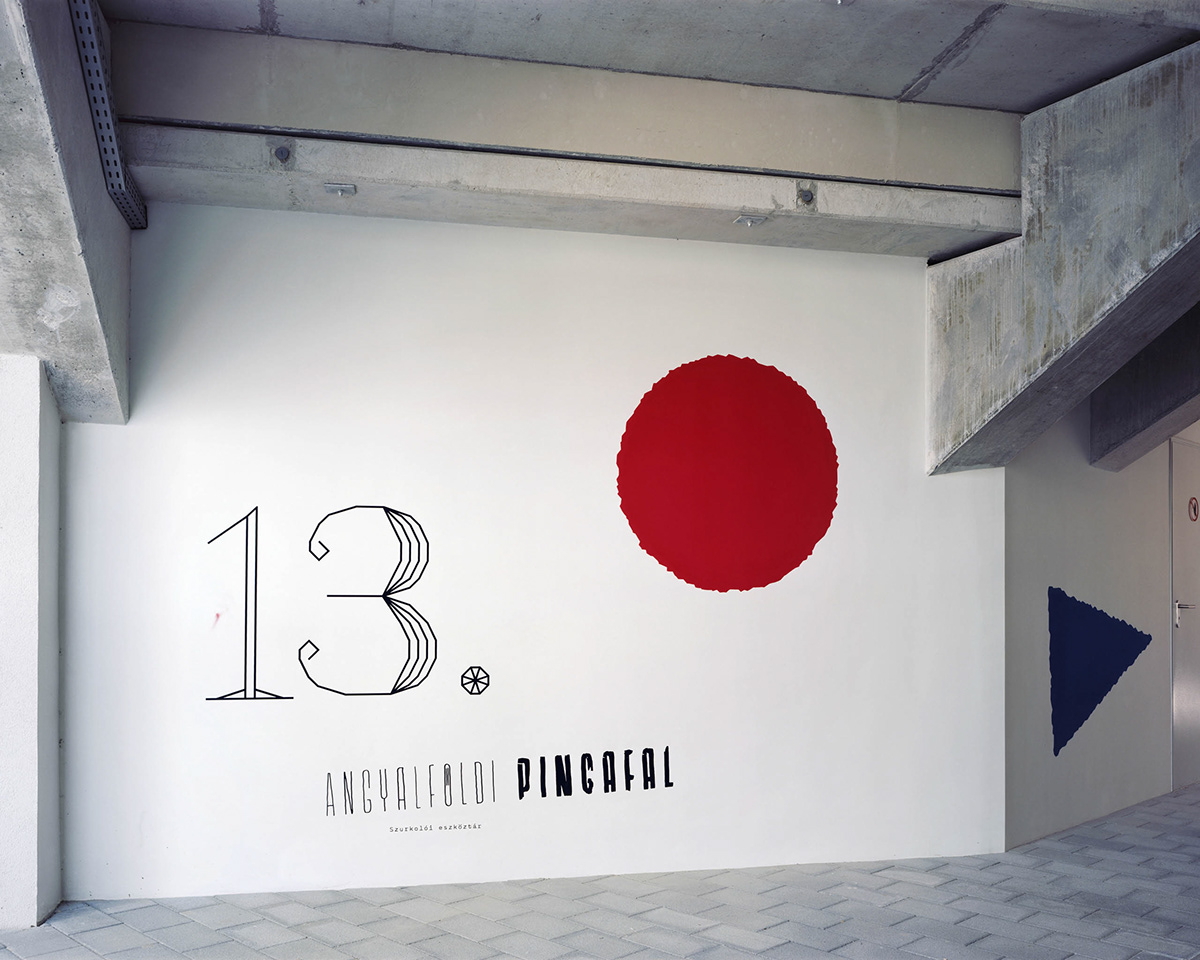
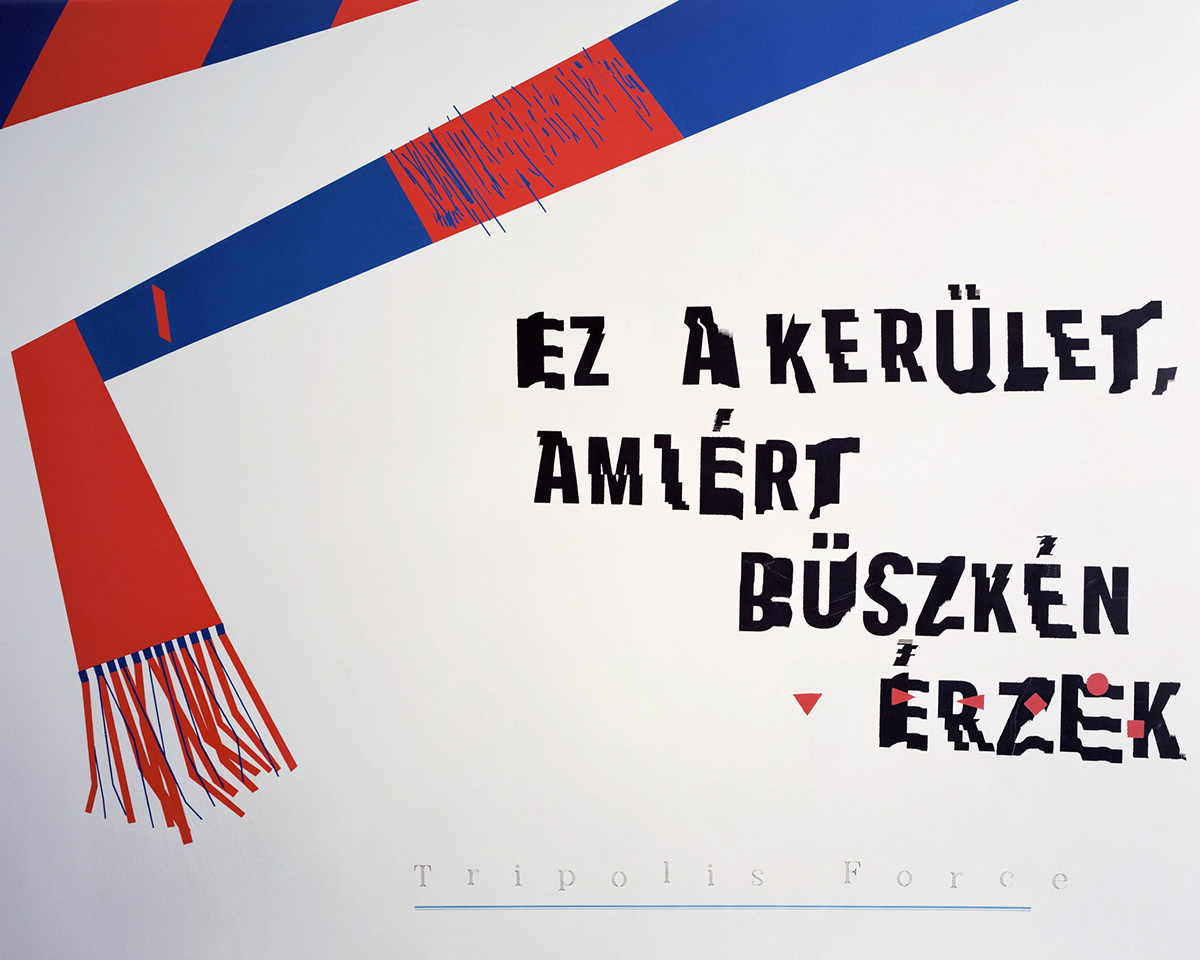
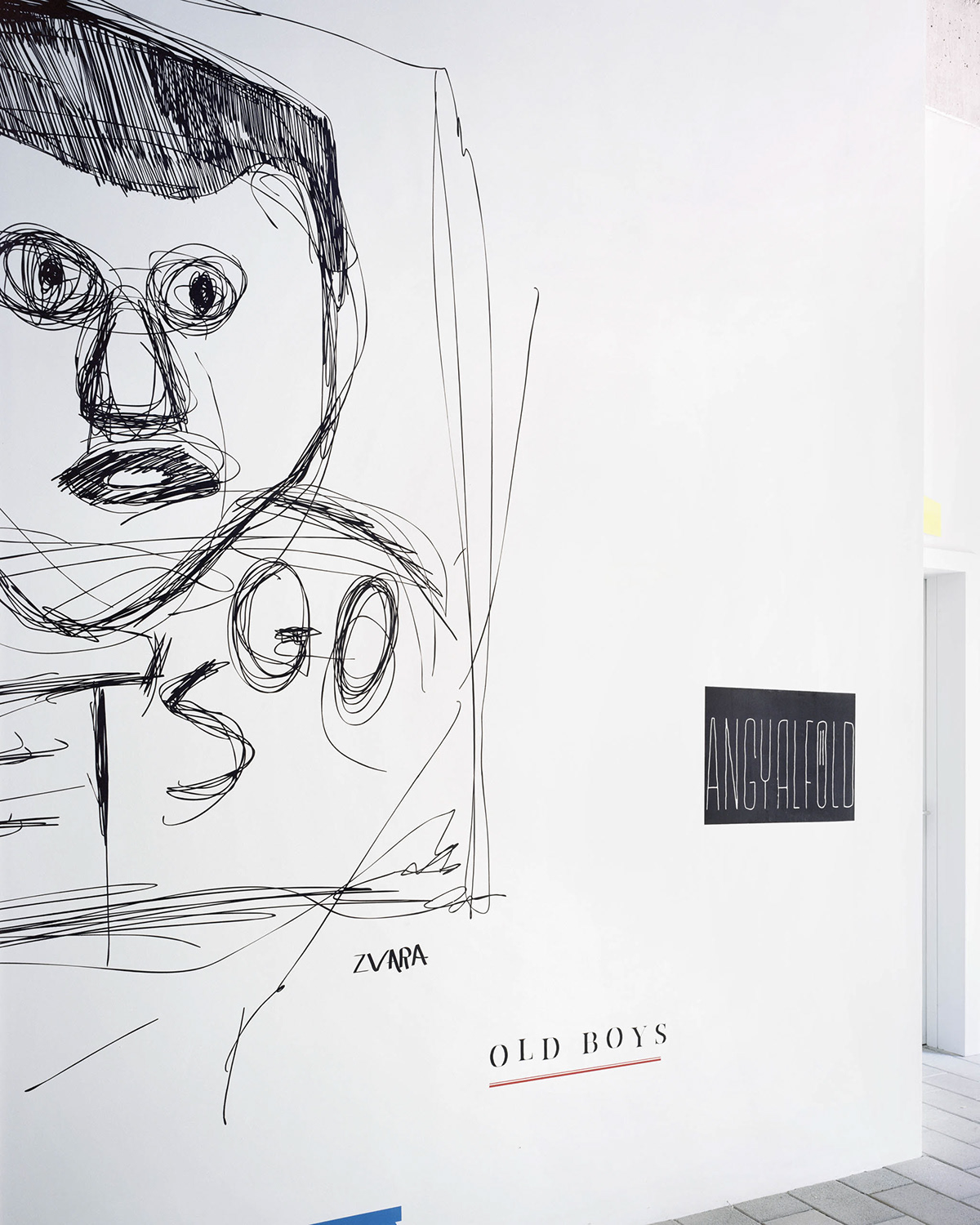
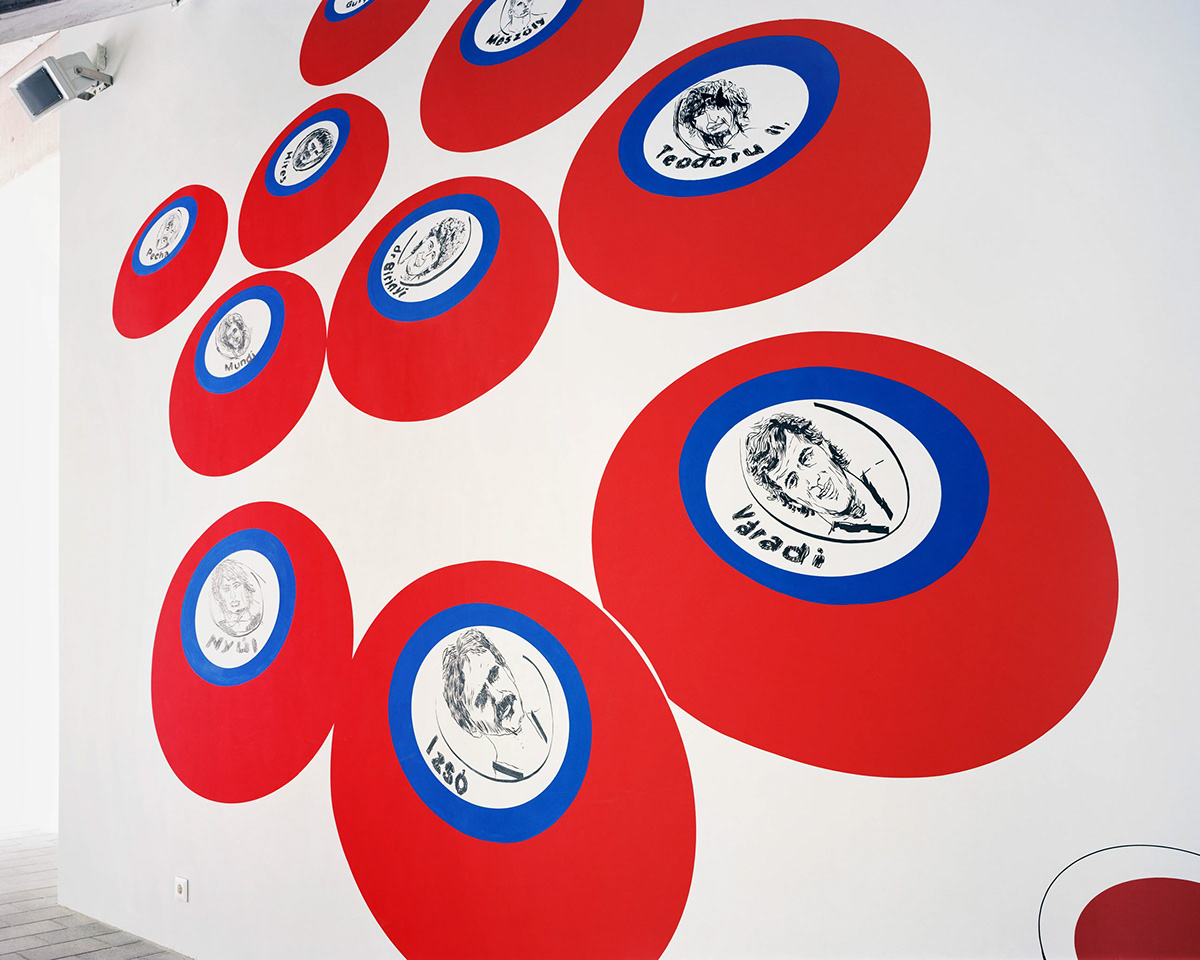

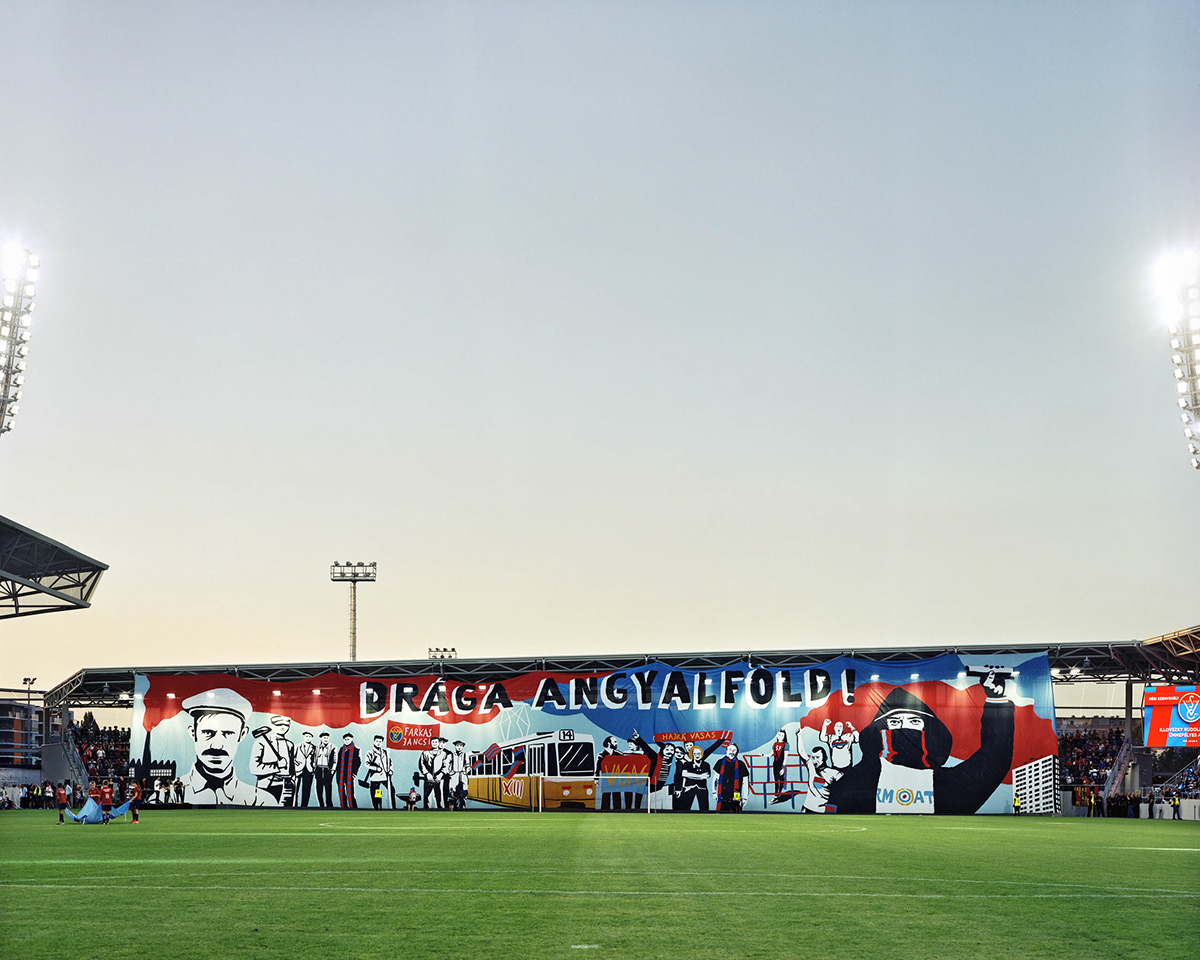

Familiar and unknown Vasas fans put their arms around me, kissed me, kept clasping my hand, passed me from one to another, waved to me, shouted “Mr Designer”. I handed over the stadium amidst the approval of the supporters. Design has done what it had to do. Standing in front of the “pages” of the heavy steel-plate book, they are reading extracts of history and talk to me about reliving their experience. Shirt Geometry turned into a 64✕4 metre studio background and a selfie wall. Queuing before the From Father to Son drawing, fathers, mothers, sons, daughters, grandfathers and grandmothers hold each other’s hands and photos are taken with their backs to the camera … Leaning close to the supporters’ manifestations, children are reading the personal stories of those who witnessed past times. It will become a place of pilgrimage. I do not know what is happening at the North or the West Stand, I am at the East Stand – the fans’ old territory.
I must confess tears fill my eyes when I think of the Friday evening in July last year. I would sincerely like to thank you, “dear Angyalföld” supporters for all the affection, recognition and words of joy I received from you in all sorts of ways. Yet, I only did what I had been commissioned to do. I had expected many things, but I must confess I did not anticipate this effect. One of our very old fellow supporters simply said: “This stadium is a gem.” I myself could not summarise more briefly and expressively what the new Illovszky stadium had become. It all began with me writing a message of congratulation to the President of the Club on being elected for his next period – I have always sent a message on such occasions – and I only added that, if possible, seats should not form the words “Come on, Vasas” on the stand. After all, it is a 108-year-old sport and football club. We are a more serious organisation than that. Then it turned into this. I thank all the supporters who helped. Although we were sworn to secrecy during our work, I sometimes had to contact those who knew all. Thank you for being able to have Gyuri Veres’s (and Romanszky’s) iconic, infinitely long knitted red and blue scarf throughout. It was hanging on the handle of my wardrobe and whenever I was tired of work it was enough to glance at the memento from the 1970s. I thank Laci, the President of the Club, for his immense and unconditional trust in me and our small team, which I had never experienced in a working relation from anybody who commissioned me to do a design before. I tried to utilise it and not to misuse it. His love for the club and the community, his fanaticism in a good sense easily gripped us. He took care of us like a father. If needed, he made peace between us. If needed, he argued for our sake and protected us. He obtained everything we asked for within the pale of reason. At the time of my brain surgery he was waiting for my return with patience and great empathy. I will never forget one story. I was giving a presentation concerning the concept of the North Stand at a Thursday meeting about the image of the stadium.
“I have a contract with Vasas for ever, not on paper but verbally. While I am alive, move and am called I will always be there” – Rudolf Illovszky, Pásztó, 12 October 1999. I read out the quote intended for the wall. Twenty years ago Uncle Rudi said that to the local TV channel at the dilapidated grounds of the county’s premier team at a Hungarian Cup match in Pásztó. There was silence. I was moved by the moment, although I thought myself to be calm and collected. Do I see well? Is he wiping his eyes? Has our president been so much moved by Uncle Rudi’s thought? Or by me finding the quote and thinking of it? Is he shedding tears at the meeting? Or did Uncle Rudi drop in to see whether everything was going fine with his Vasas? At that long meeting in the afternoon I understood what the relationship with Uncle Rudi and the Vasas Sport Club meant for our president.
That was how the “gem” was built on bleak industrial land. This is the faith mixed in concrete, the love welded in a steel structure and the commitment hardened in glass which the building radiates.
Zalán Péter Salát
Art director of the Rudolf Illovszky Stadium’s brand image working team

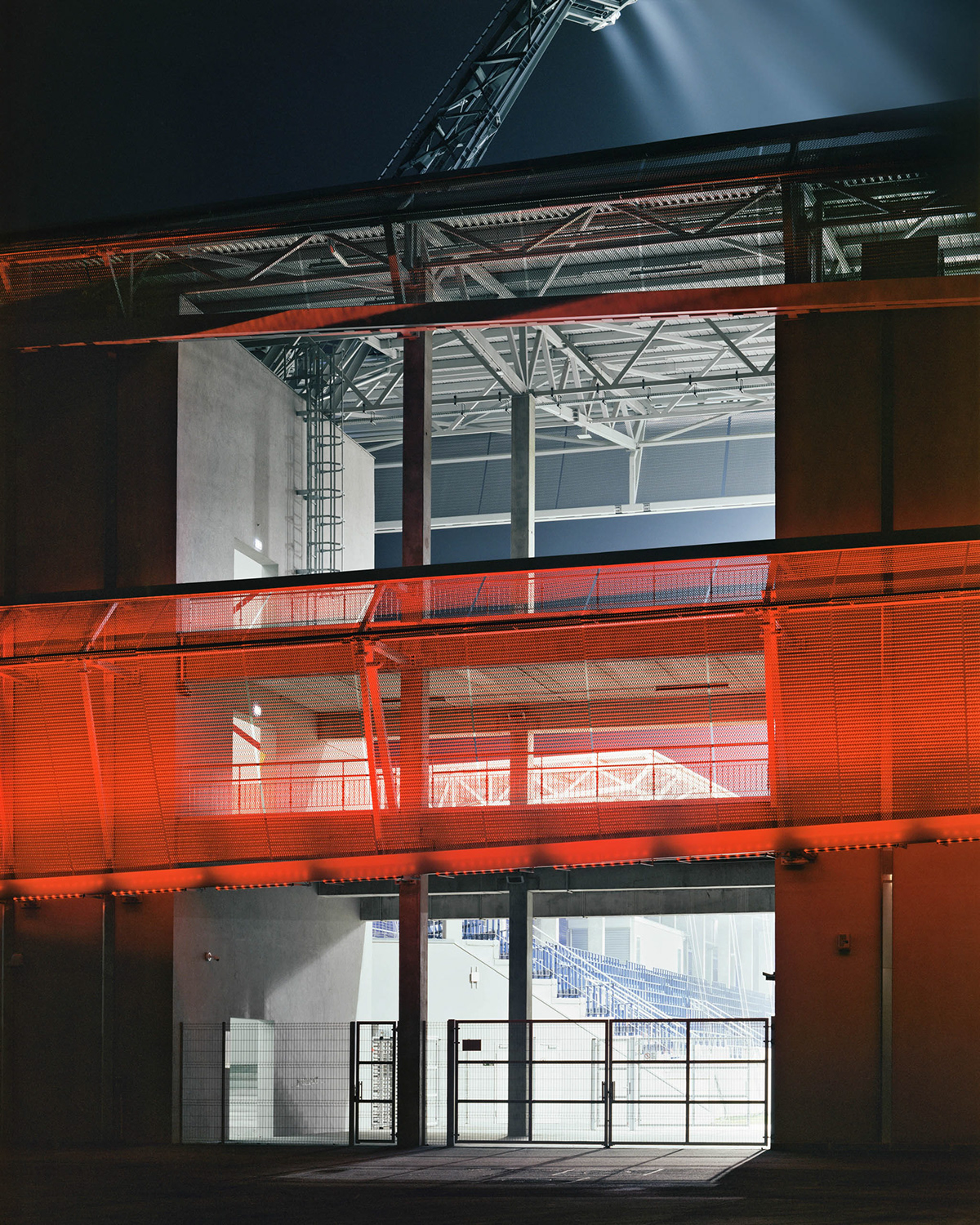
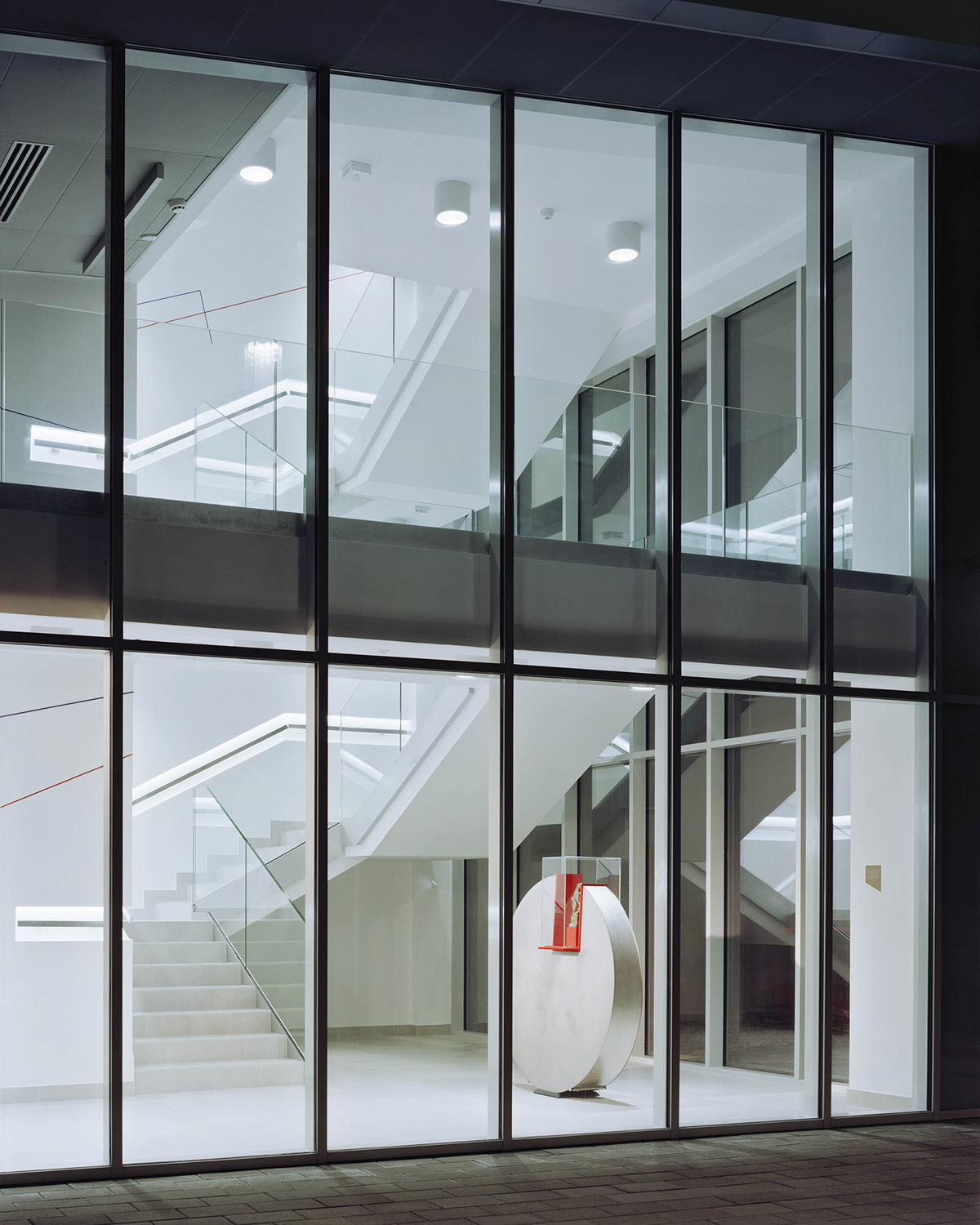
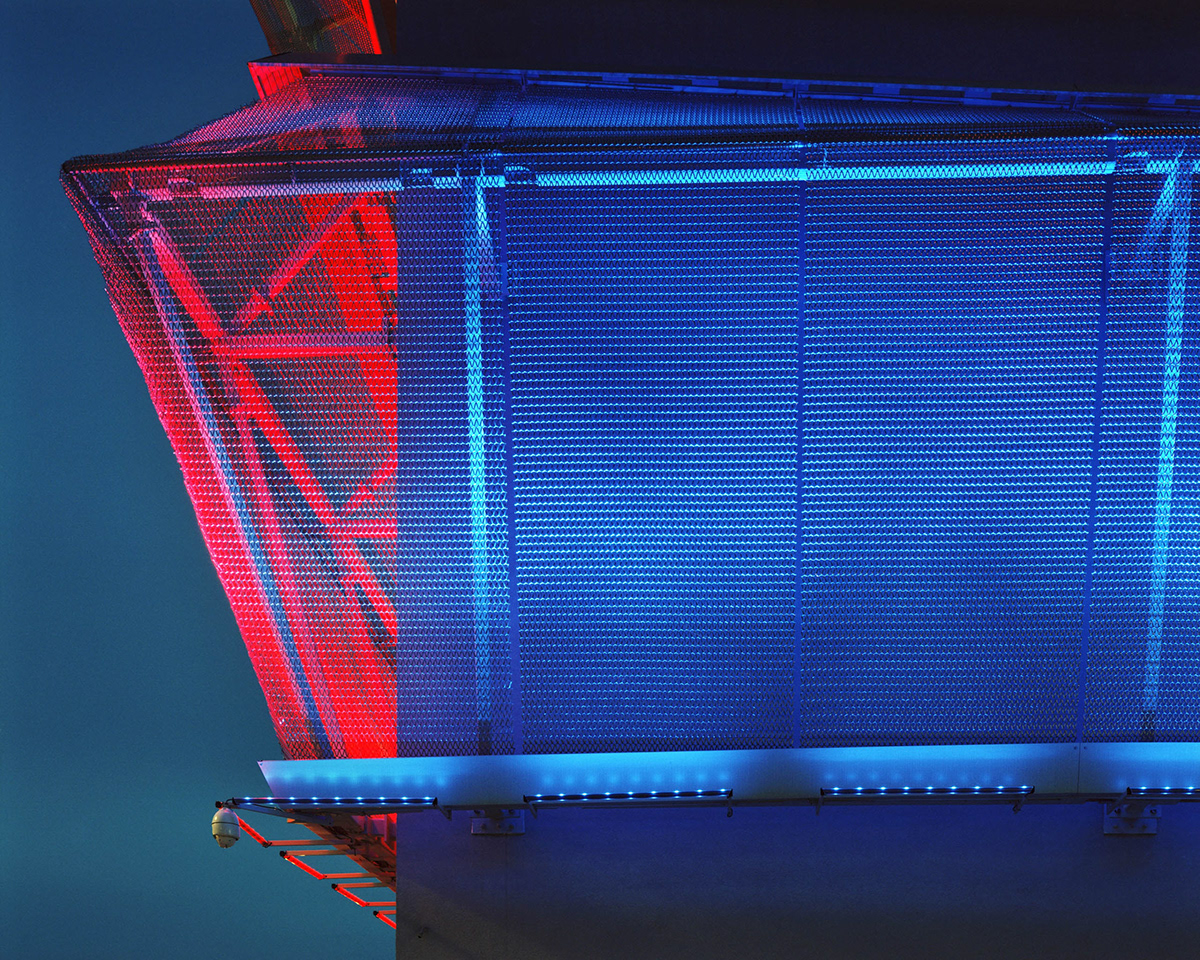
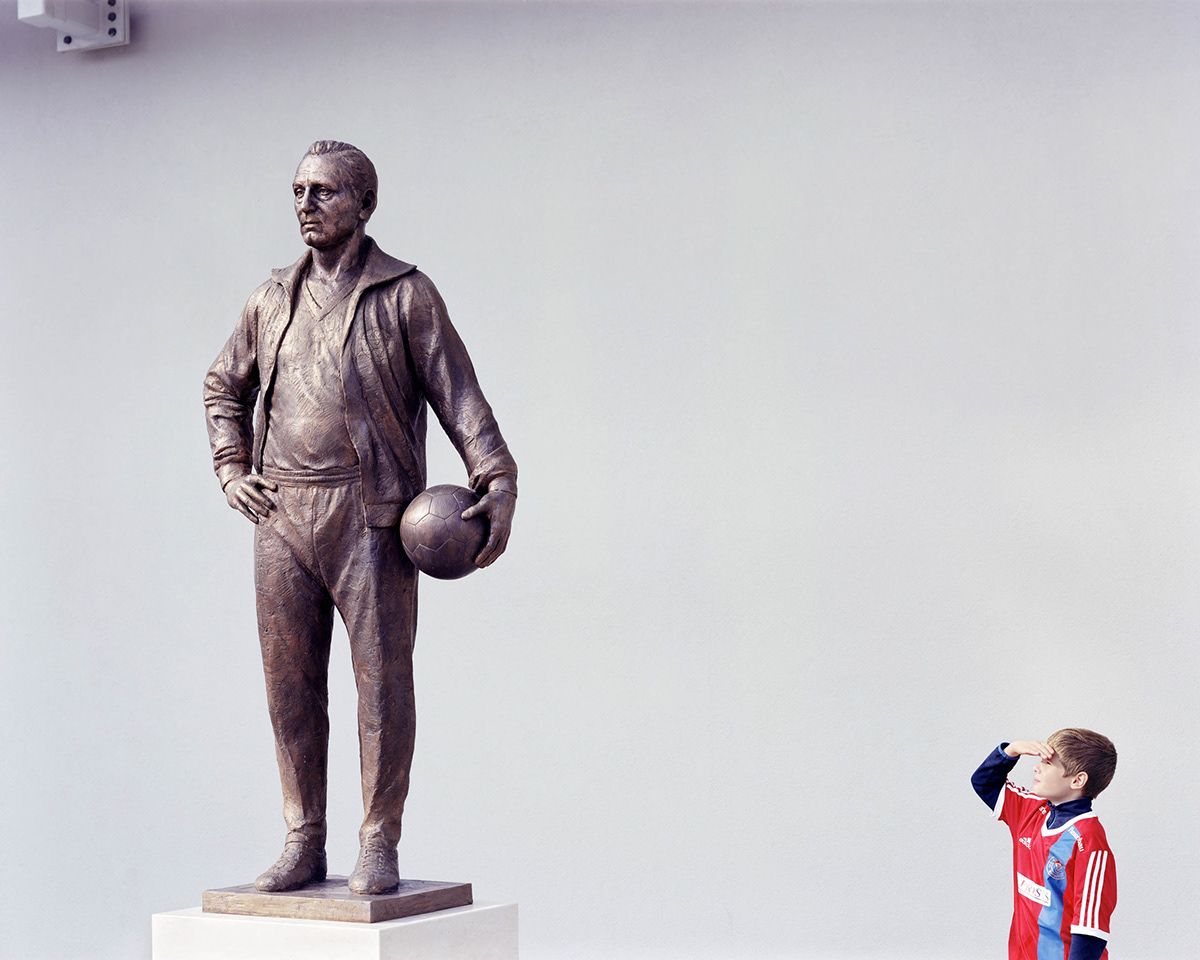
Signalization
– Yellow, black, Plaak and the “swallow tail”
The spirit of the founding conditions is in the focus of architectural concepts. An industrial character and metallic materials dominate both the structure of the building and the materials used for the construction. During the multiple-stage signalization we abstracted the angles and arches provided by the “plates” of the stainless steel mesh surrounding the building, and shaped and varied their forms in such a way that, on the one hand, they would organically merge with the built environment and, on the other, during its functioning its character drawing attention, informing and orienting, would not suffer. It was an appropriate decision to use reliable and hard-wearing metal alloys for carrier materials. When designing an information board system there are two main groups: outdoor and indoor board systems.
Information provided outdoor placed on the façade had to meet the criterion of keeping the homogenous, uninterrupted walling designed by the architects, interfering with it only to a small degree. The objects are concentrated primarily by the access control gates and the areas around the ticket offices. The forms we designed signalling the gates in the colours of the club, referred to as “swallow tails”, are finely fitted to the brutalist, pure wall plane and engage in a dialogue with the steel mesh with its modern building decorative function surrounding the main façade. Thus it sensitively suggests the contents behind the external shell, i.e. the beloved red and blue colours, and belonging to the club. The great difference between the external elements and the interior is expressed in scales and sizes. The visual design had to take into account external factors such as the atmosphere itself, phenomena alternating according to the seasons and parts of the day – rain, sunshine, snow. And people themselves as a crowd can be such a factor. Furthermore, the words Rudolf Illovszky Stadium and Vasas Sport Club appearing on the main façade are an organic part of the design. On the monolithic steel mesh the composition set with unique typography, which is also used on the boards, is special since it appears differently depending on the time of day, thanks to its reflecting material. It glows flaming red at sunset, while it turns sky blue during the daytime.
Designing the indoor information system was a more complicated part of the task. Why was that? Regarding their internal structures the four stands are different; however, the character of the information to be placed in every area had to have the same value. We created a precise ratio system, which can be applied consistently in all four parts of the building.
It has two important characteristic features: yellow that can be separated from everything and information boards protruding at different angles. In many aspects yellow has proved to be suitable for the visual design of indoor spaces. Yellow symbolizing gold has always been a supplementary colour in the crest of Vasas SC, which was applied as strikingly bright yellow in some periods, sometimes golden yellow and perhaps really golden as at present. An even more important character of yellow arguably derives from the physical features of the colour: yellow is a sprawling colour, meaning that the eyes perceive yellow patches optically as areas larger than their real size. The joint contrast between black letters on a yellow base makes the information for people with impaired vision possible, which was a basic principle for us as designers.
The information on the boards uses a contemporary font chosen by us. The Plaak font designed by French typographer Damien Gautier, Stúdió 205TF, was inspired by French metal street signs, which required that street names of significantly different lengths could appear securely and eligibly on the same size of signs. Large spaces or their opposite small and narrow spaces determined the thickness – type of cut – and size of the applied letters. Besides the up-to-date and new typography, a system of icons fitting for the brand new, unique images was also created as part of the stadium’s image. The lines and points of intersections of pictograms were also adapted to the architectural features of the building.
The interior signalization system also contains a horizontal layering. Ordinary supporters’ areas and VIP areas with emphasised and more important prestige can be mentioned. The interior design of the special areas are more decorative and compact in themselves, therefore the board system had to be restructured in that way. The proportions of colours reversed and the more elegant signs with yellow inscriptions on a black base were placed in the areas of higher standard. The division of these spaces induced the design processes to involve a system variable in form and size. The ensemble of these boards was given the name “cobra”.
All in all, the world of characteristic form and colour provides the explicitness for both the exterior and interior spaces, which emanates a good feeling without overstepping the line to interfere with the interior design of the spaces. It always keeps in mind its primary function: a rapid and understandable transfer of multi-level information.
